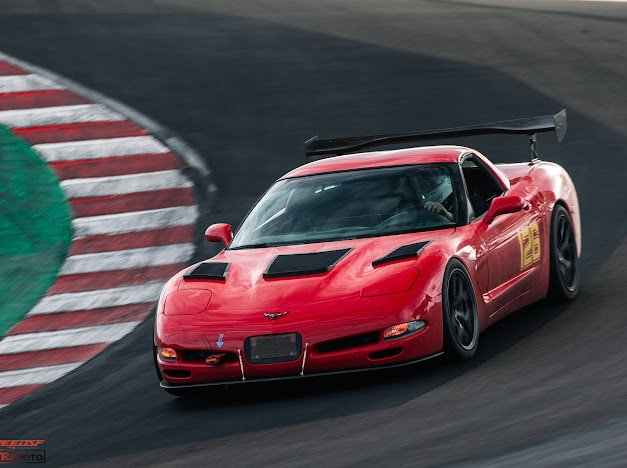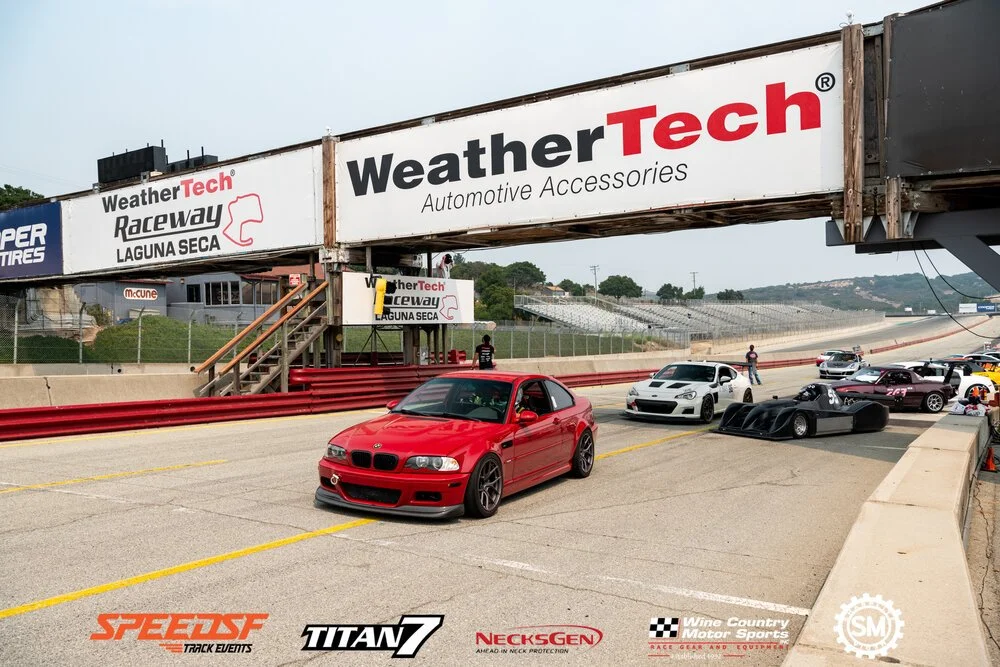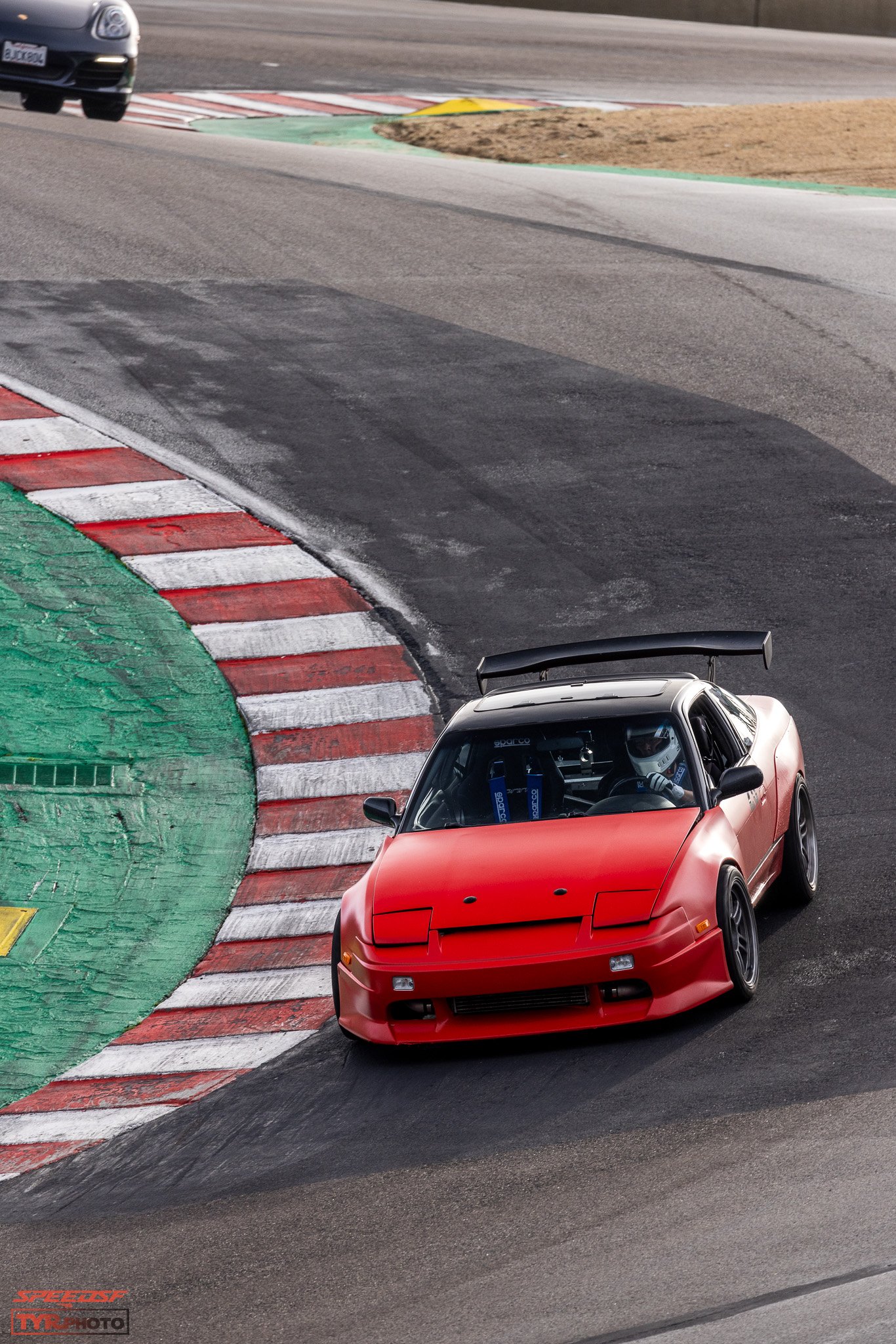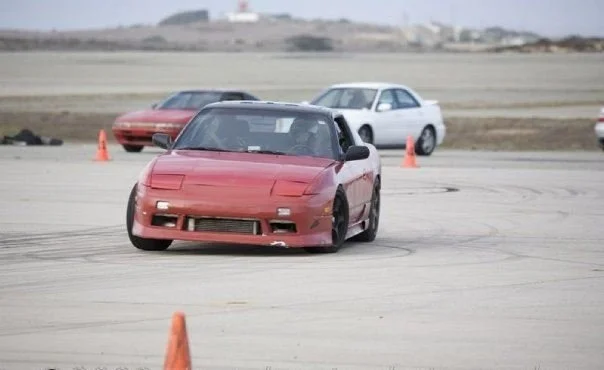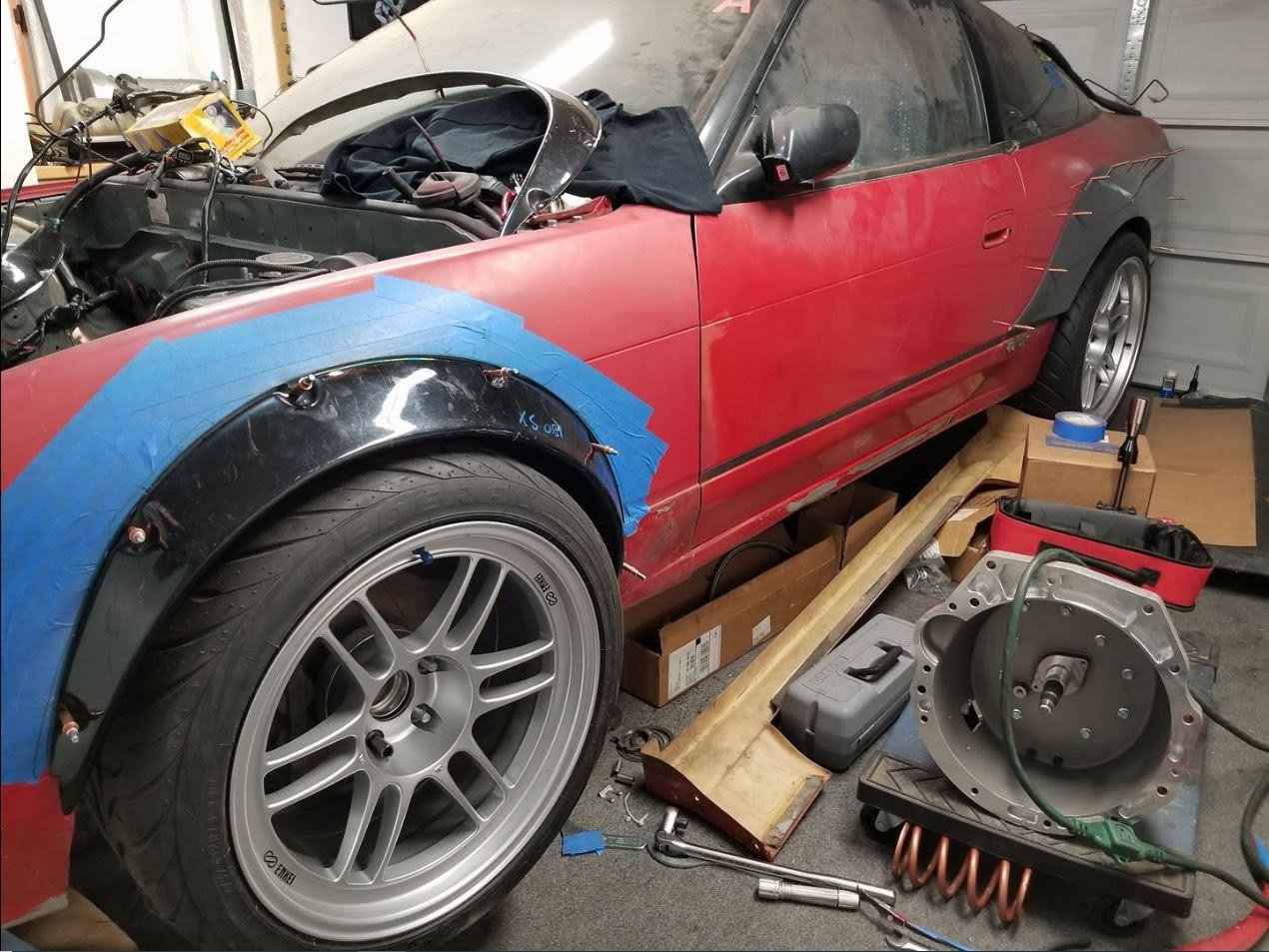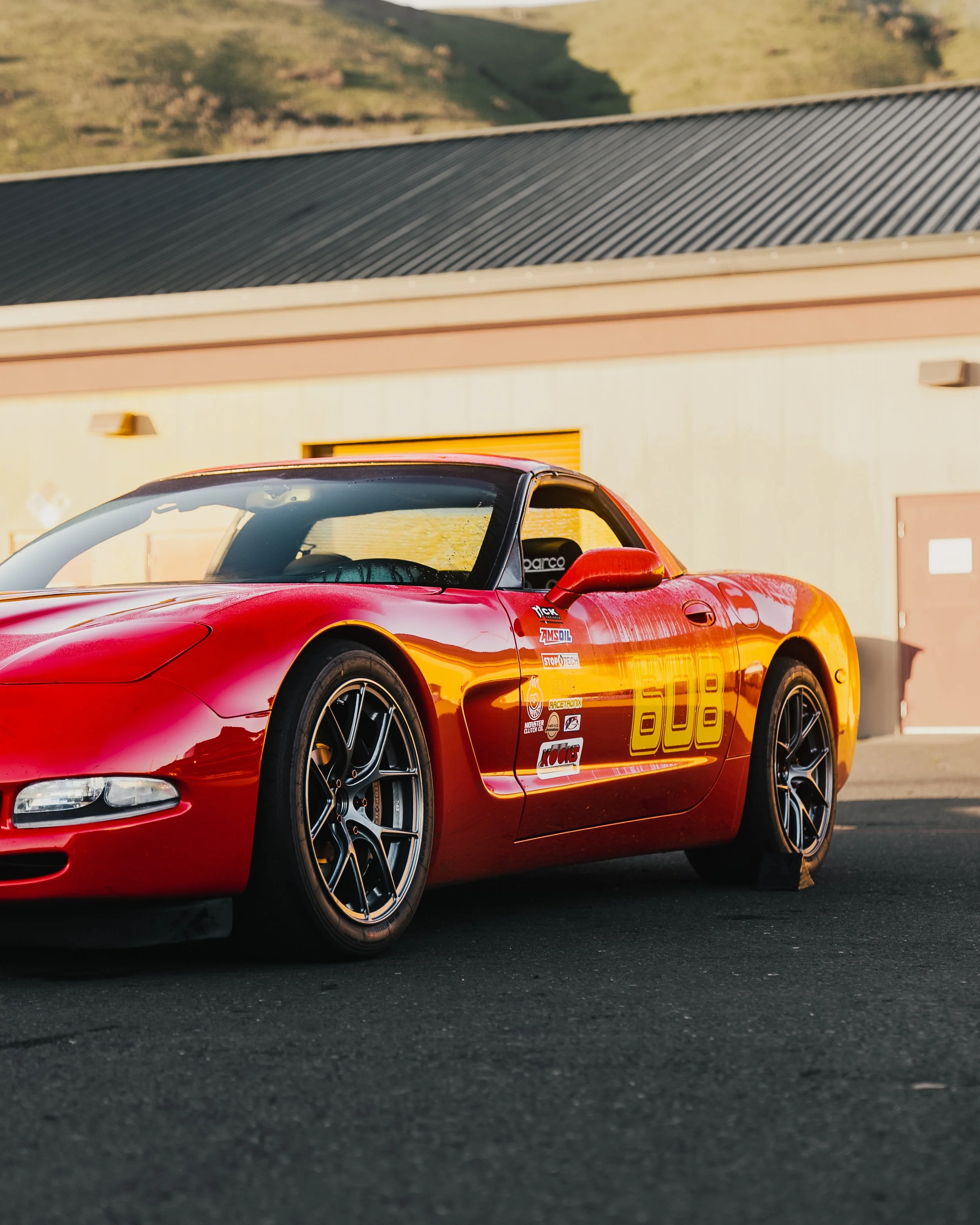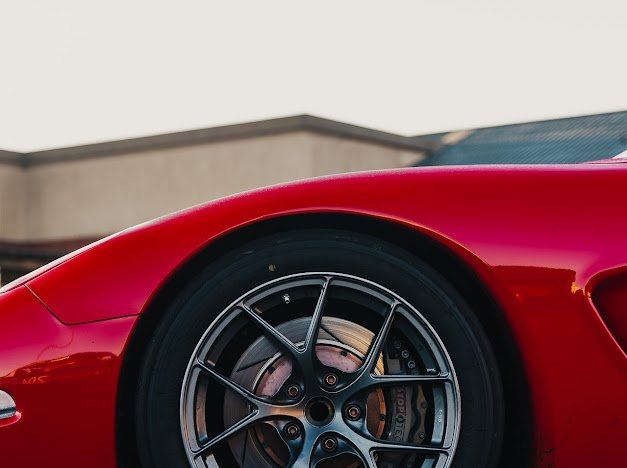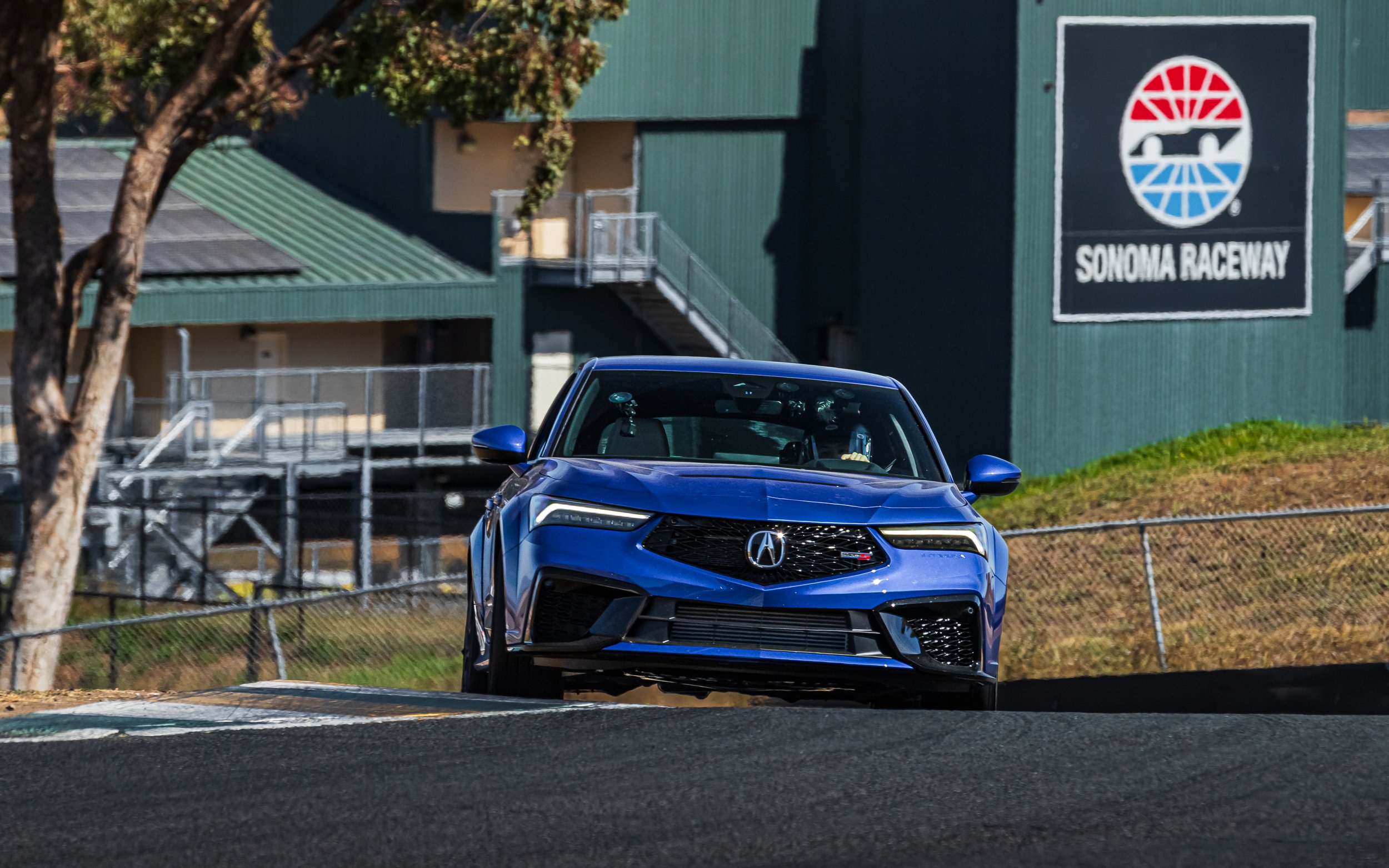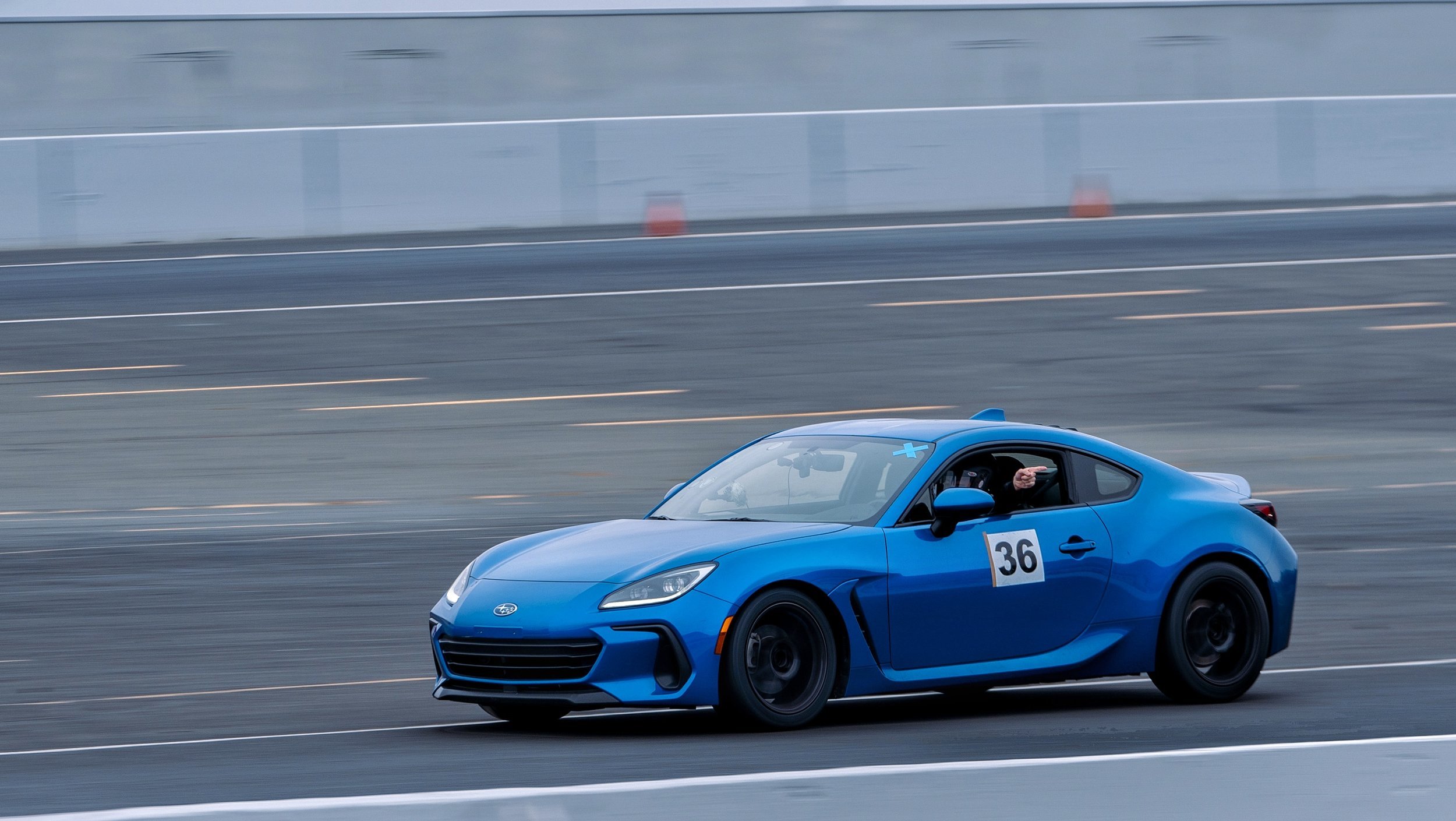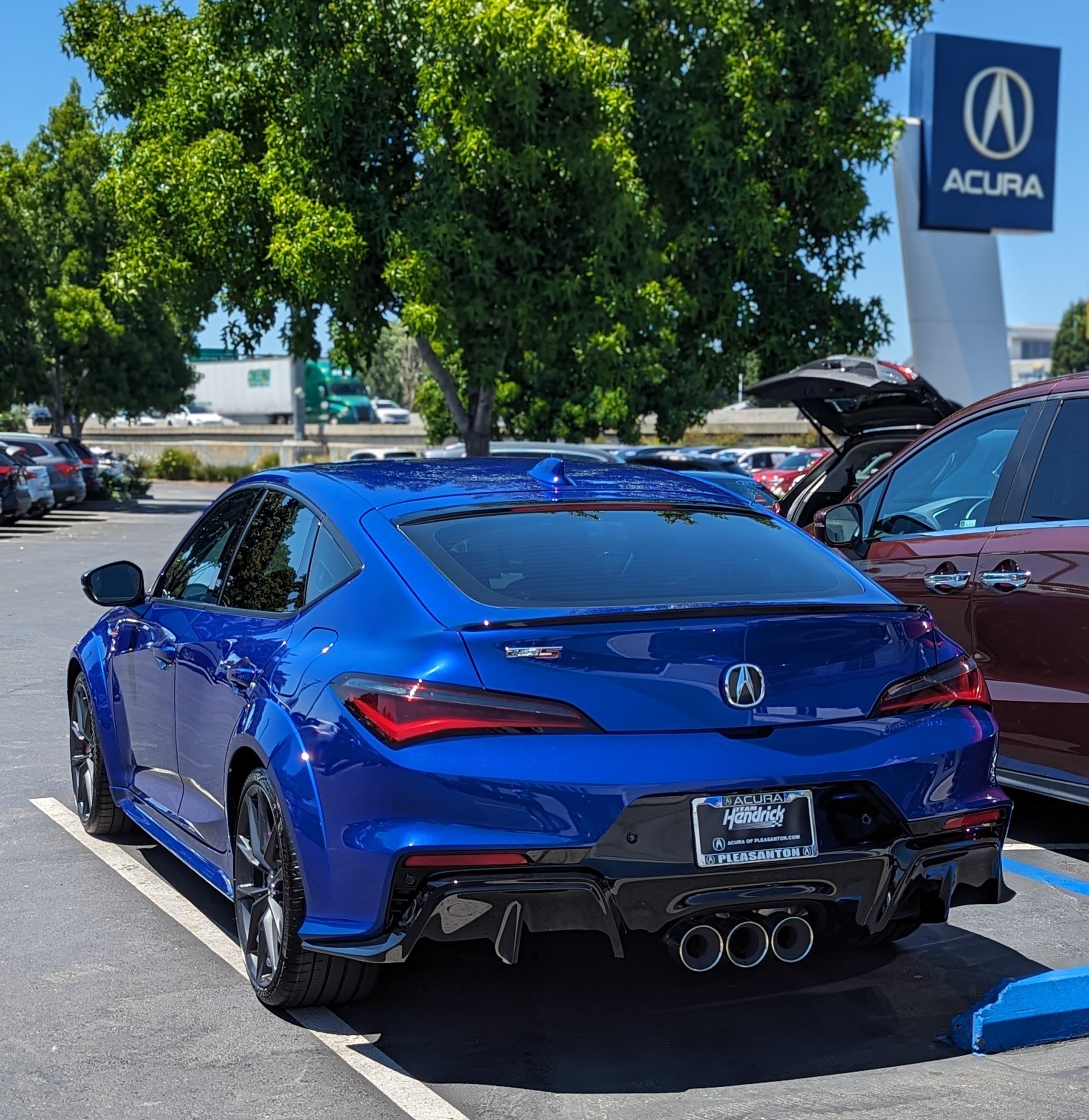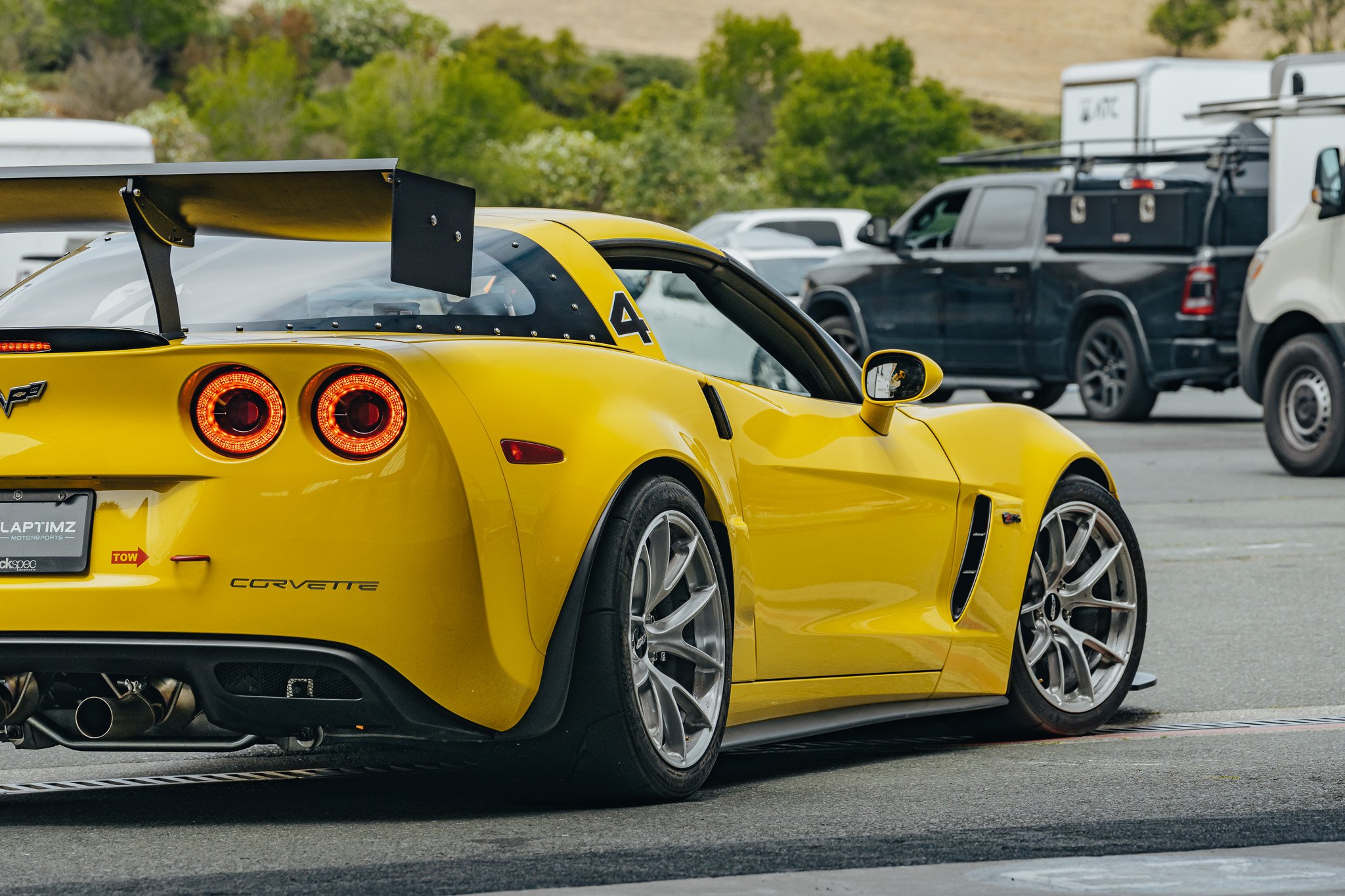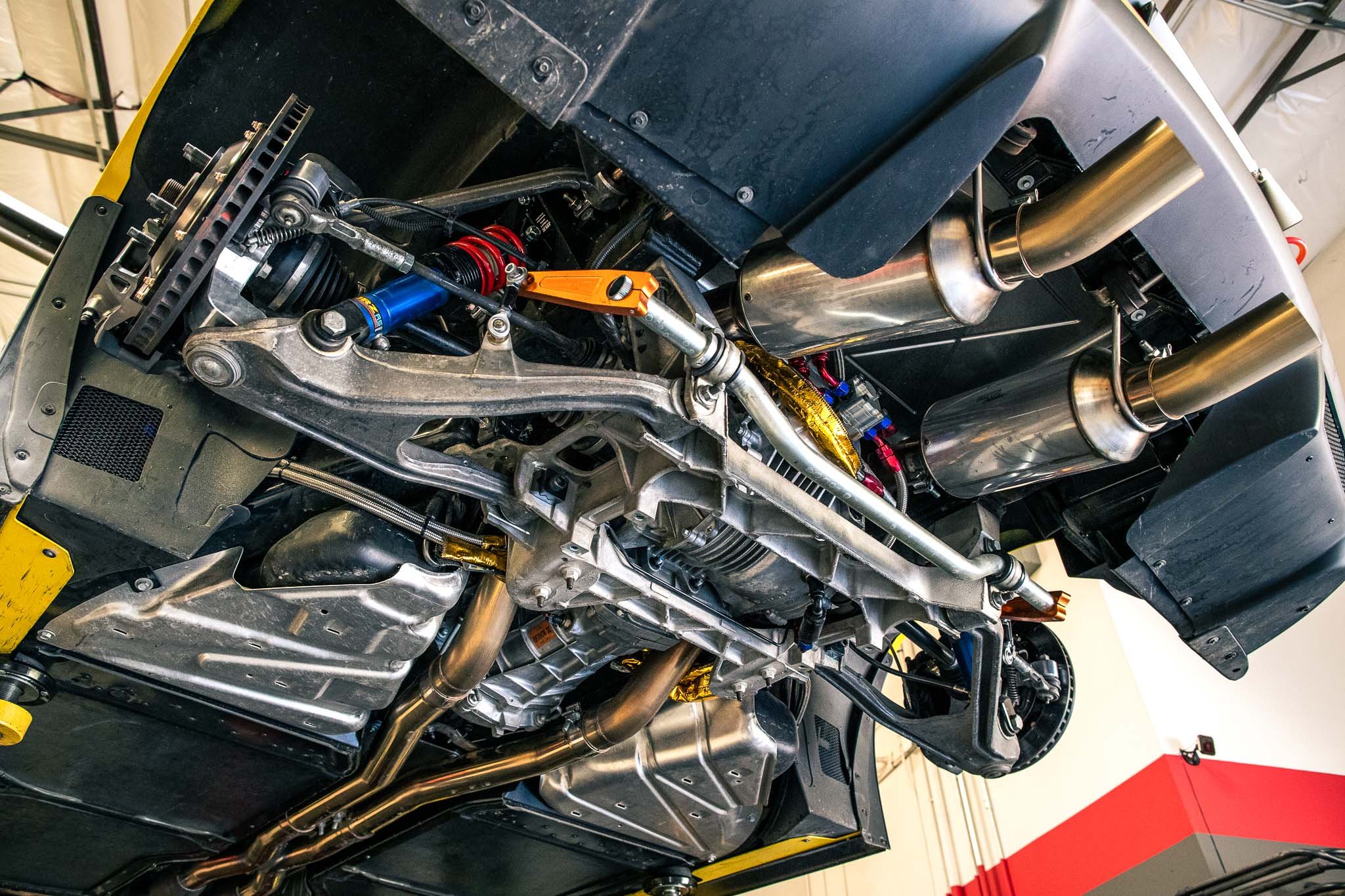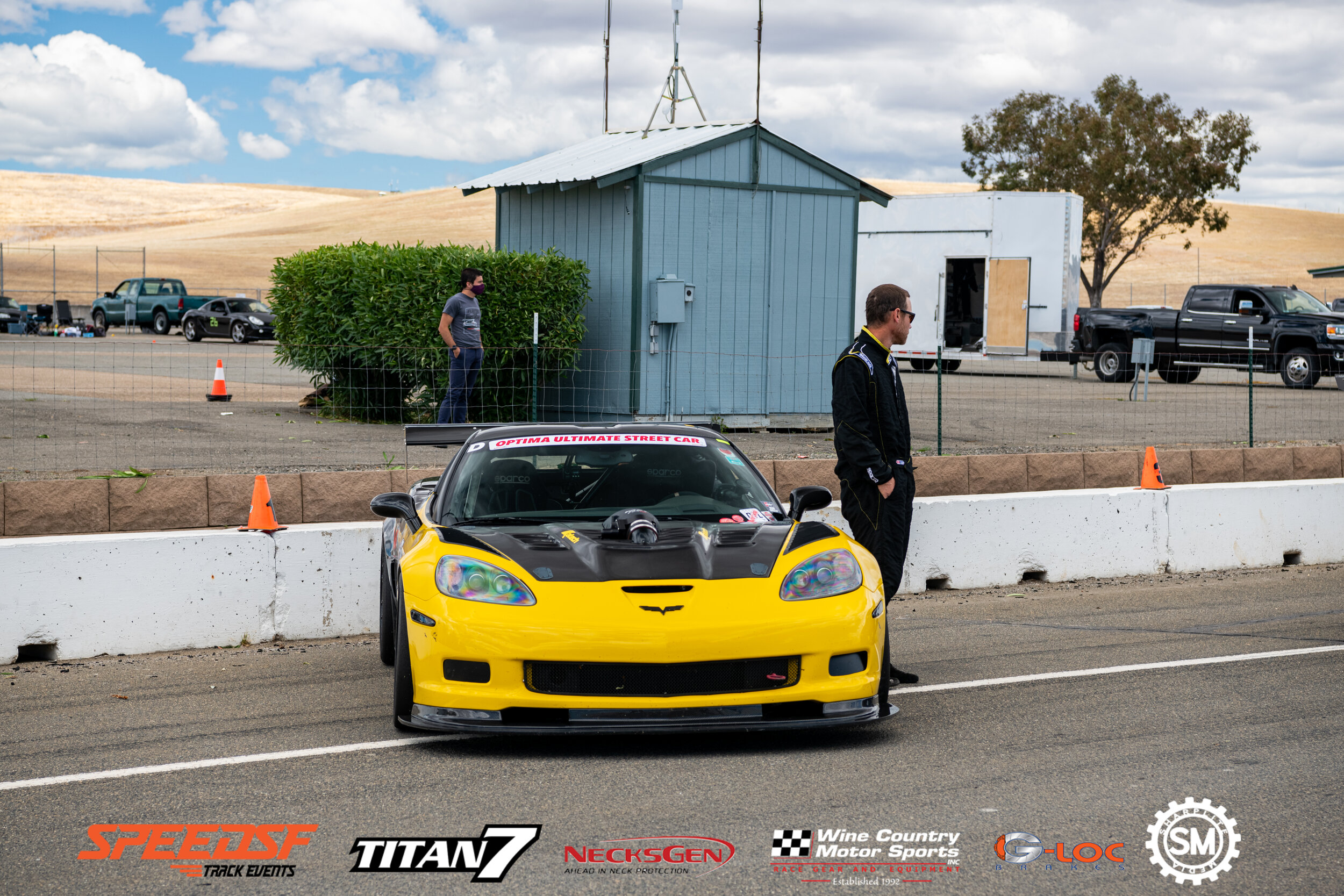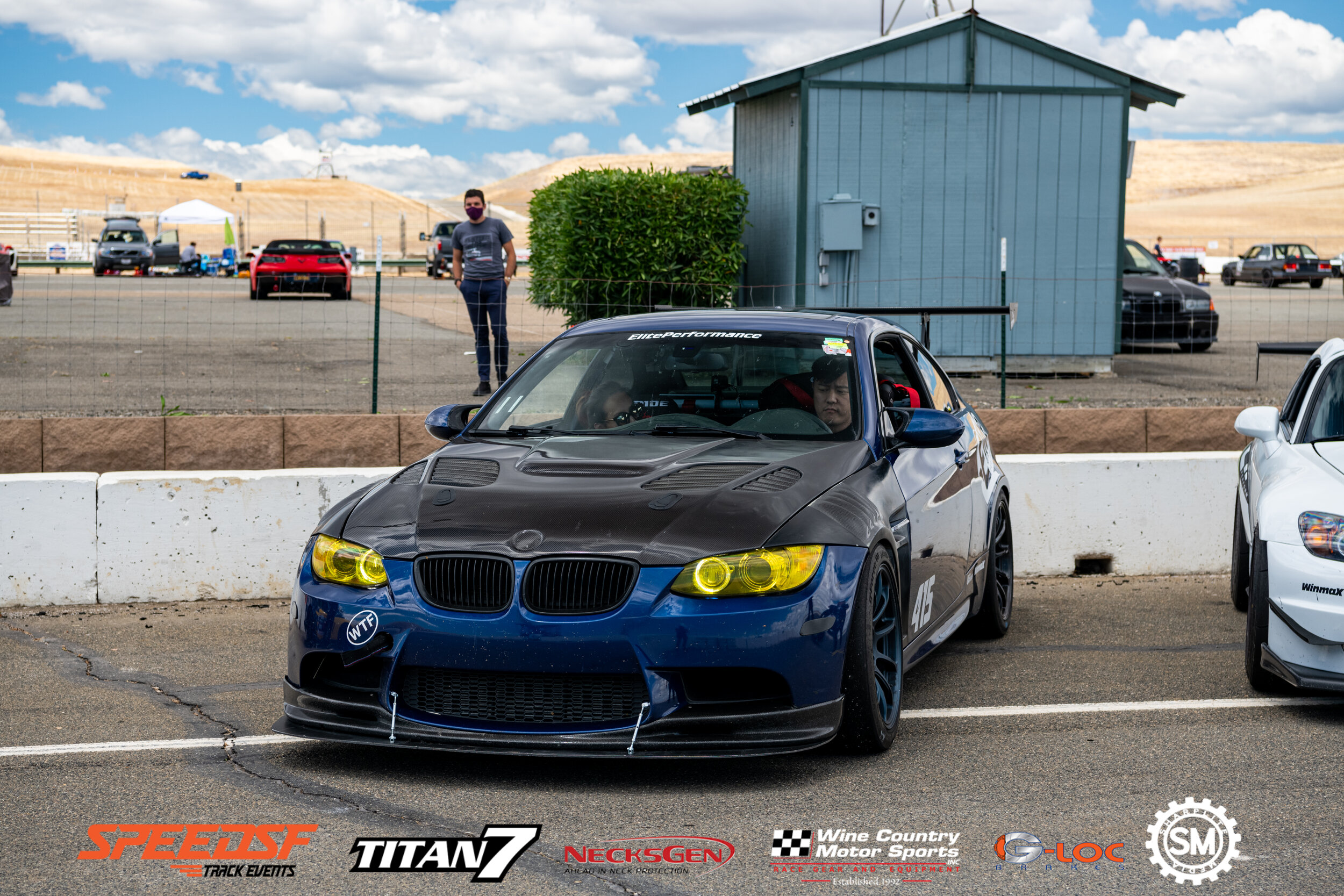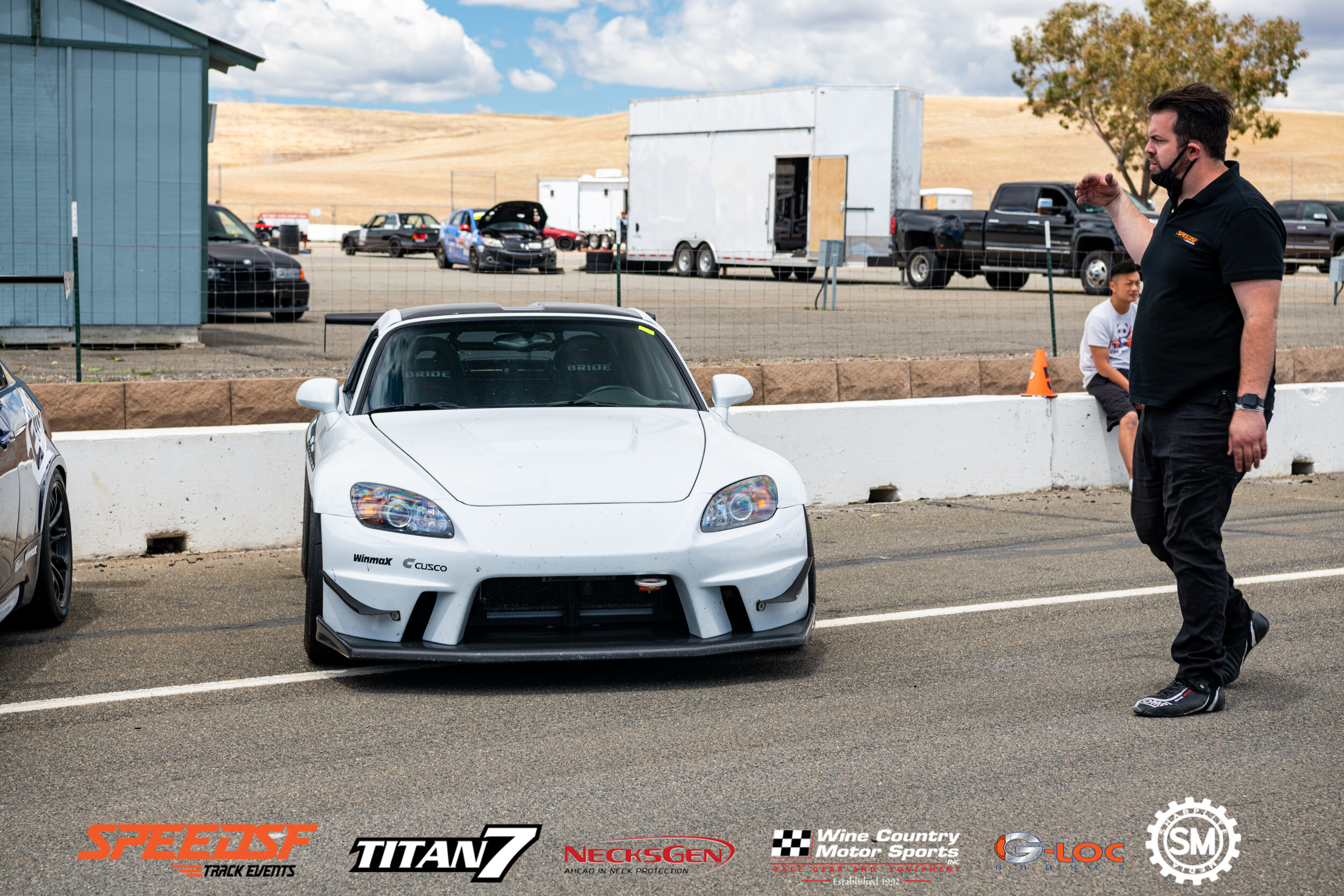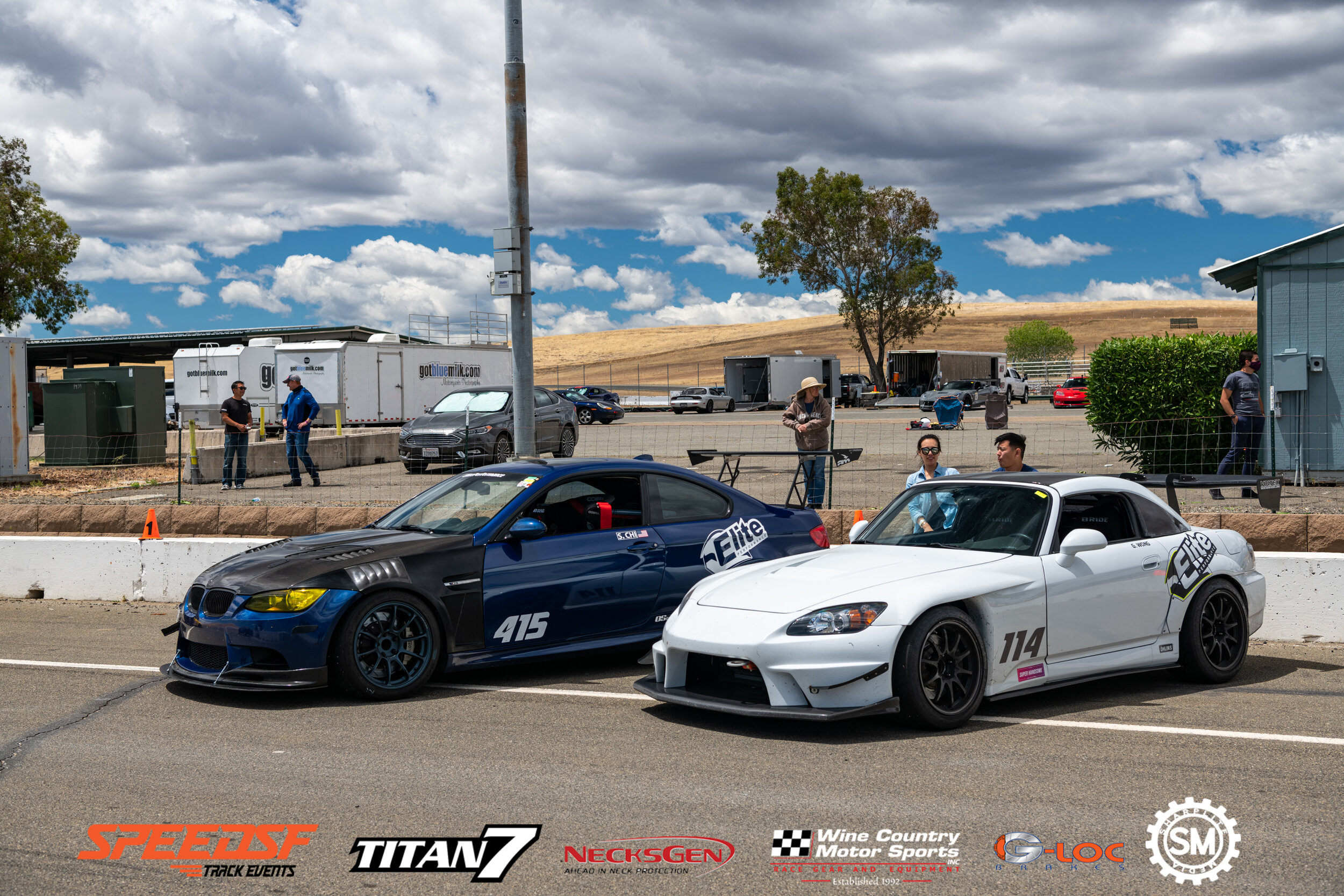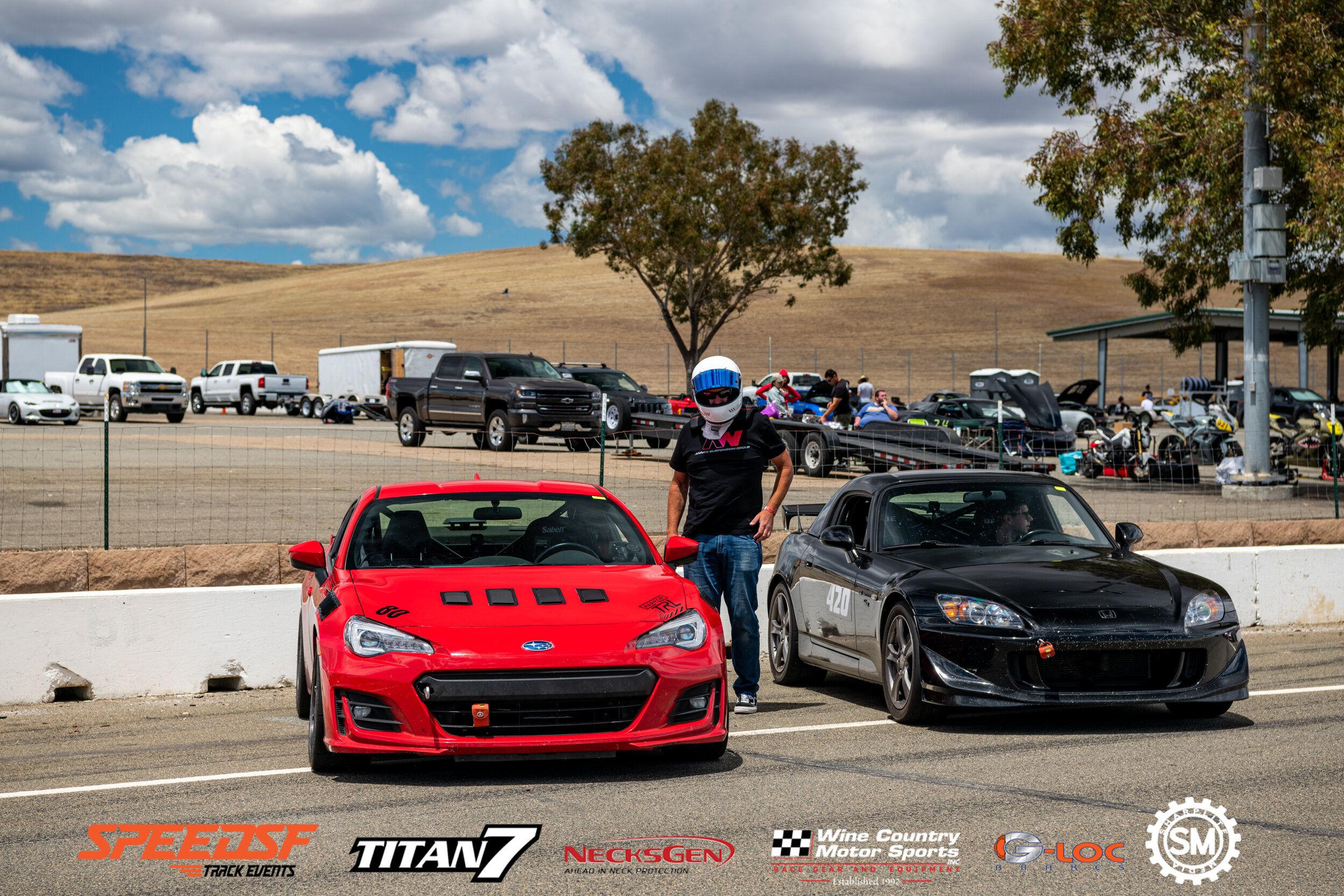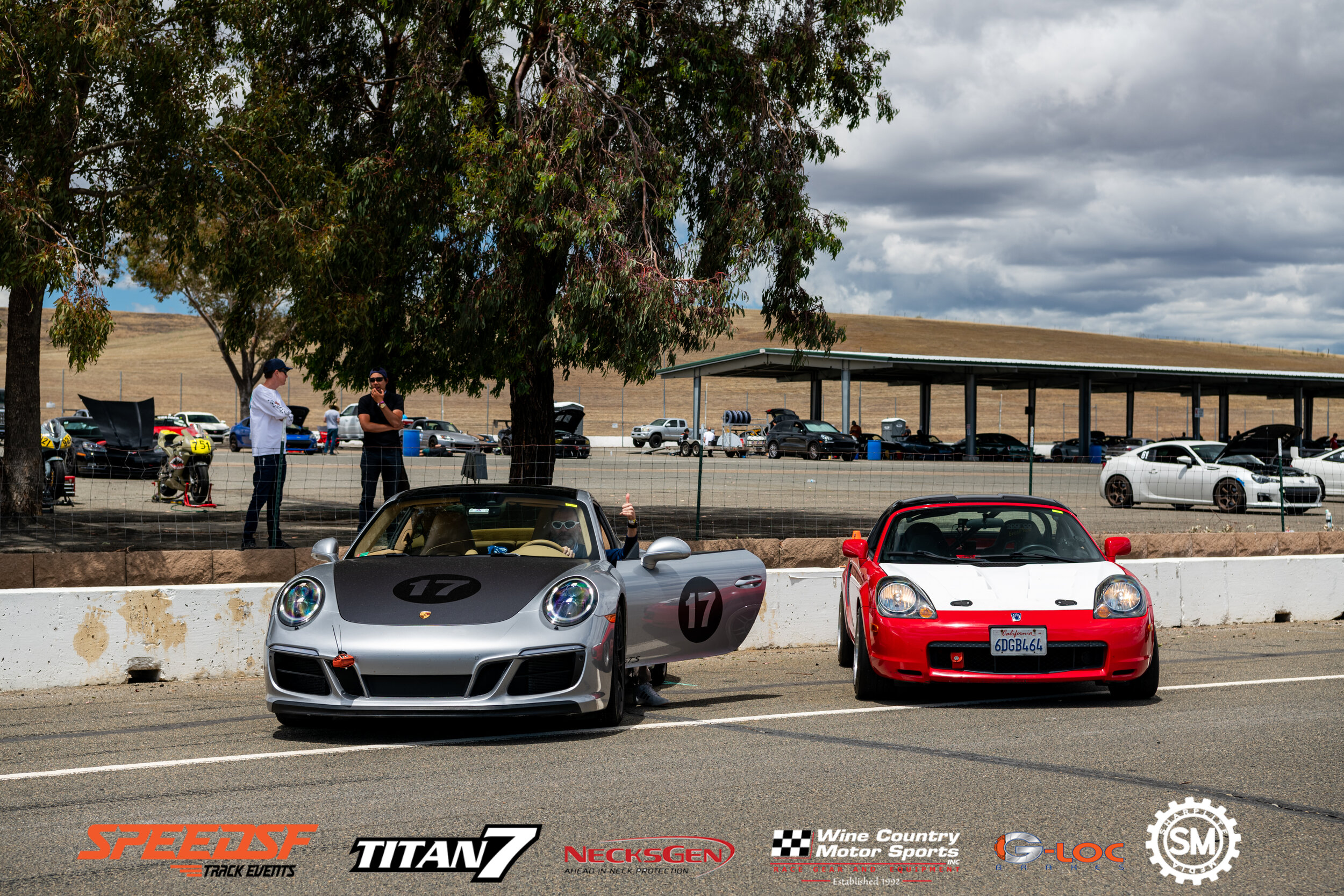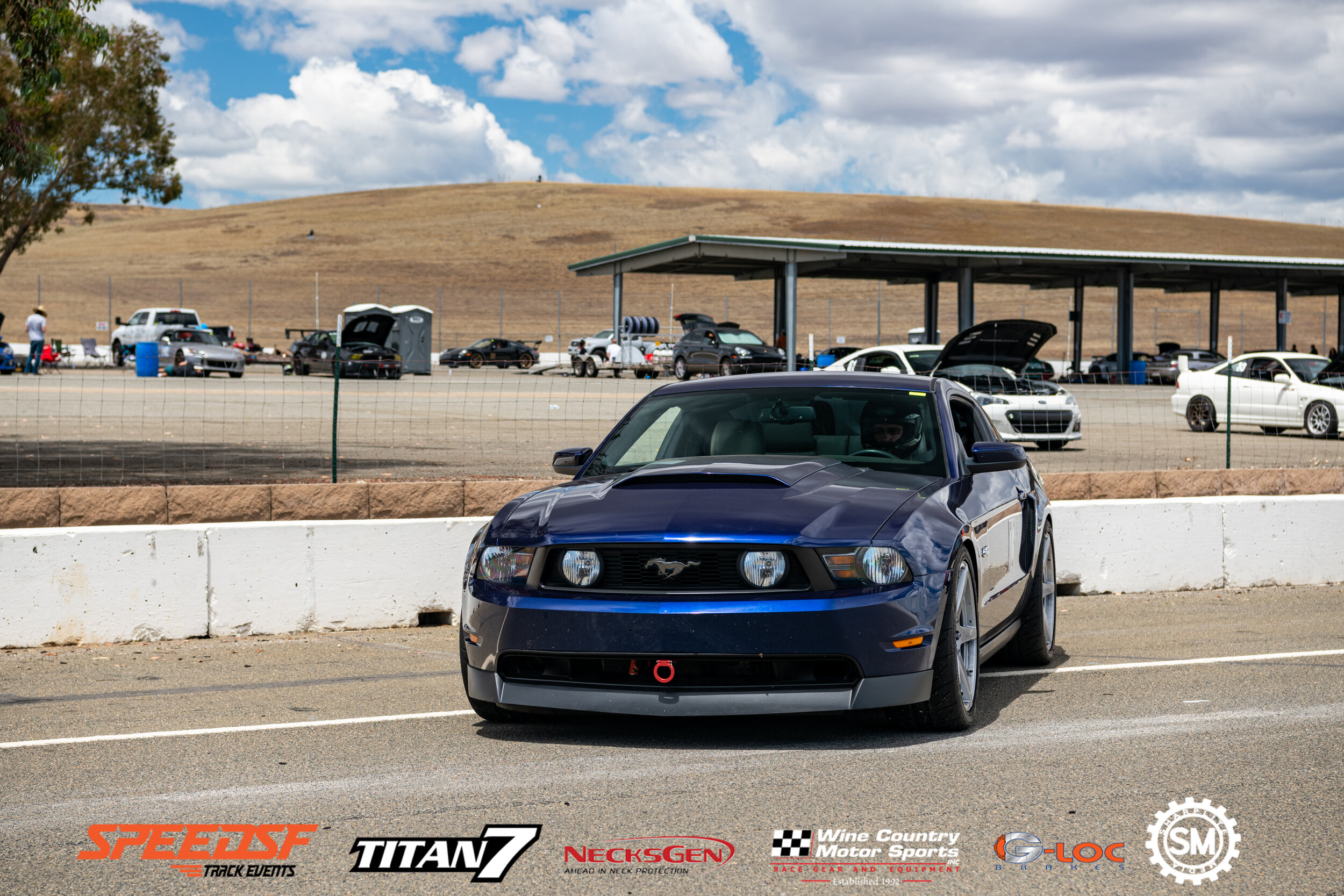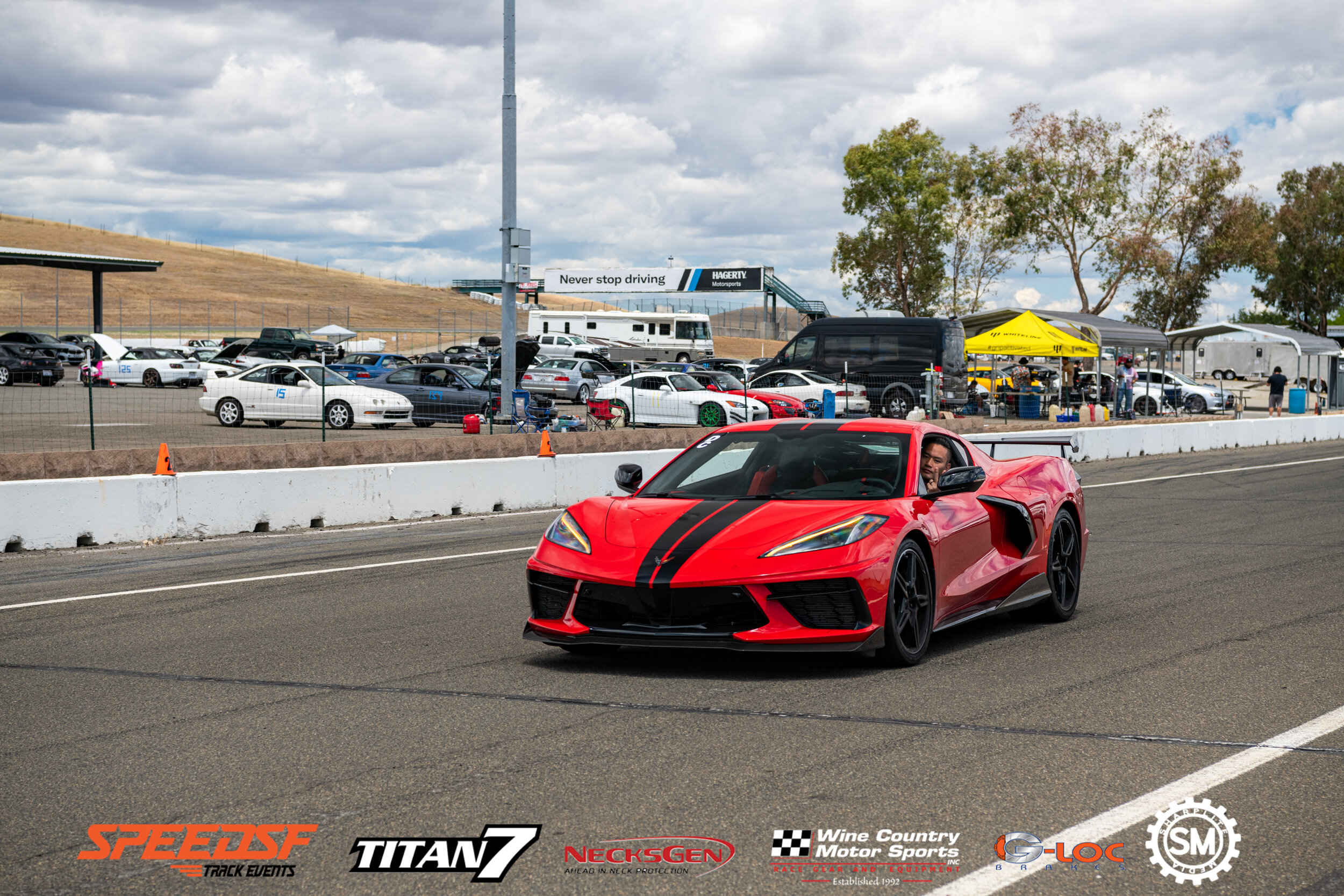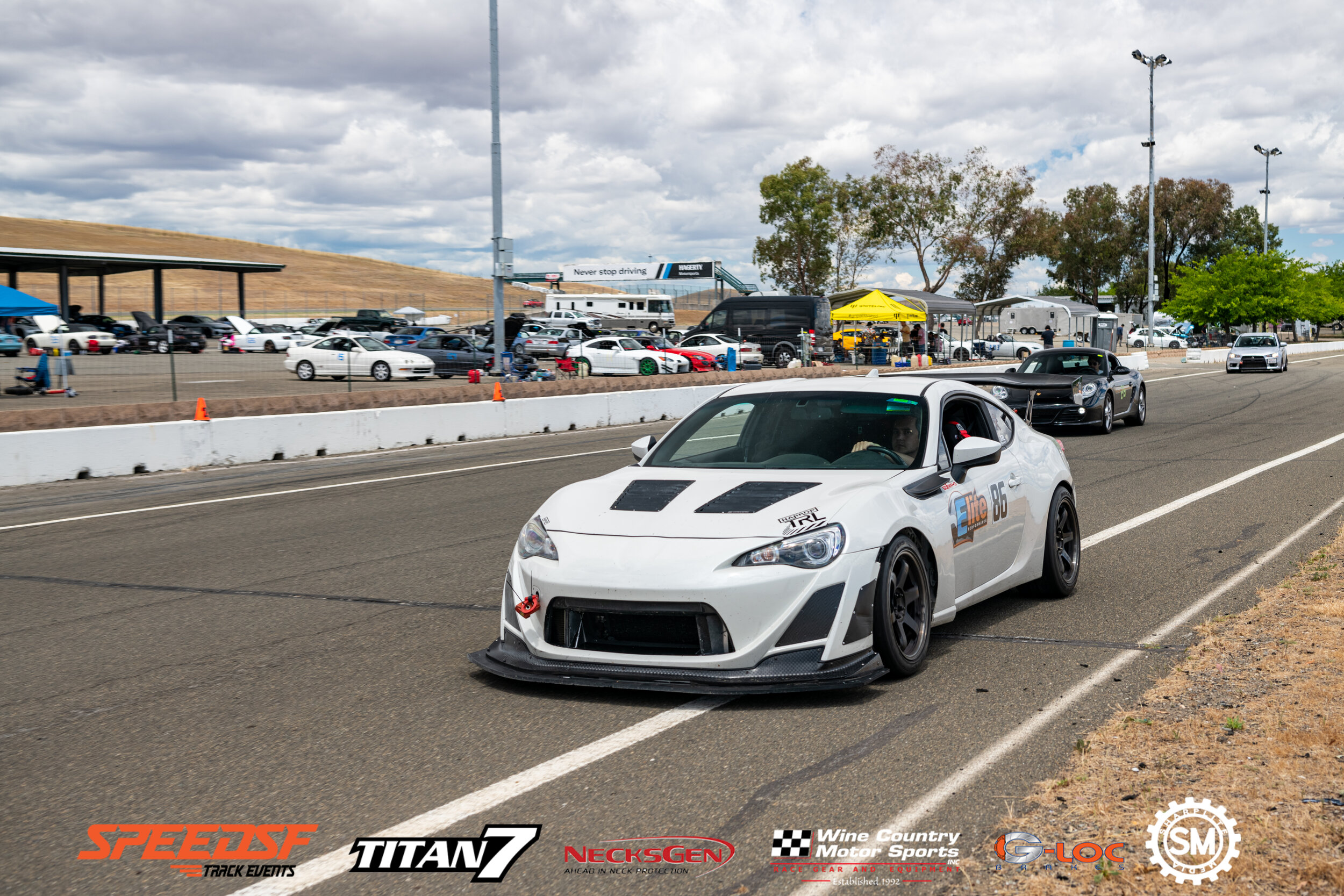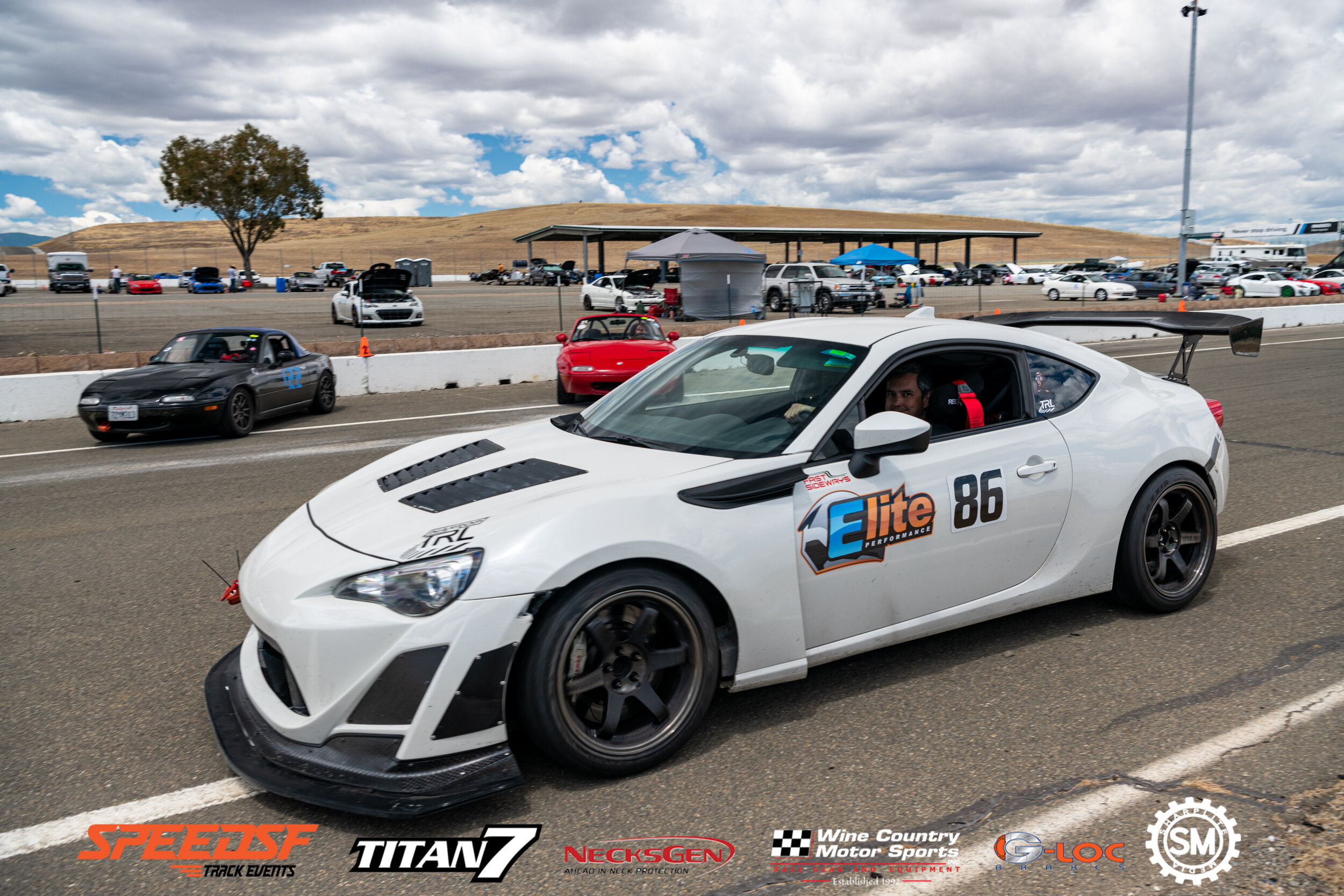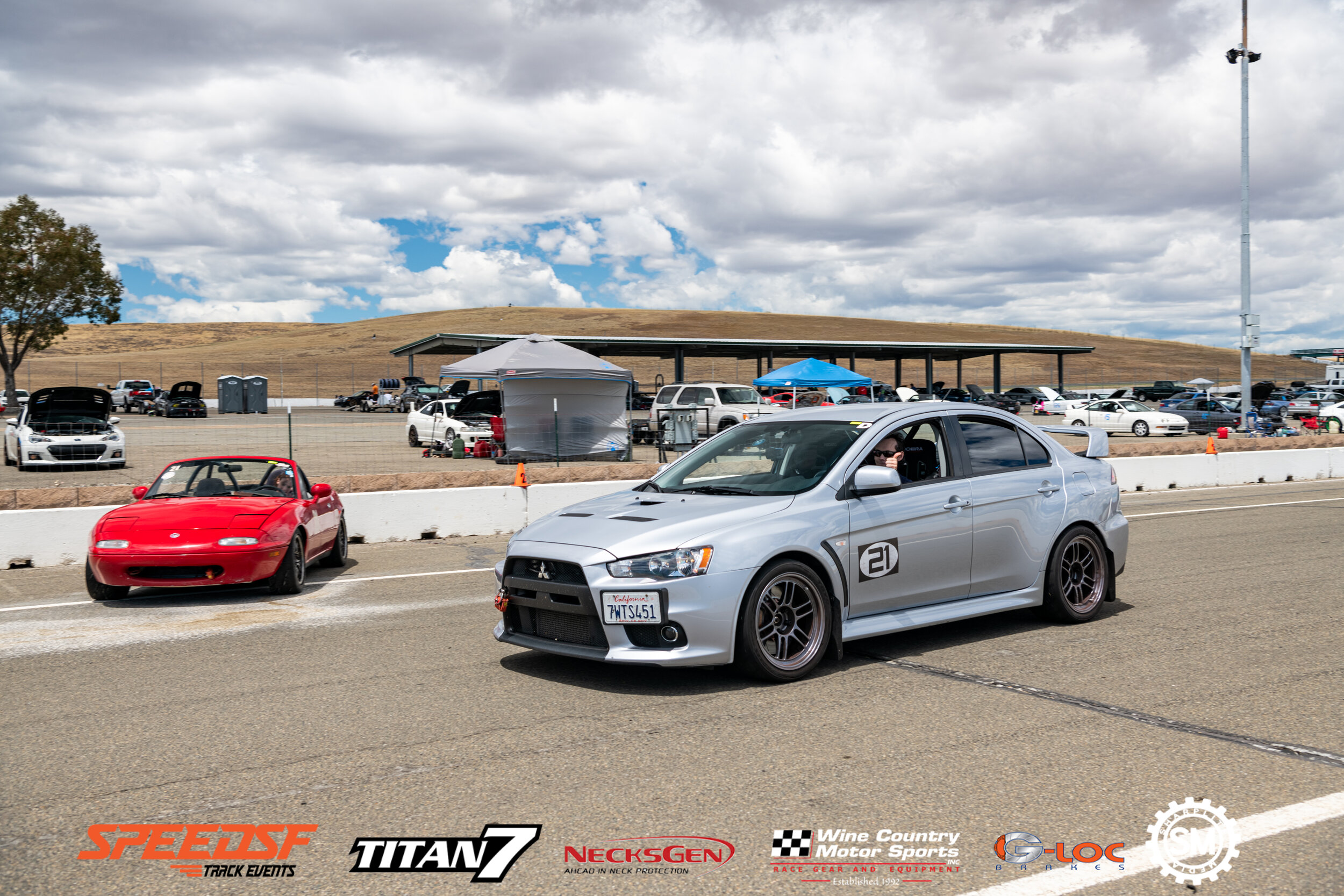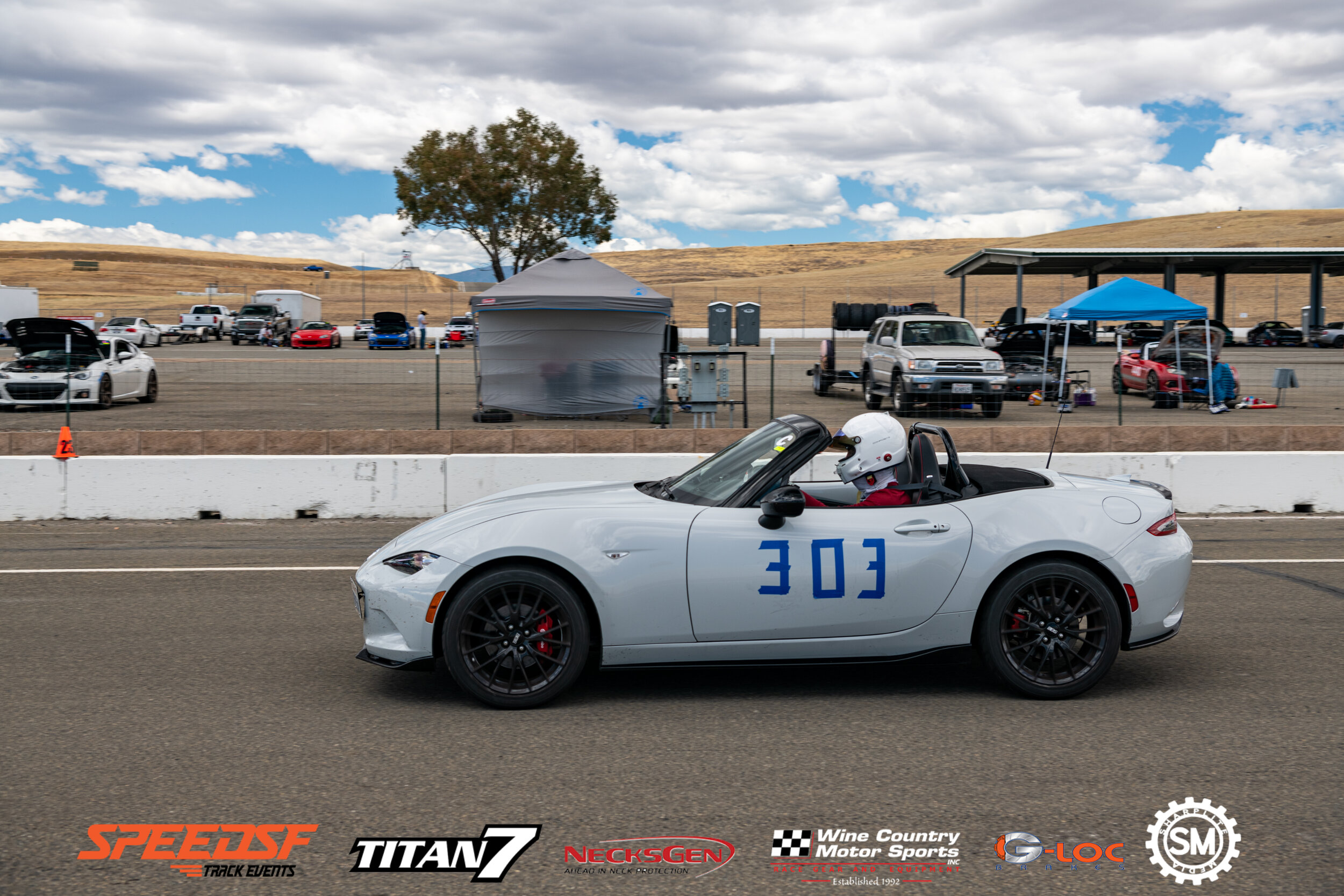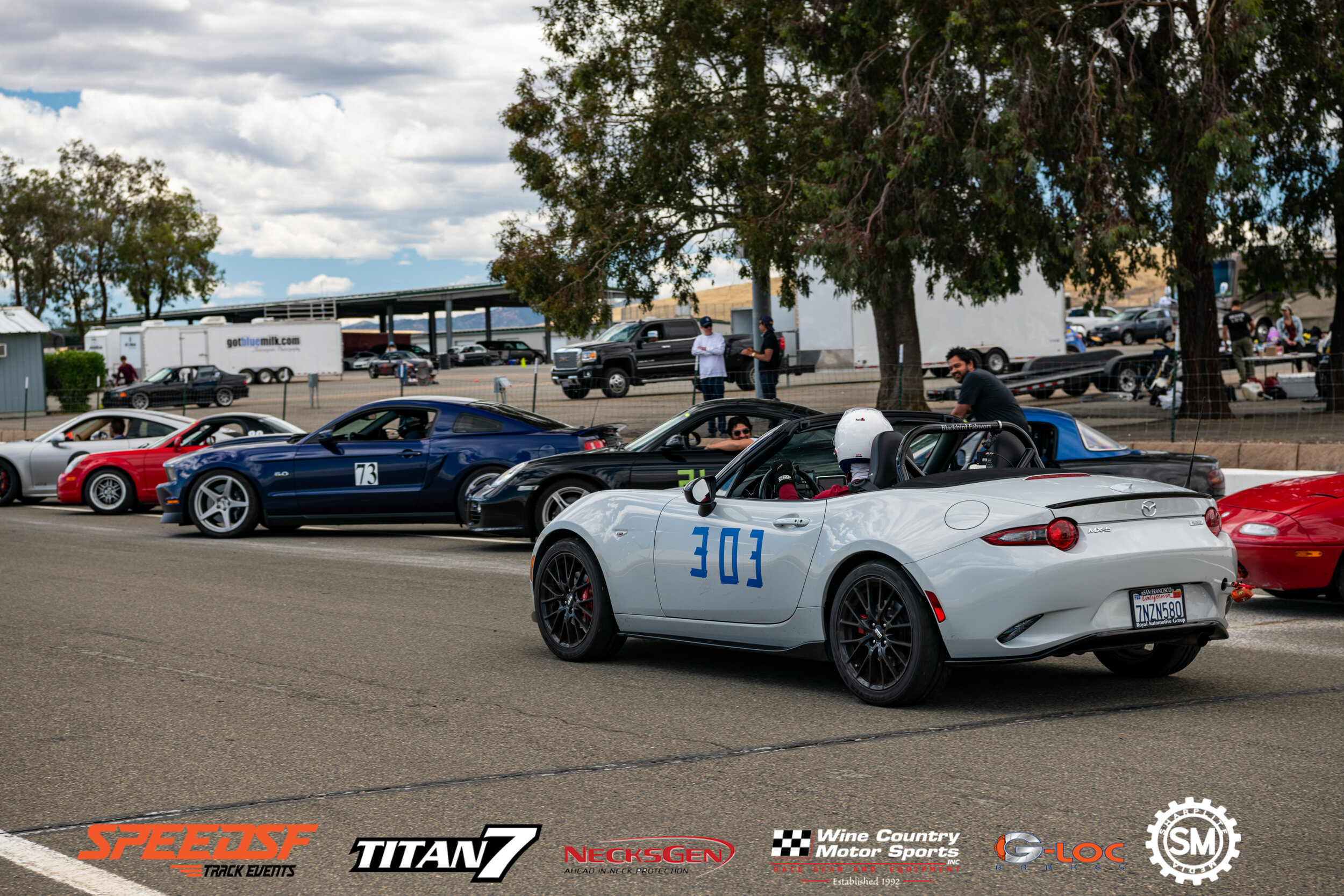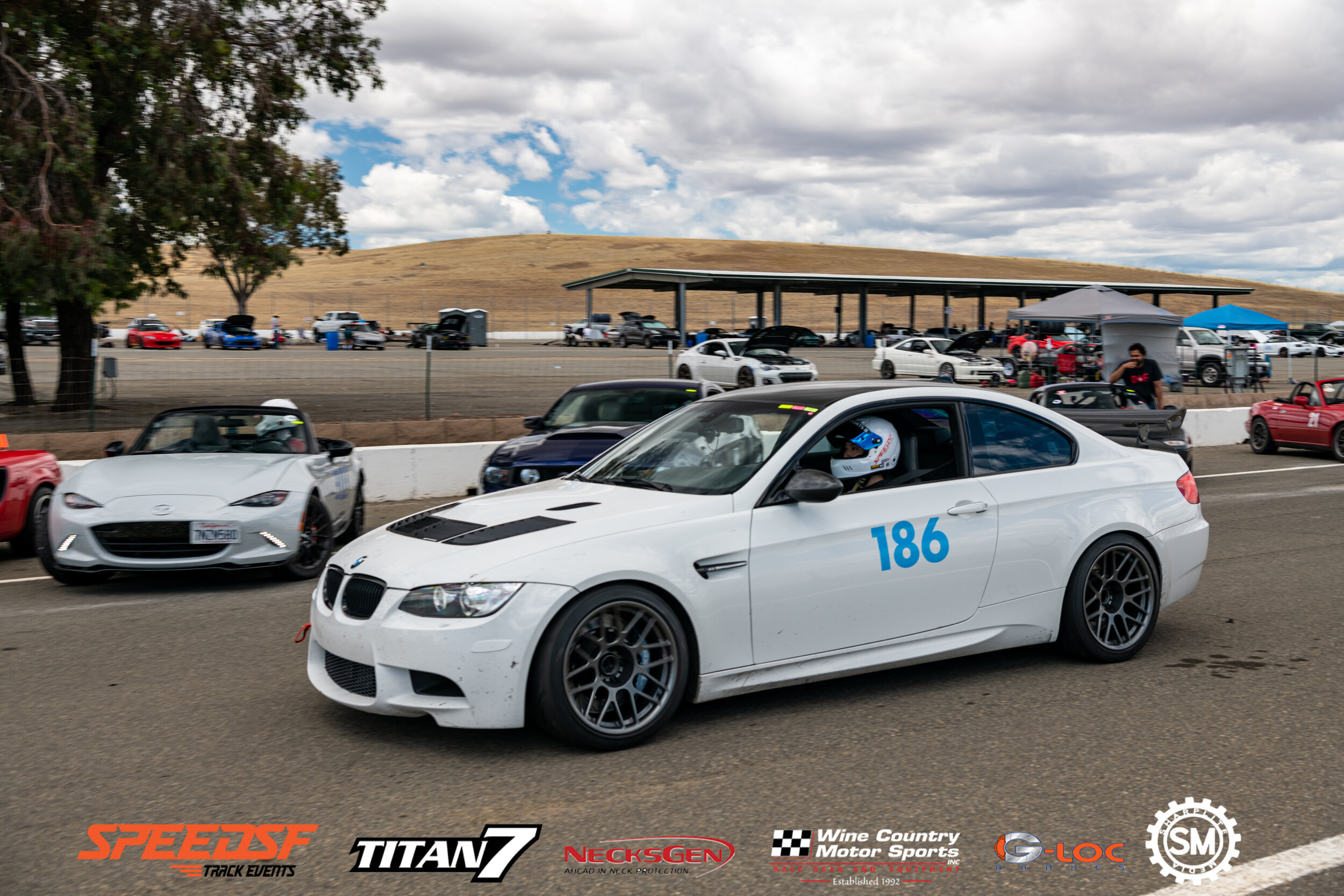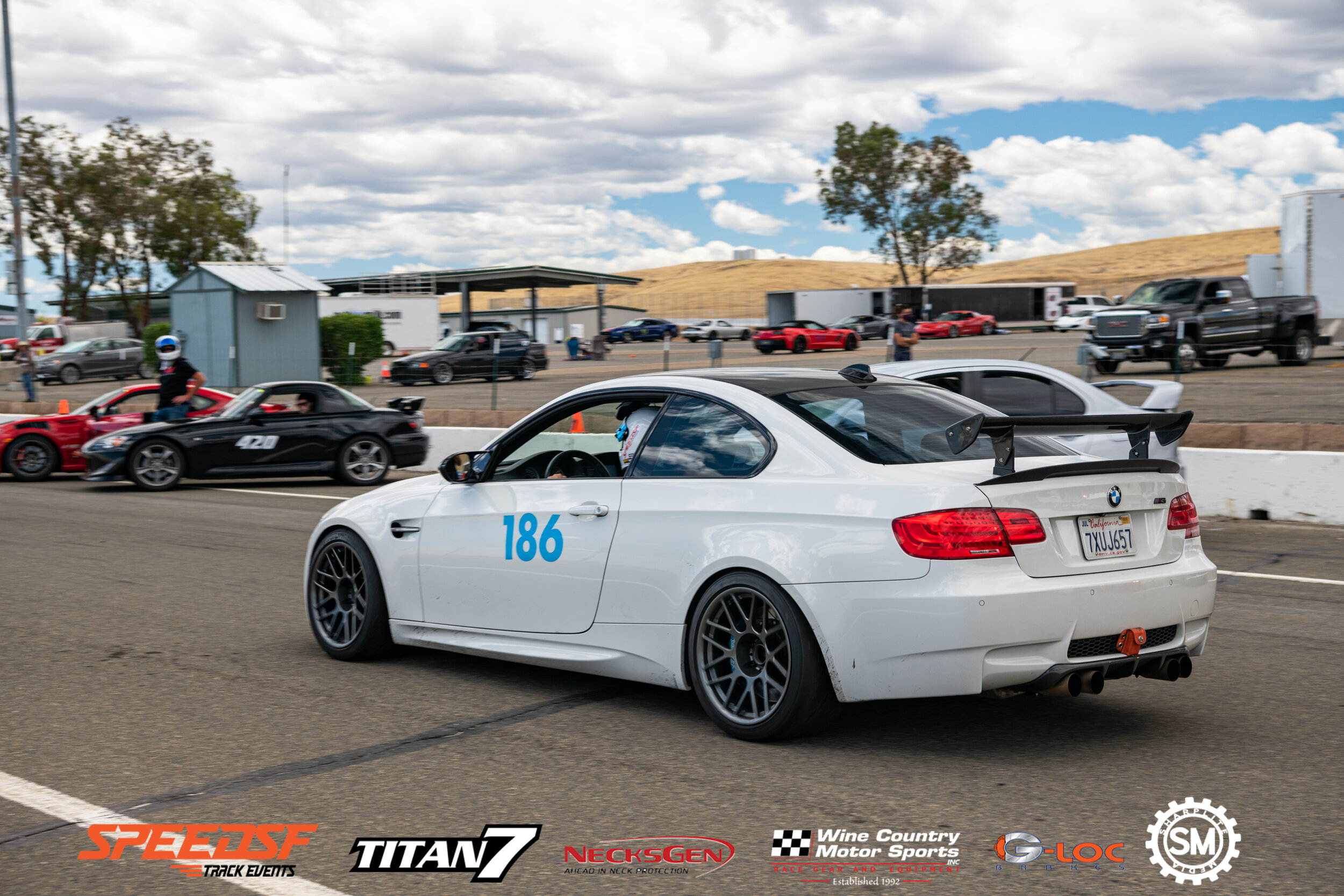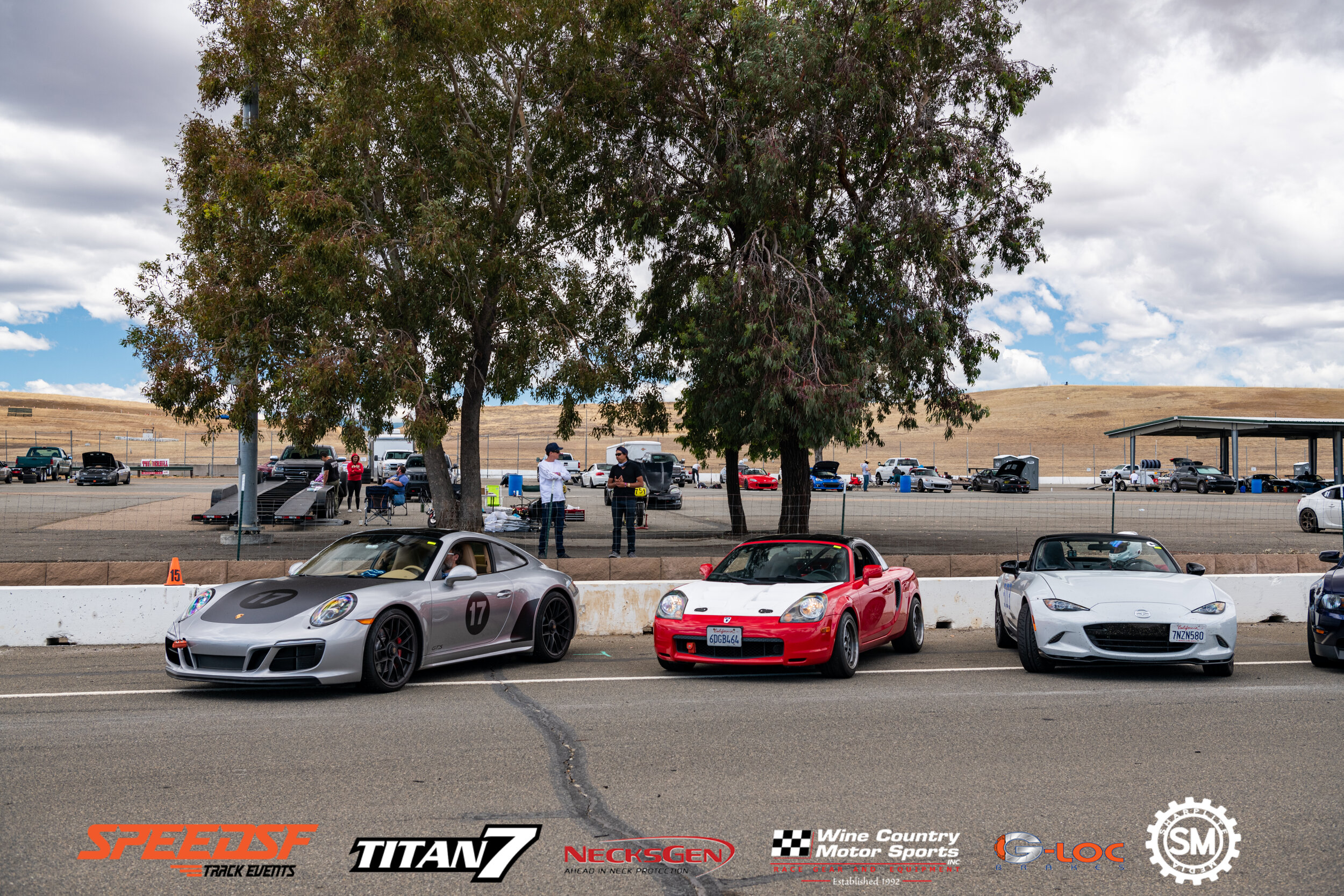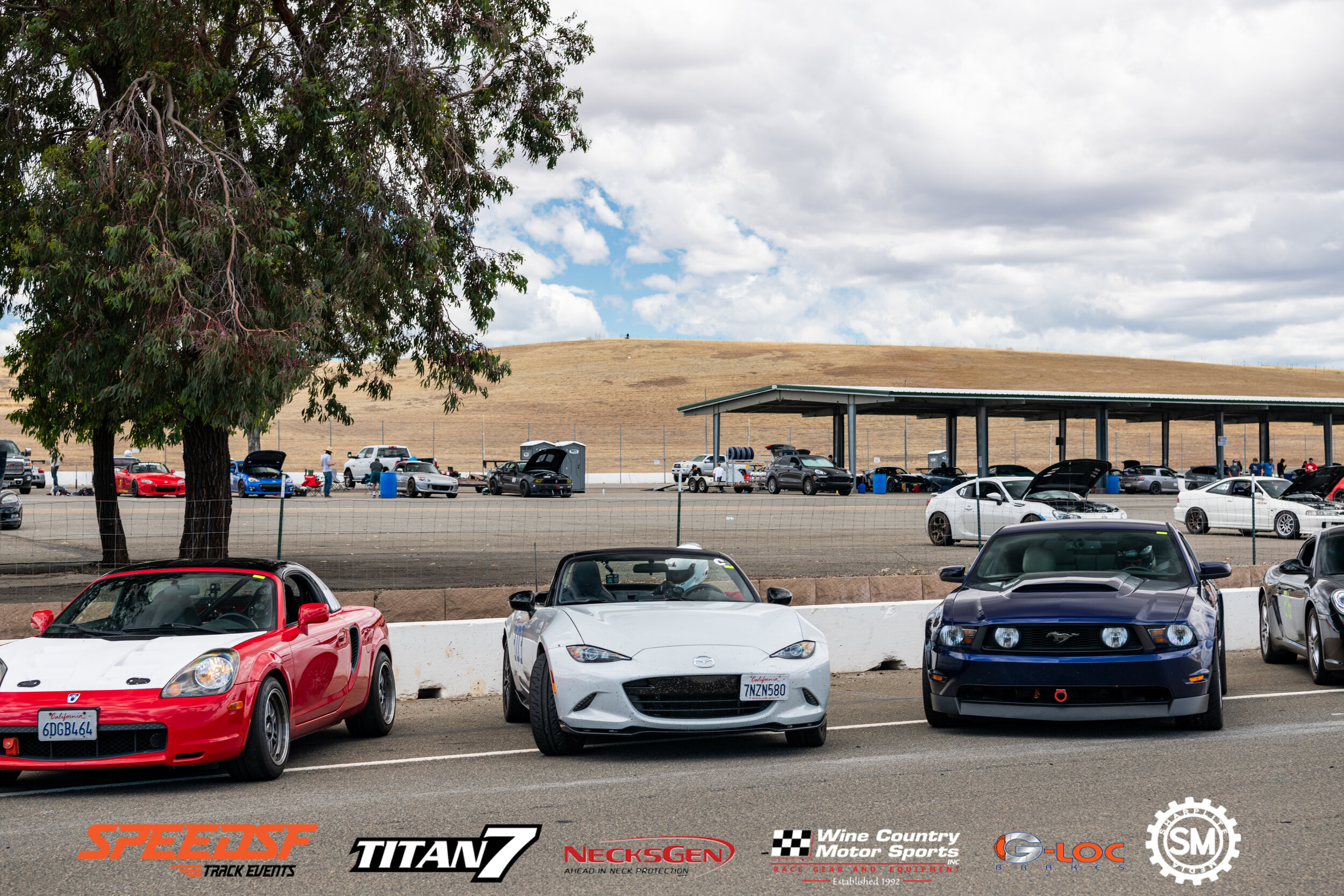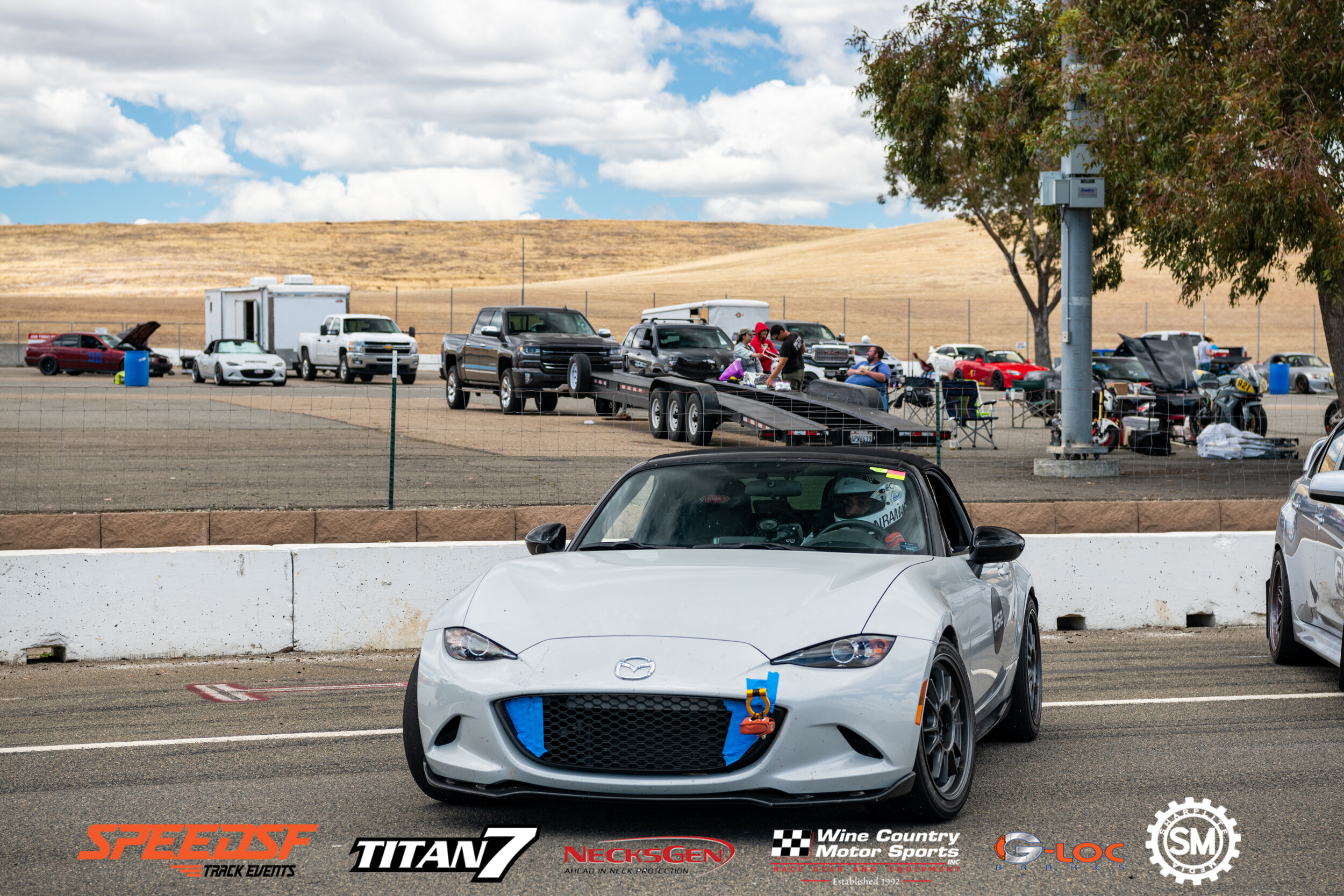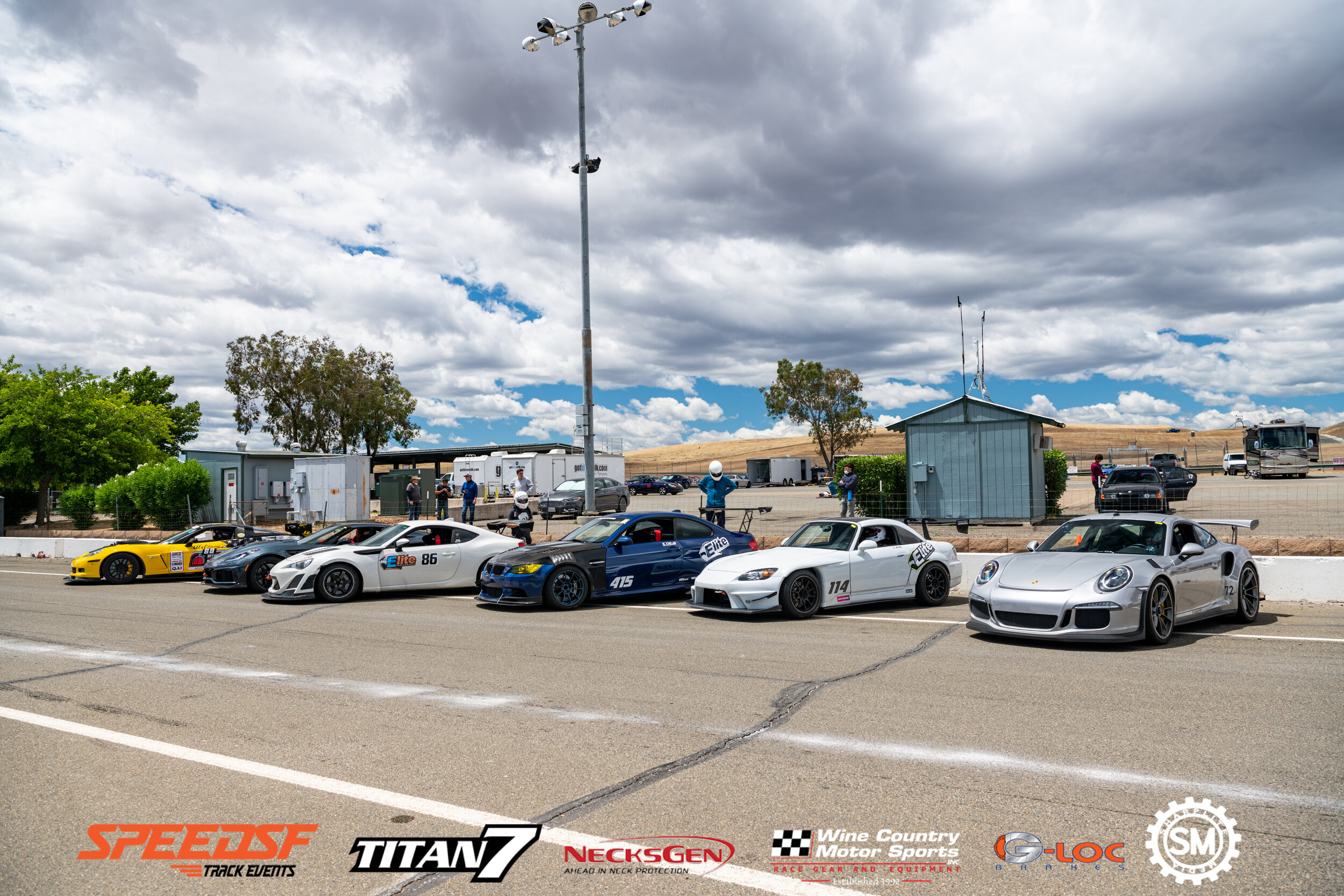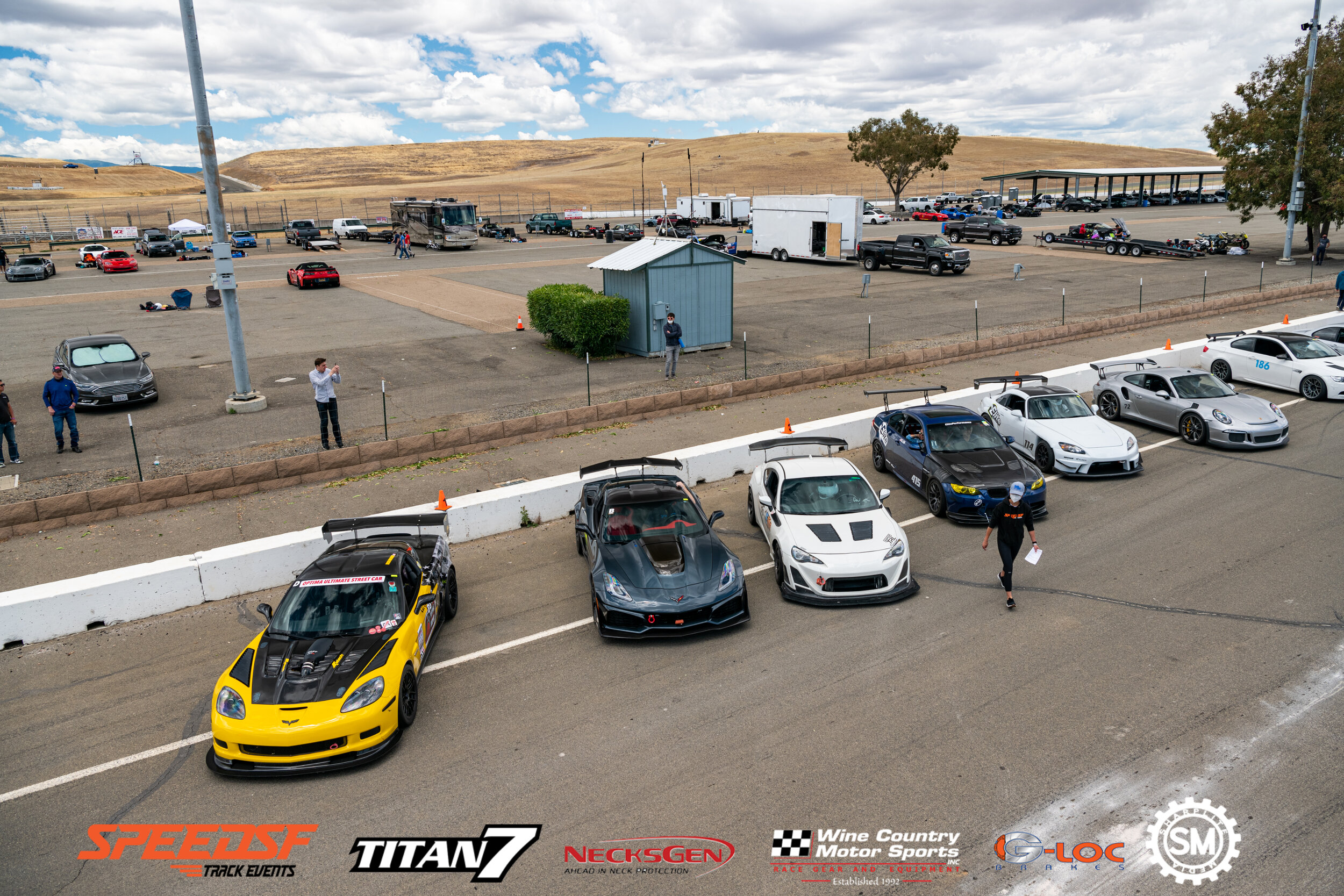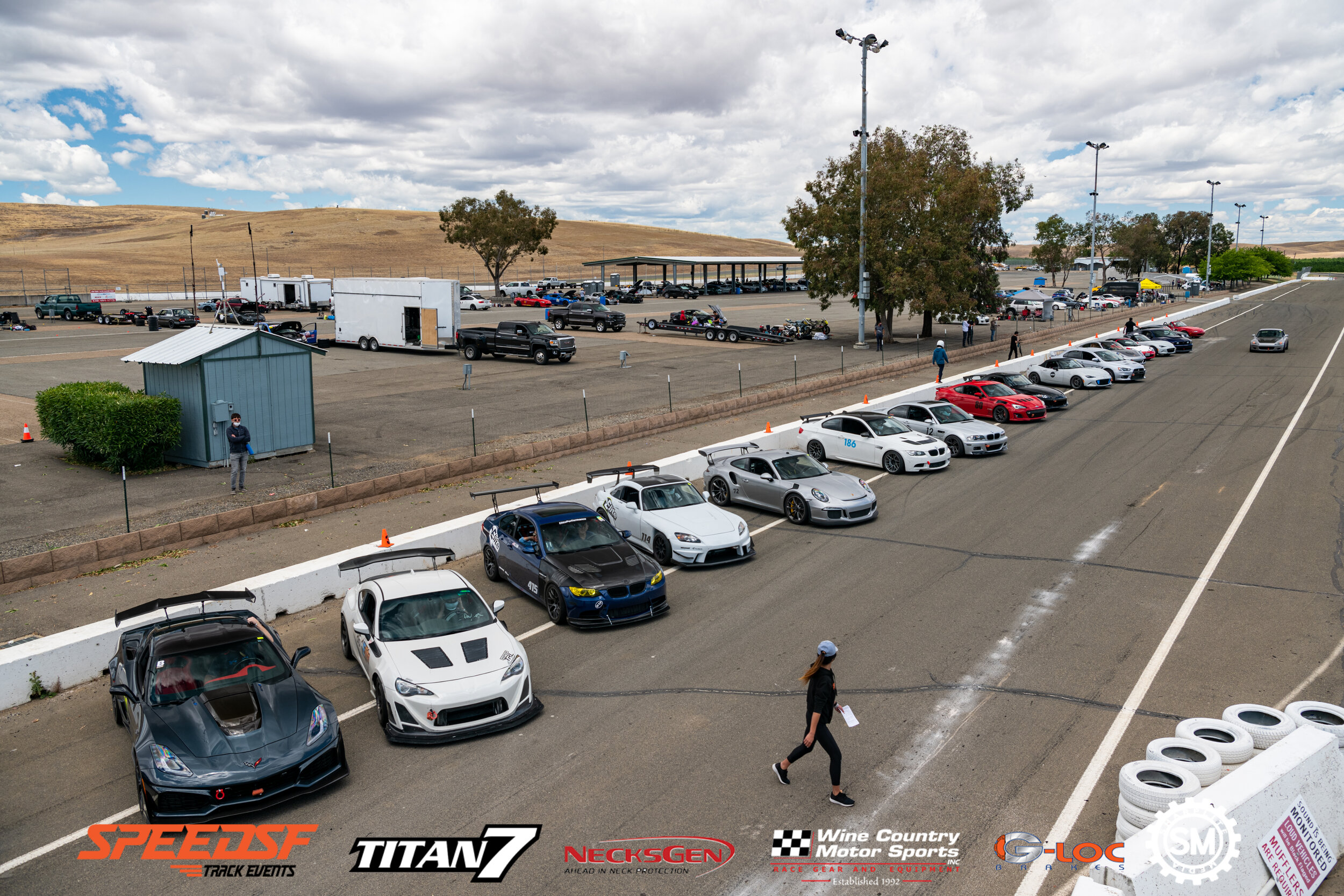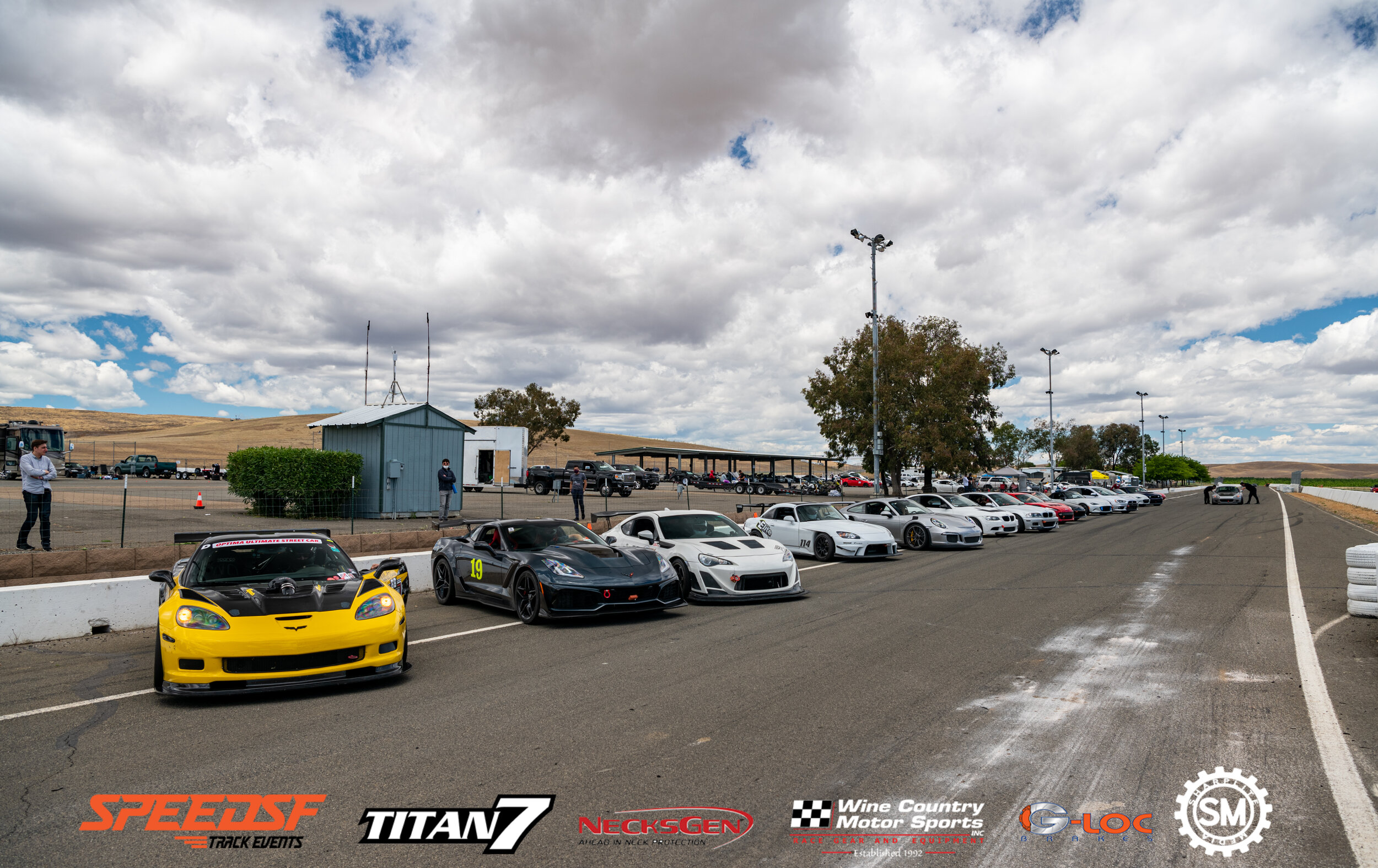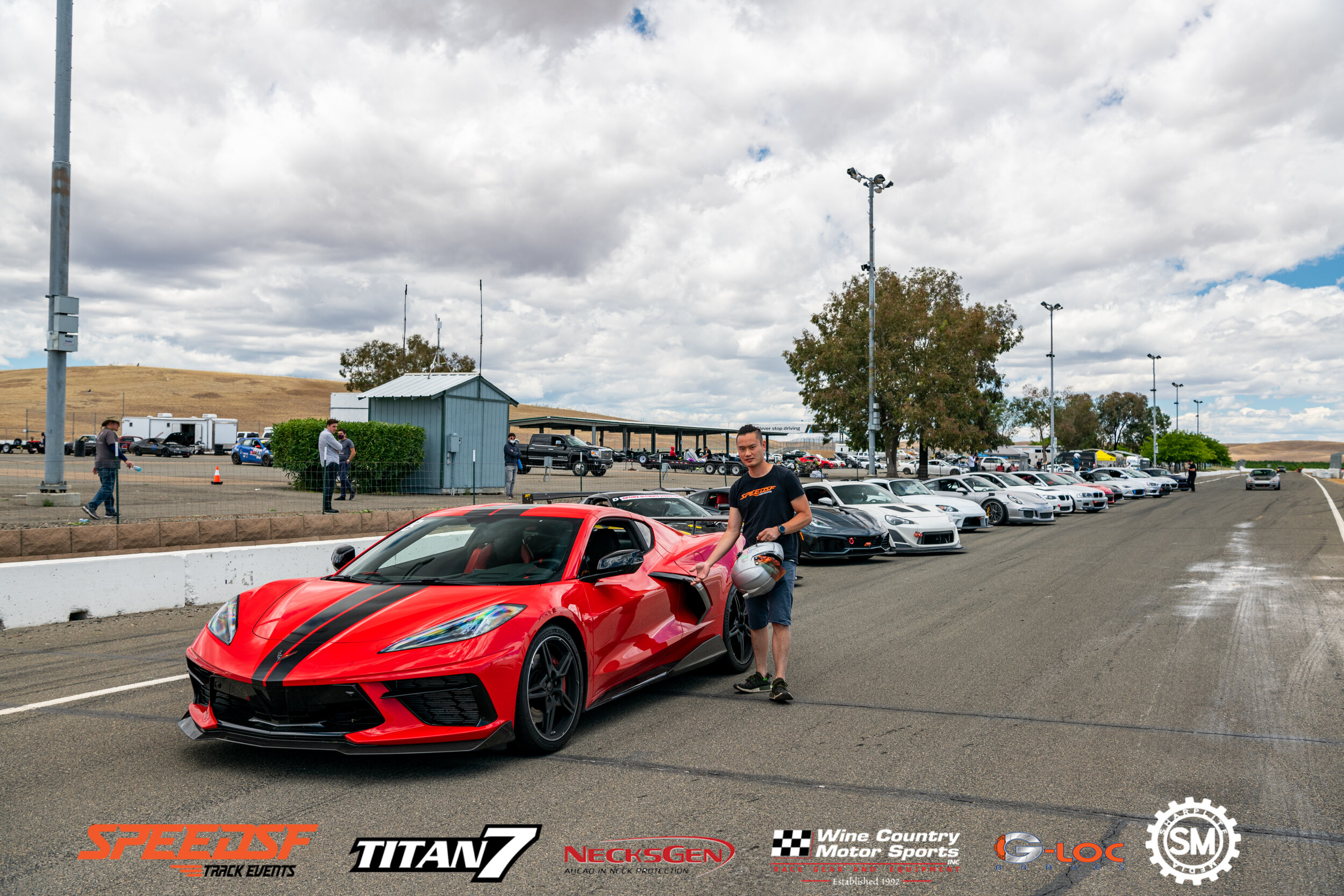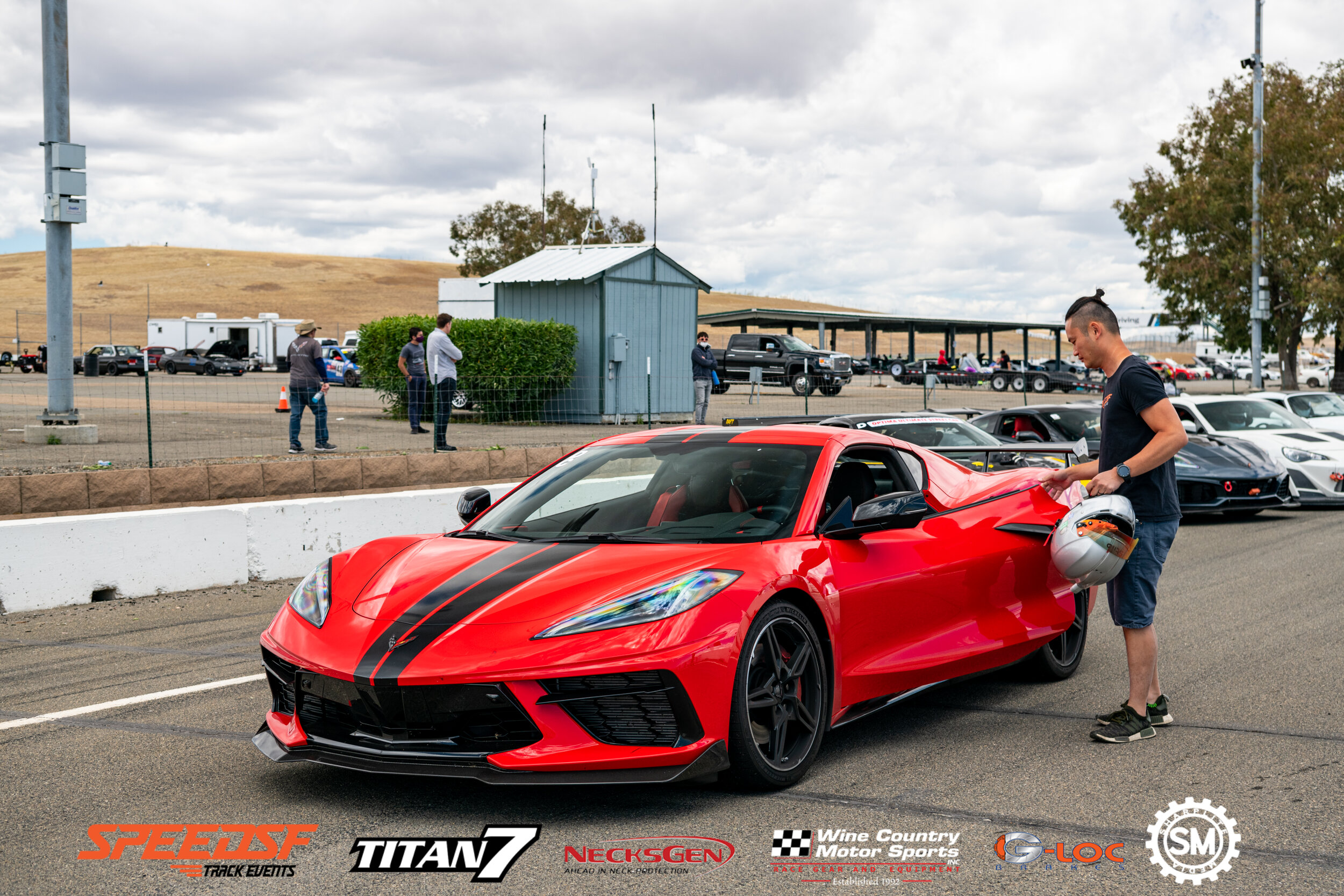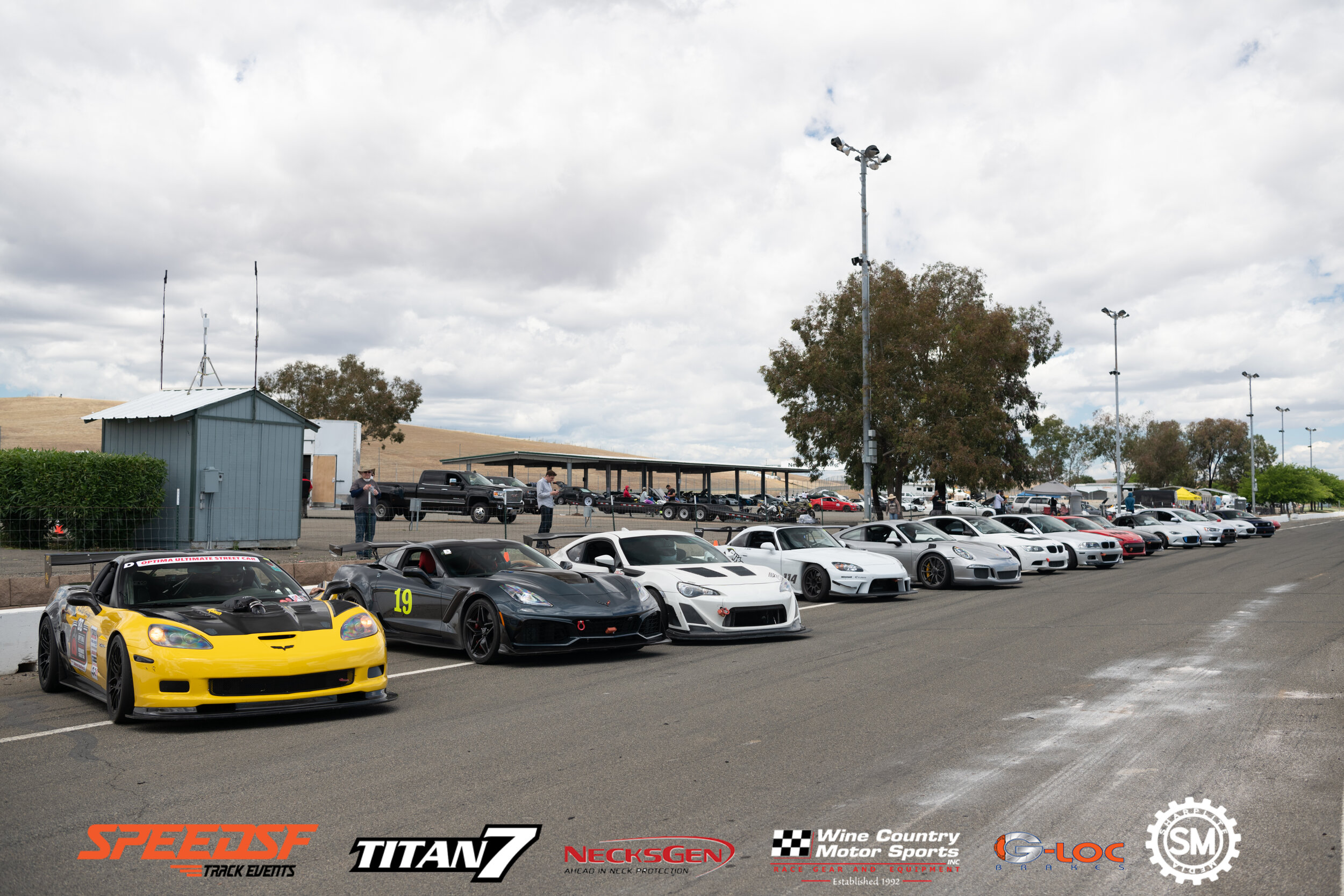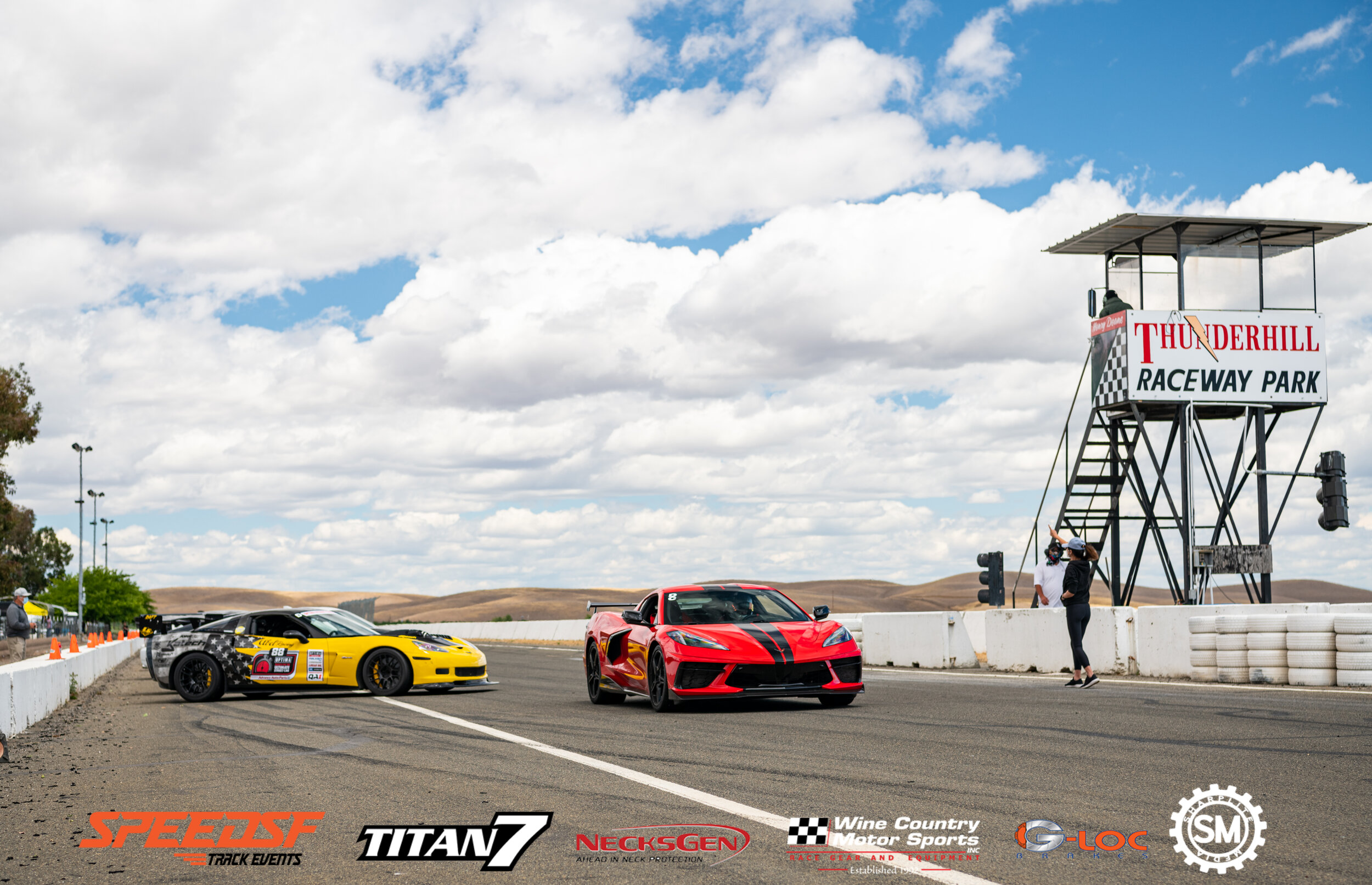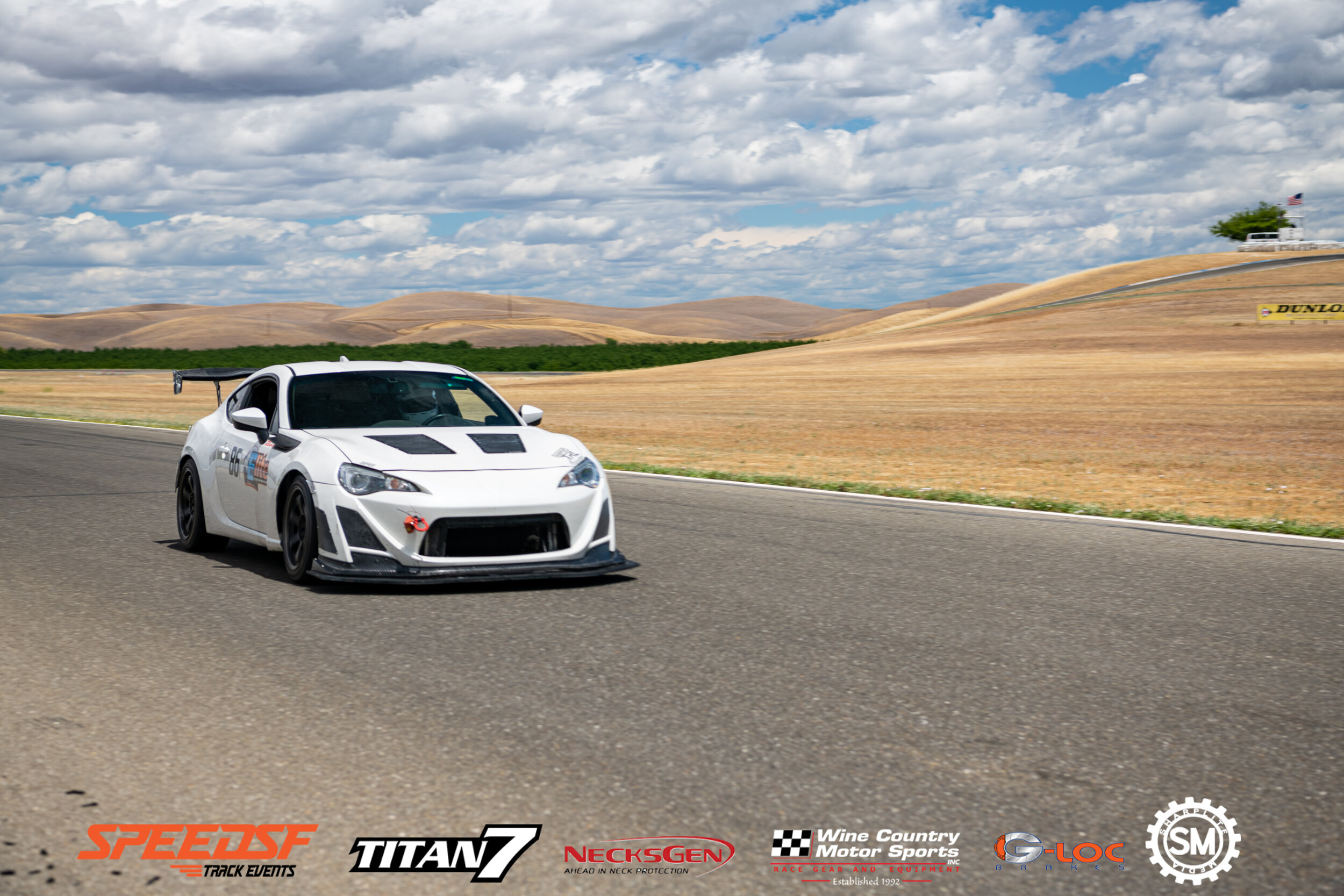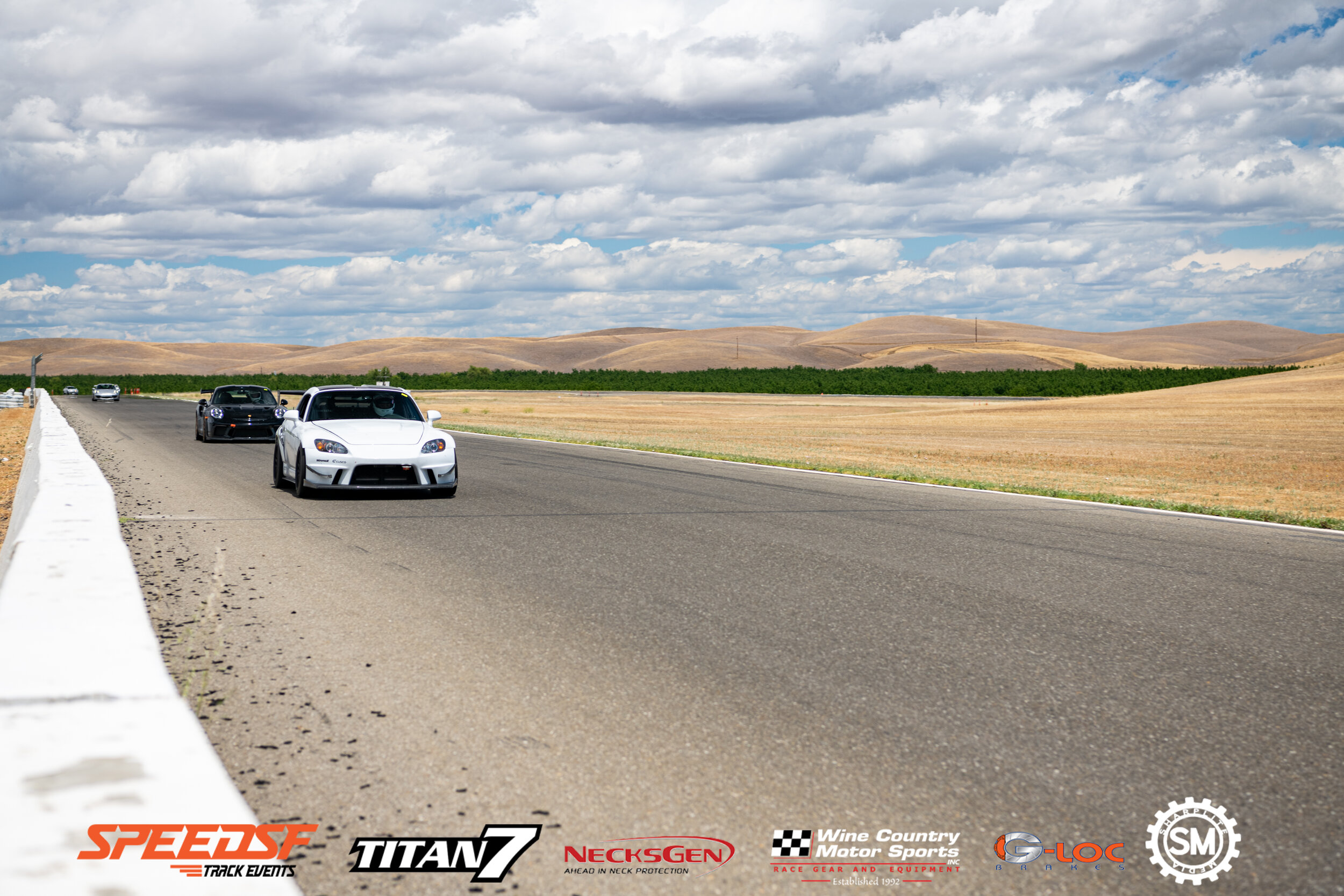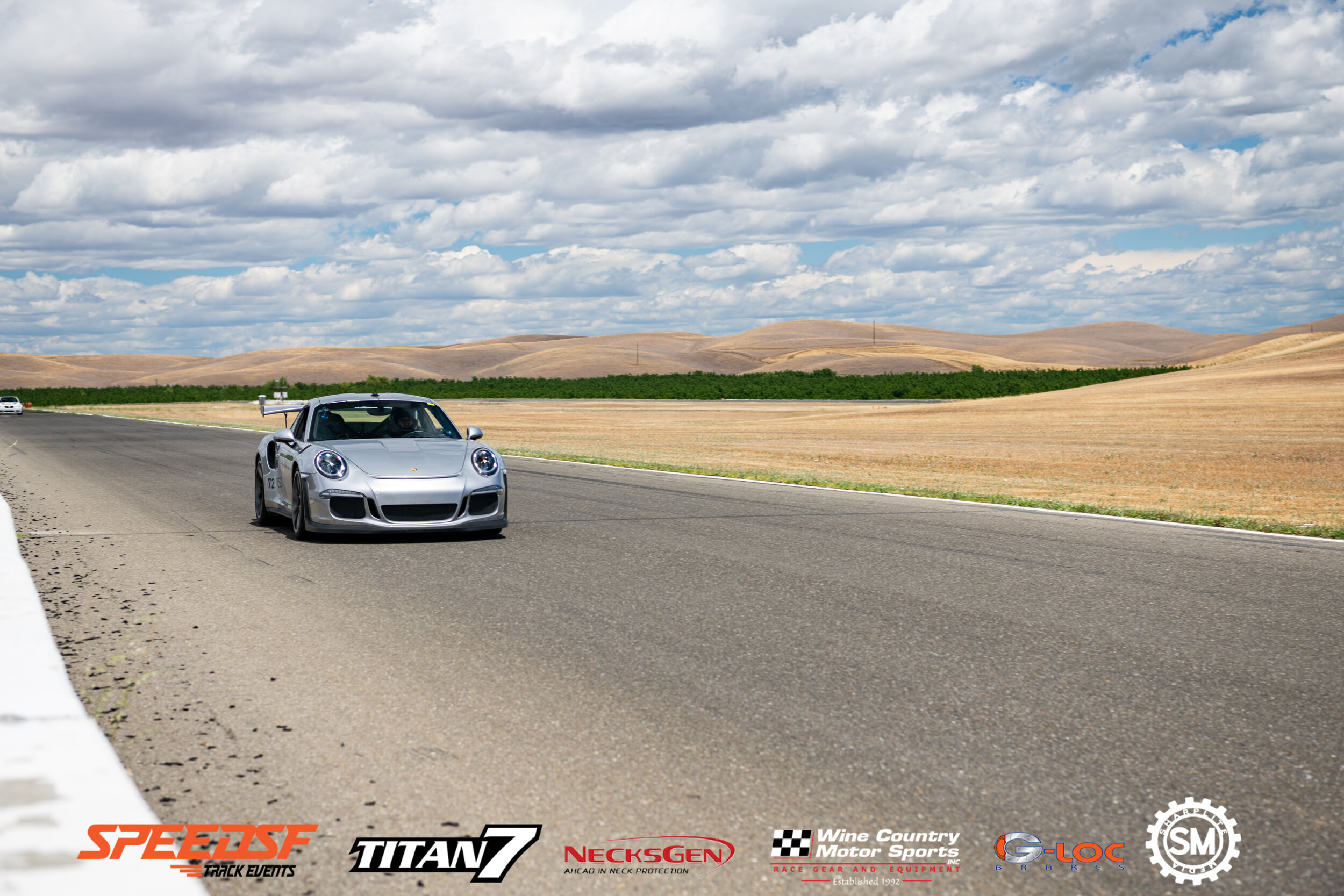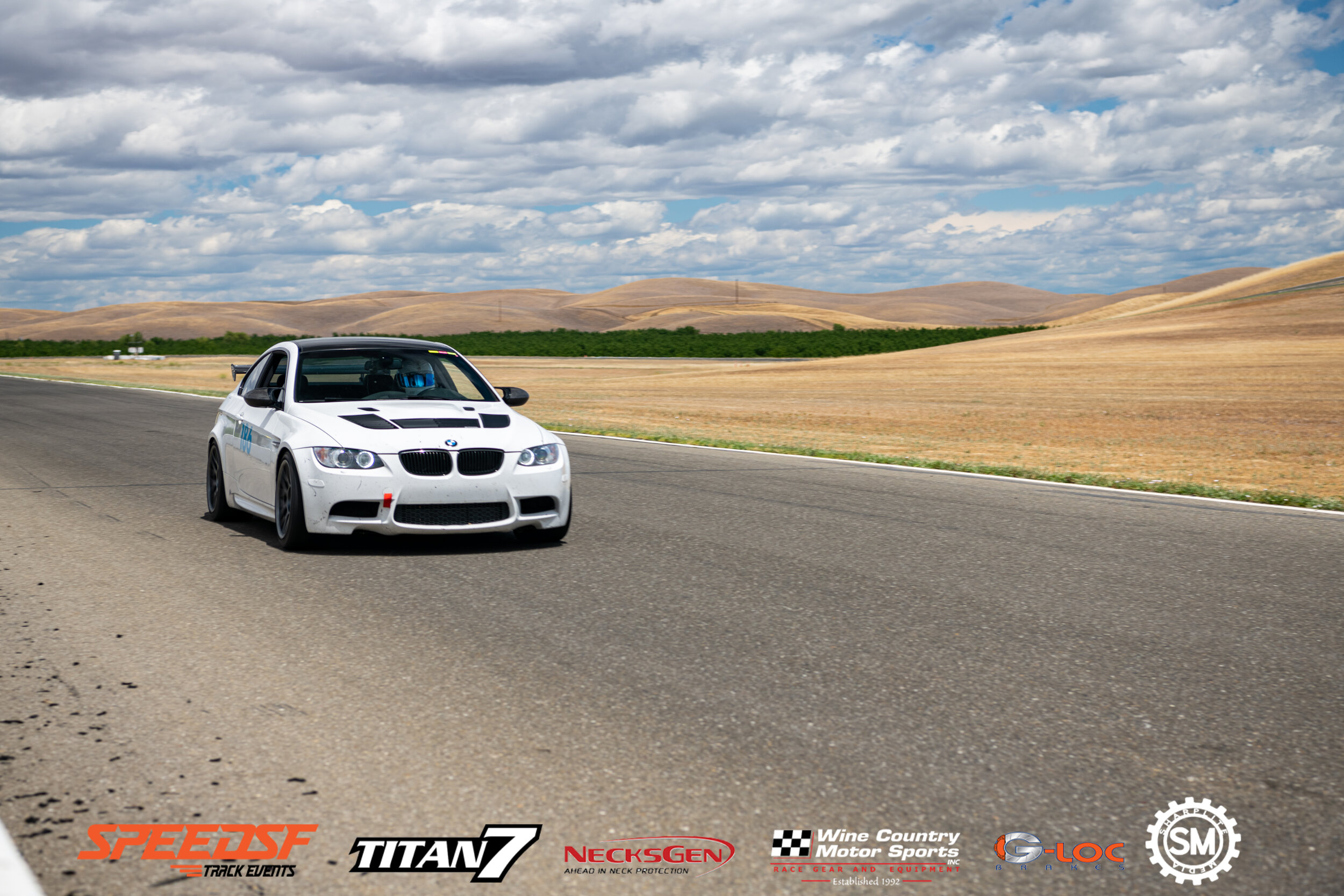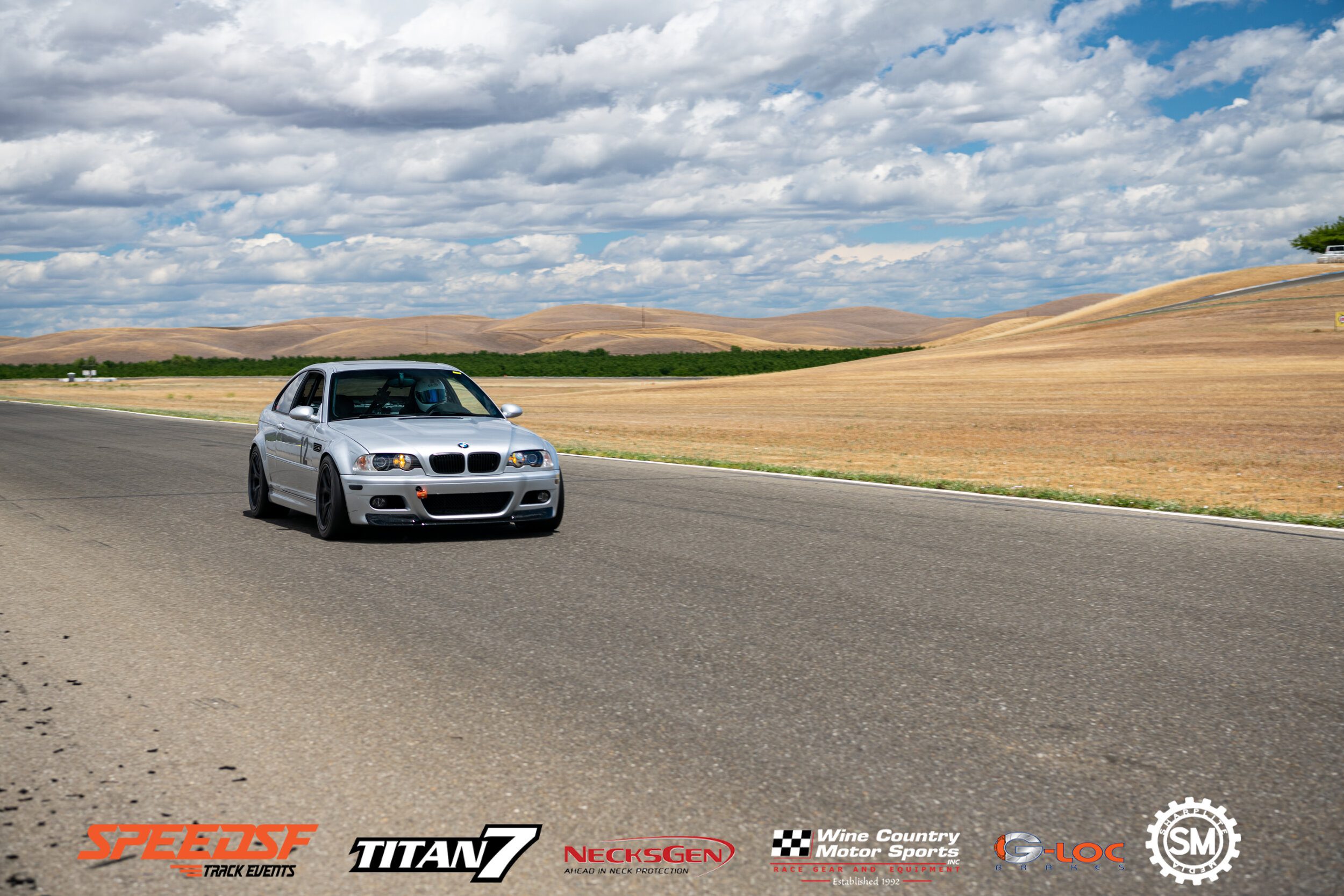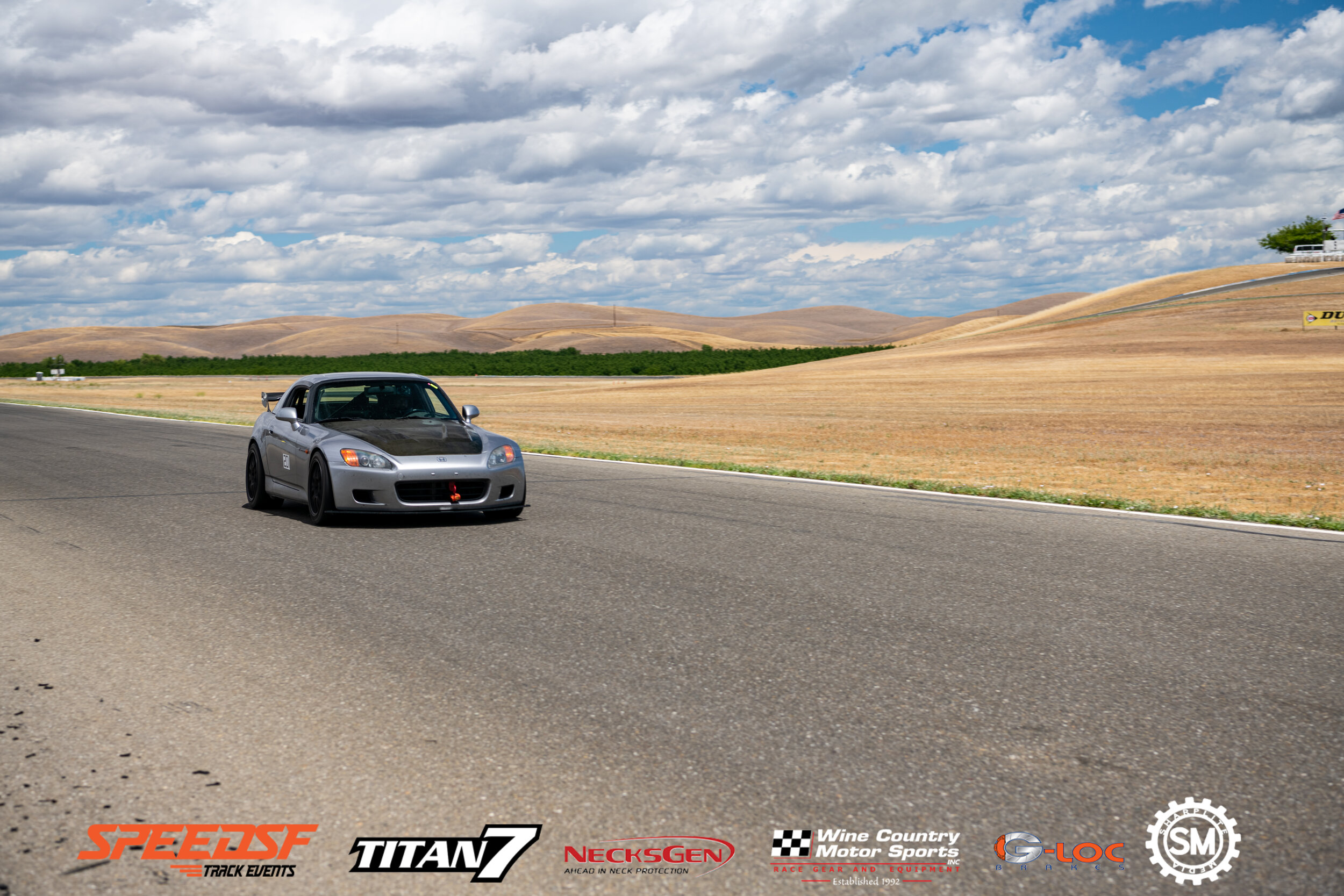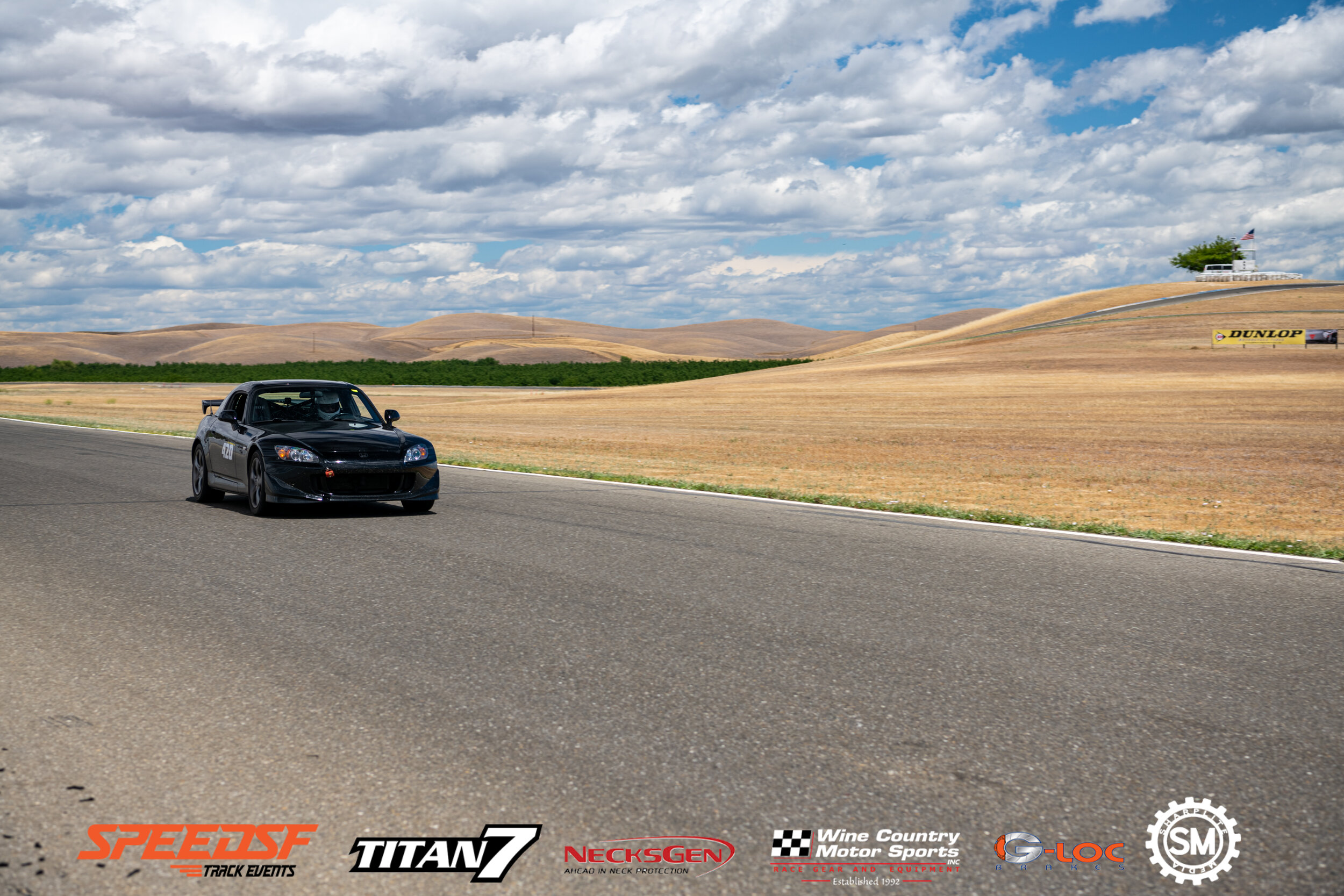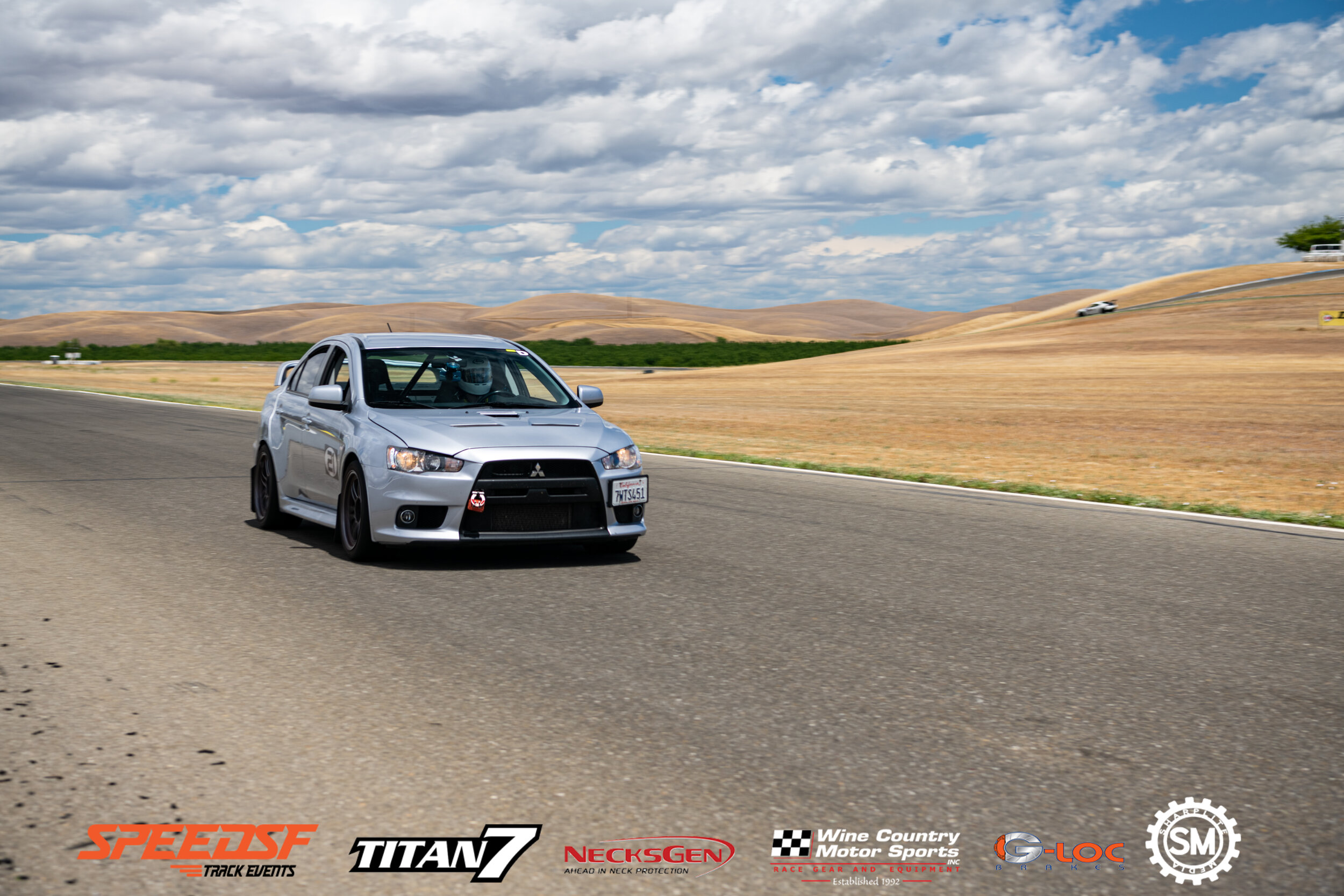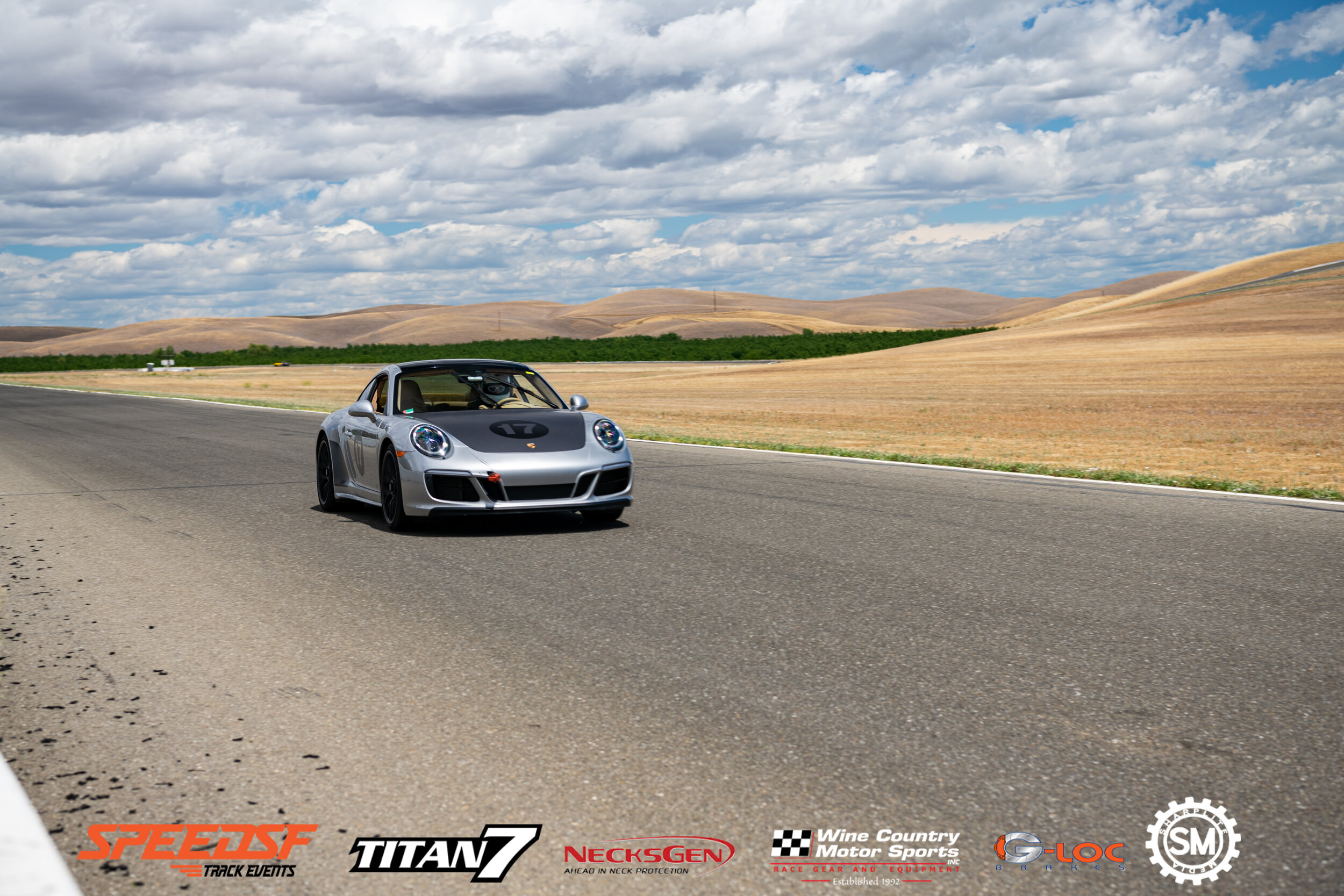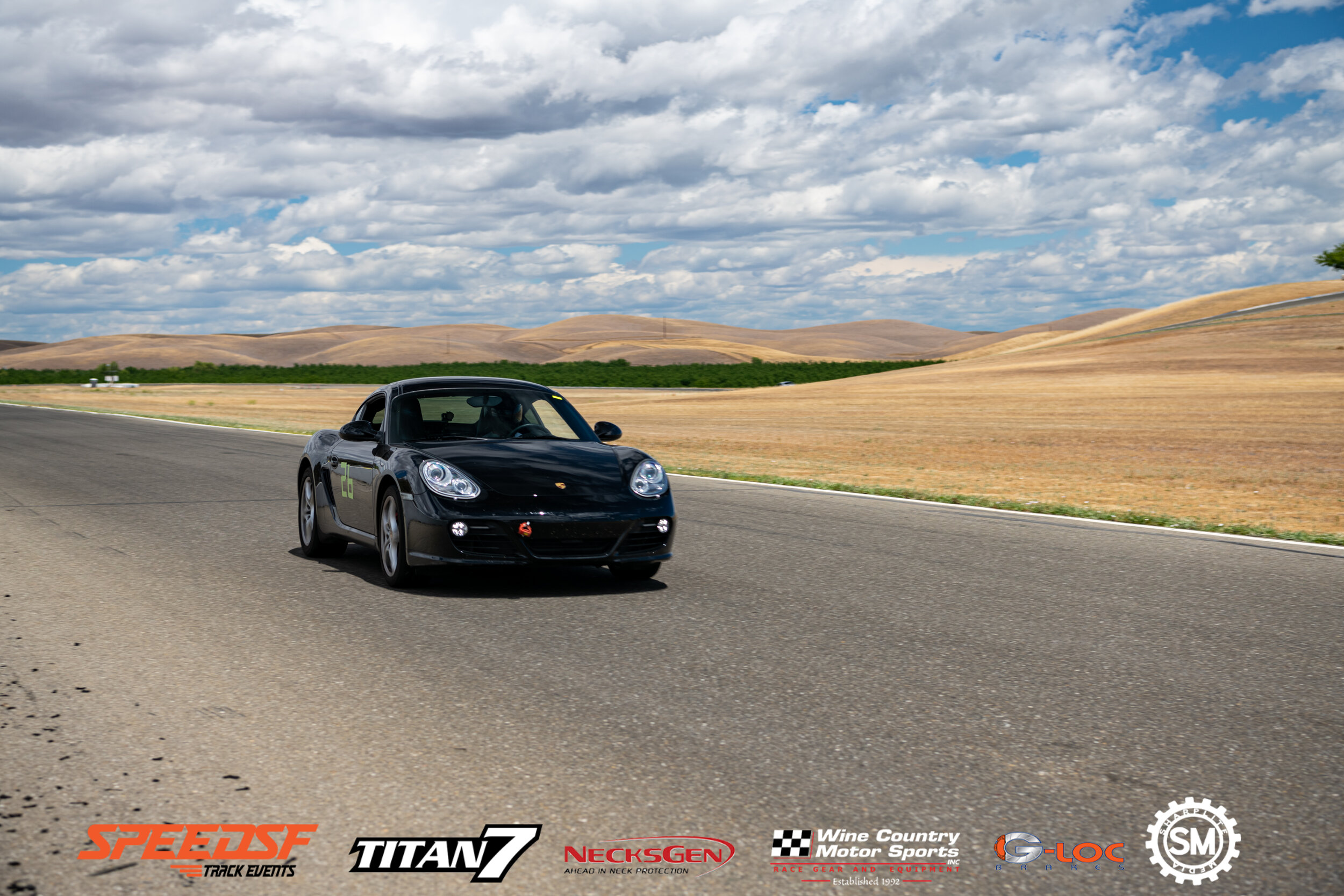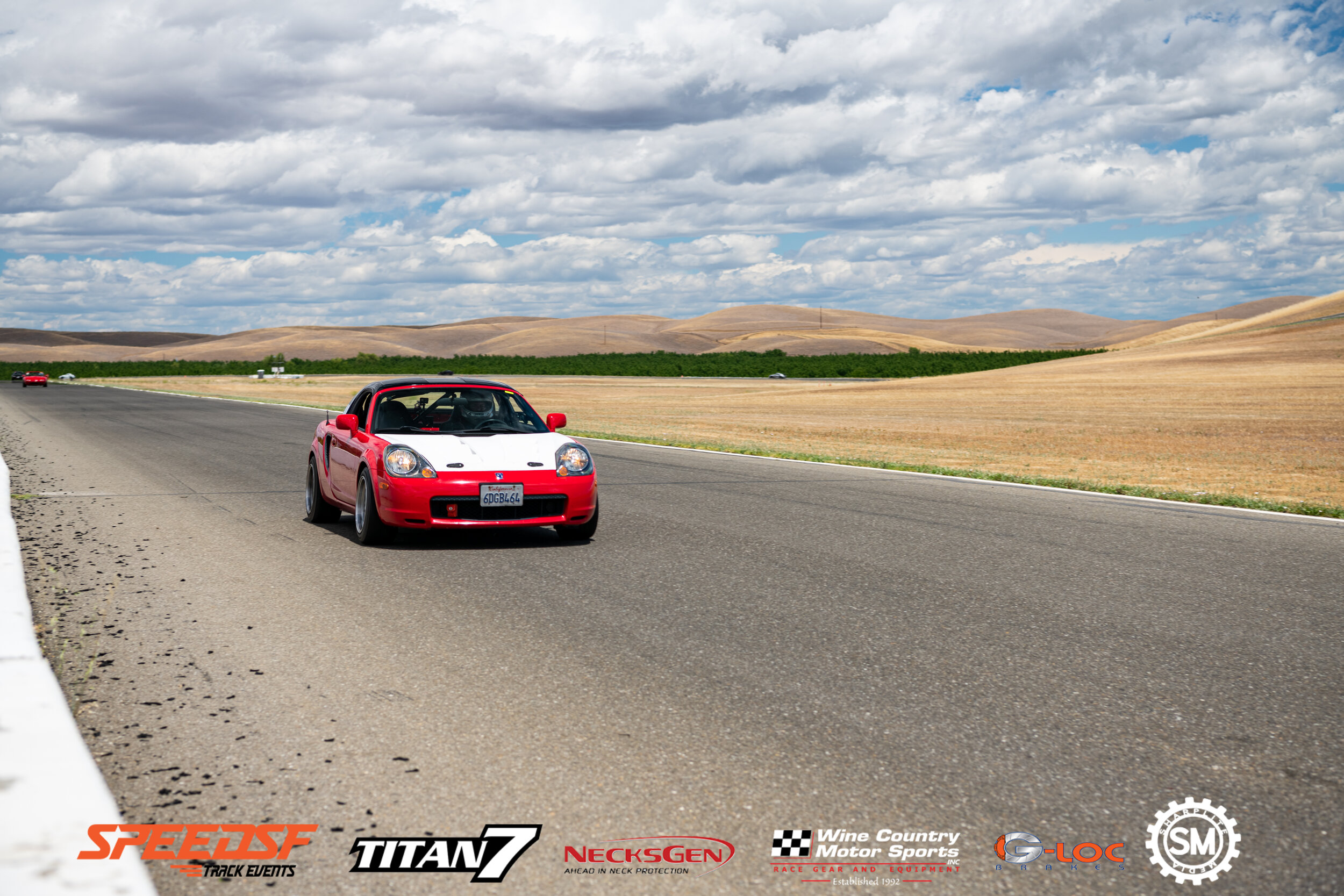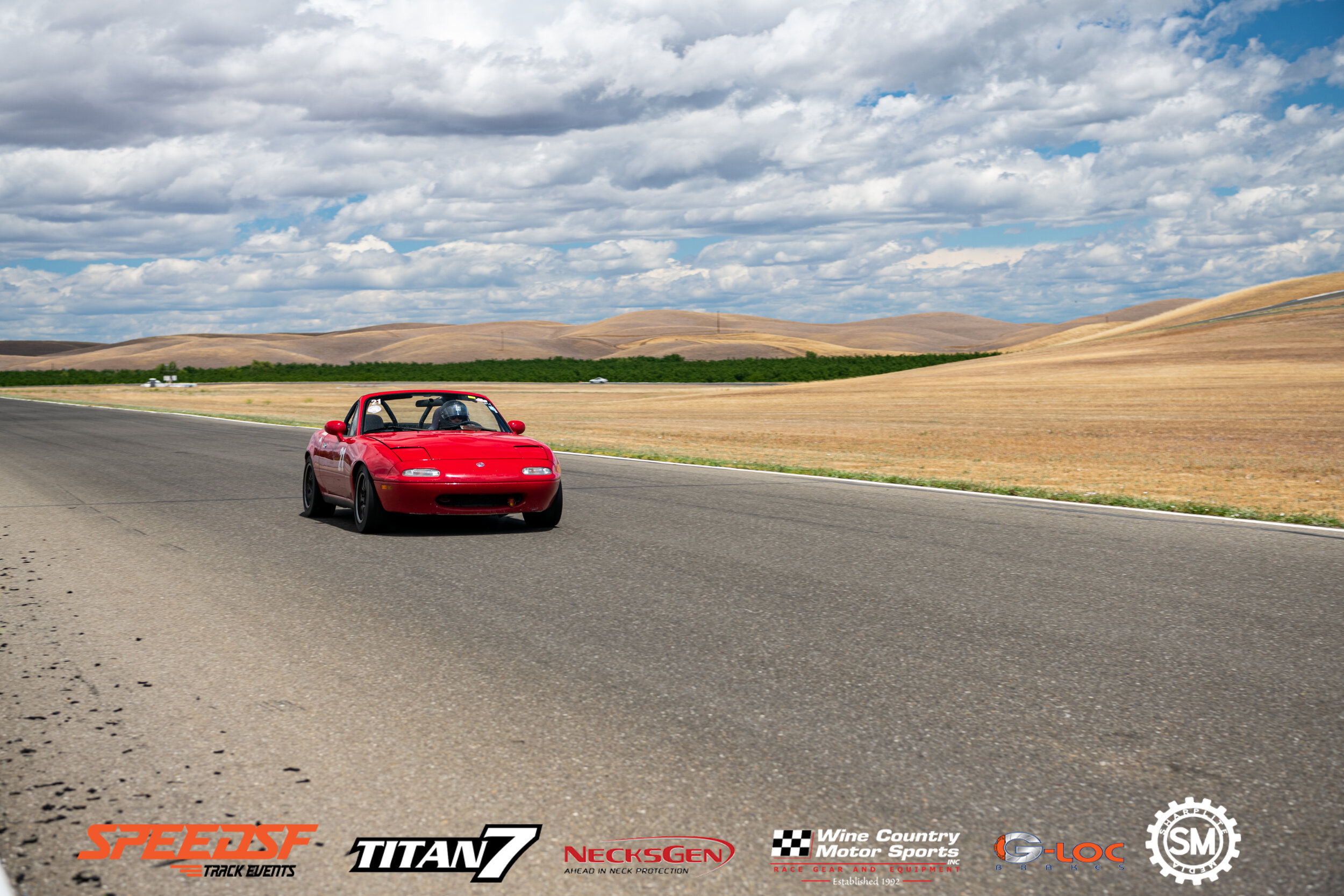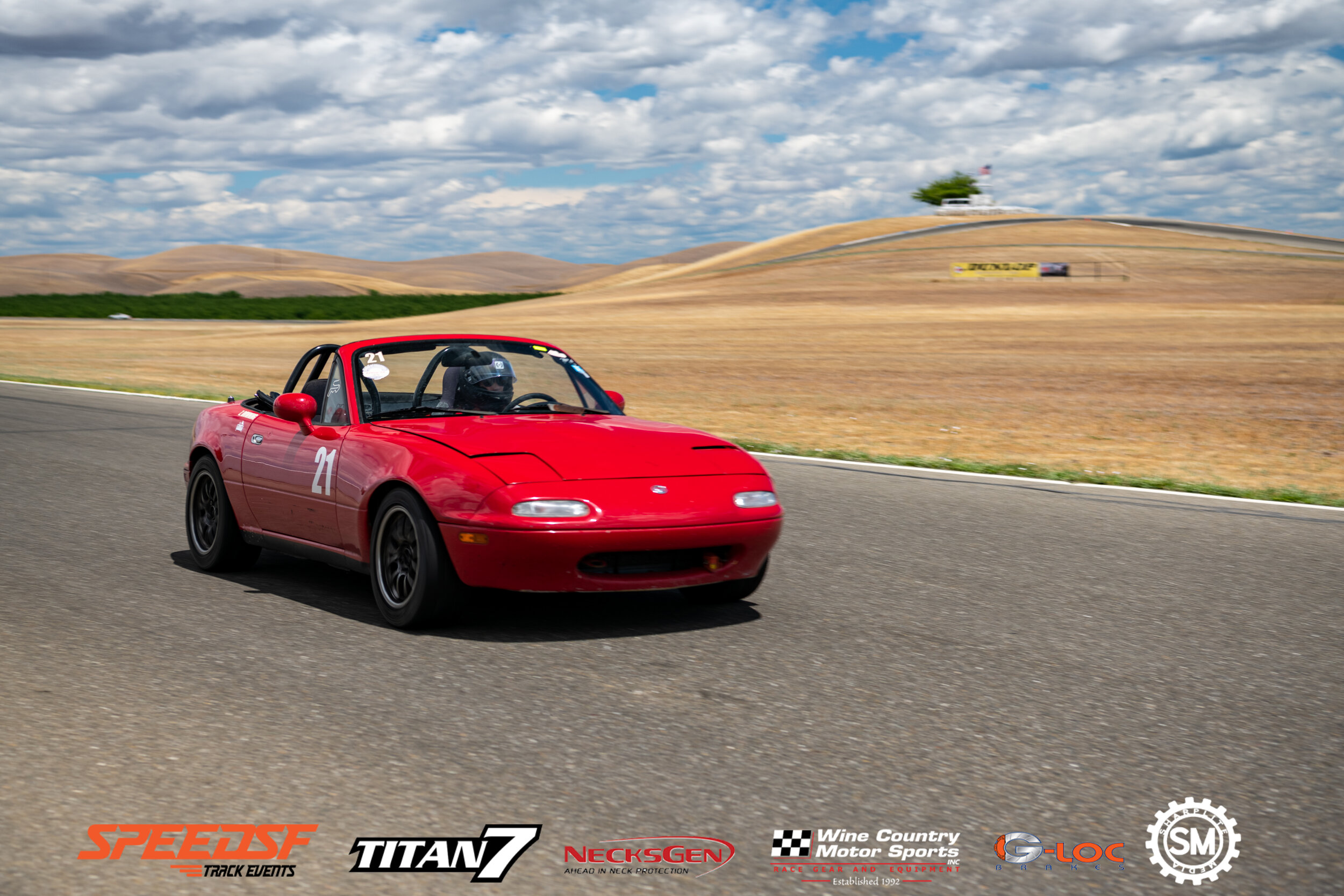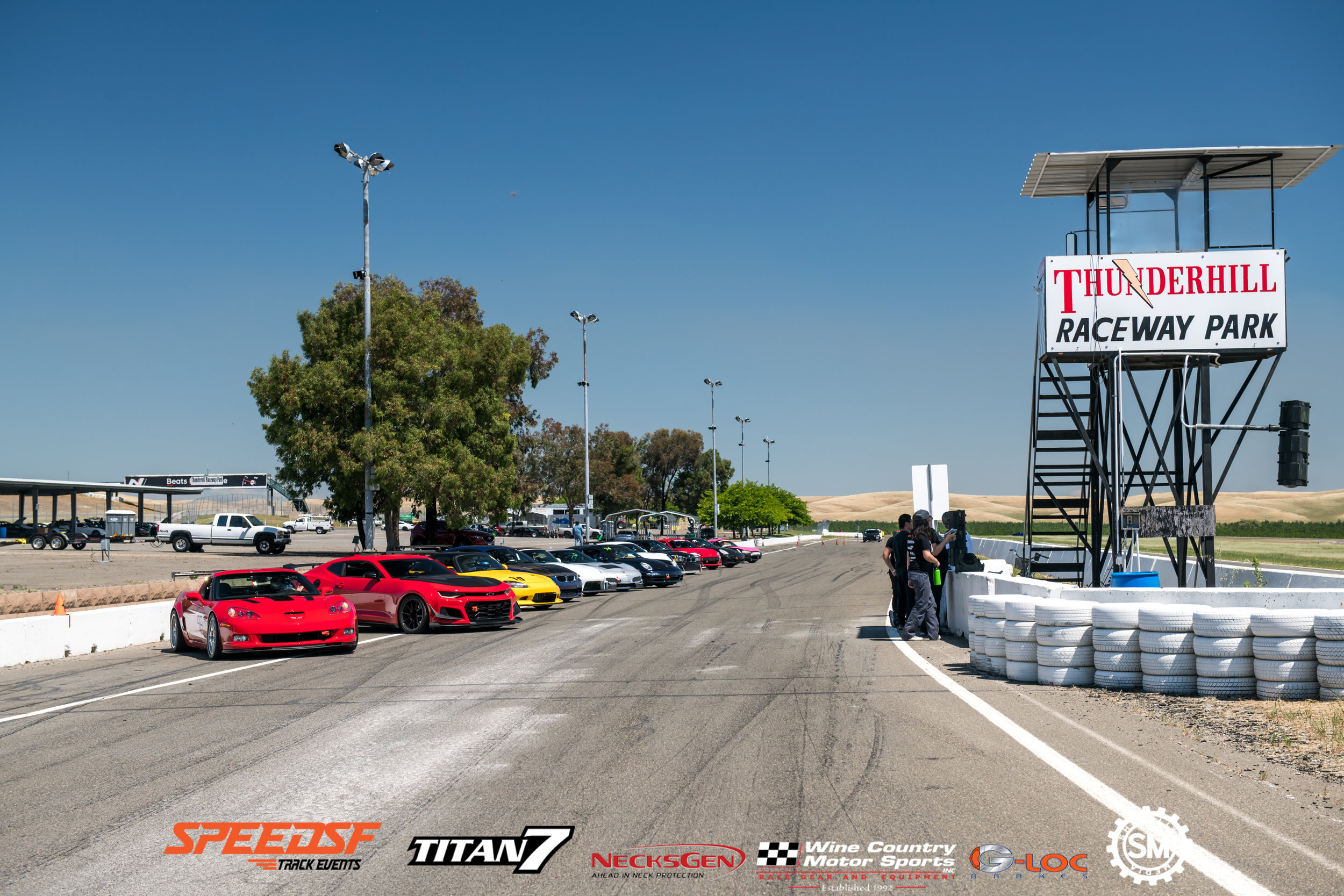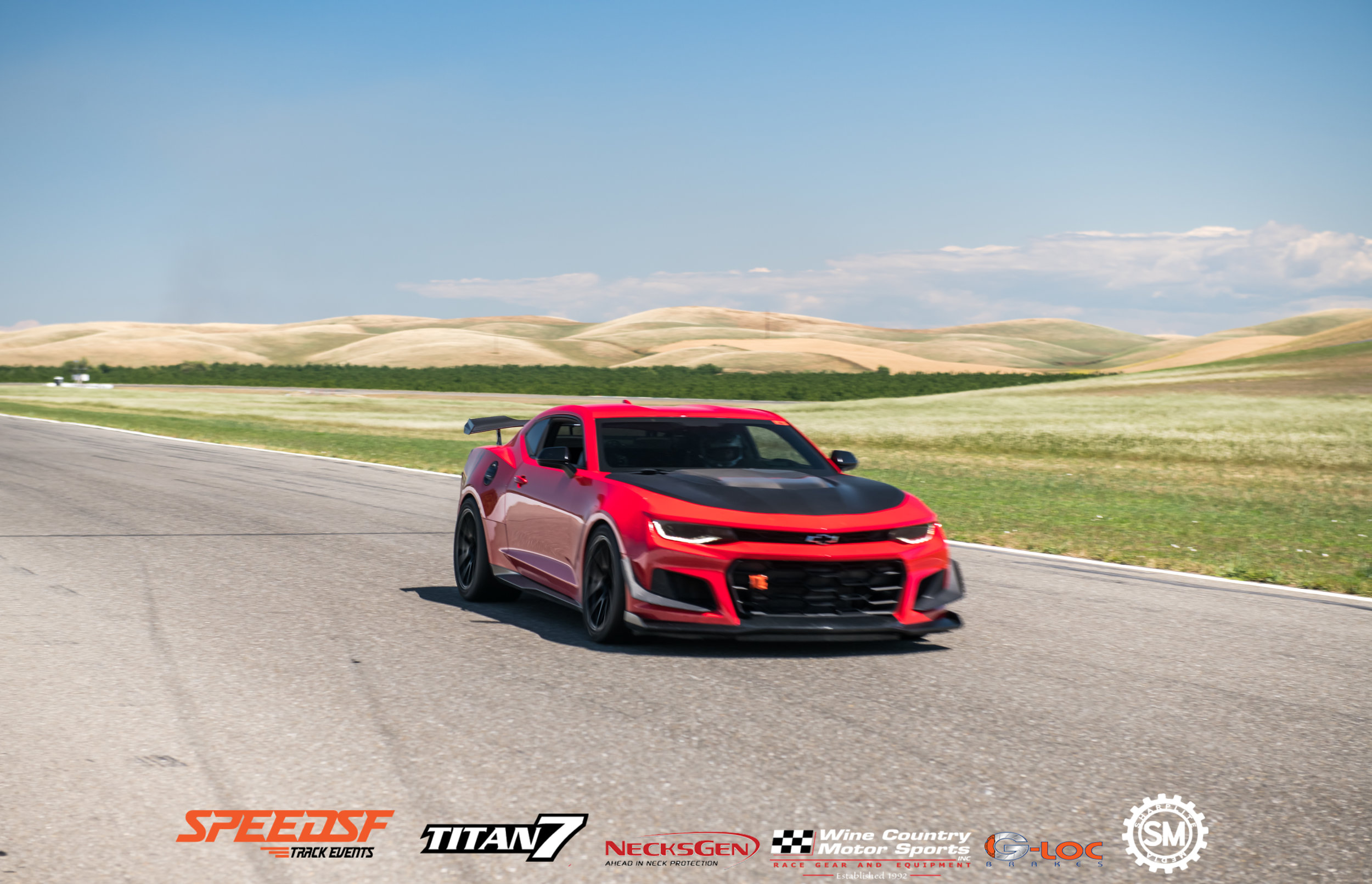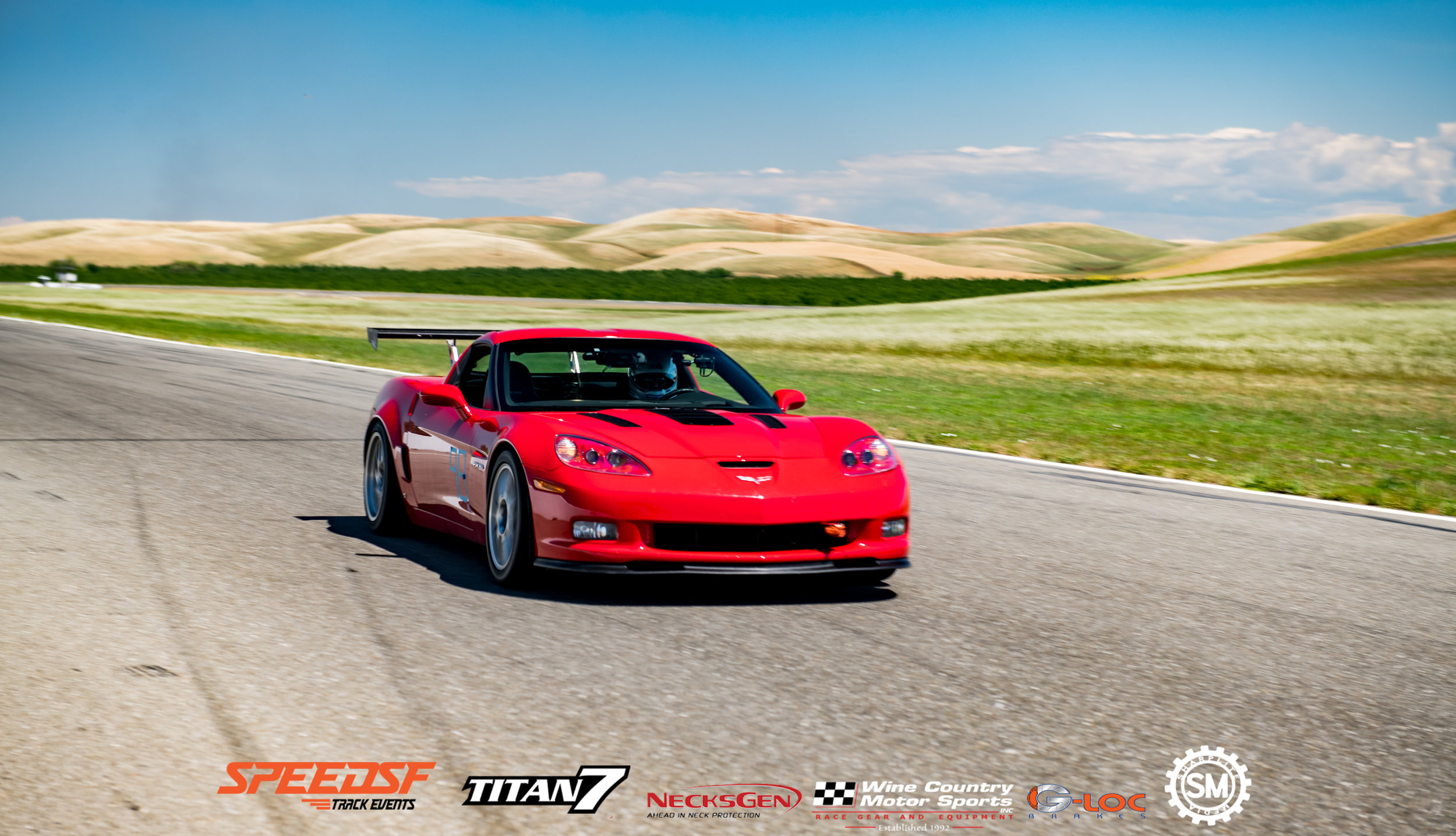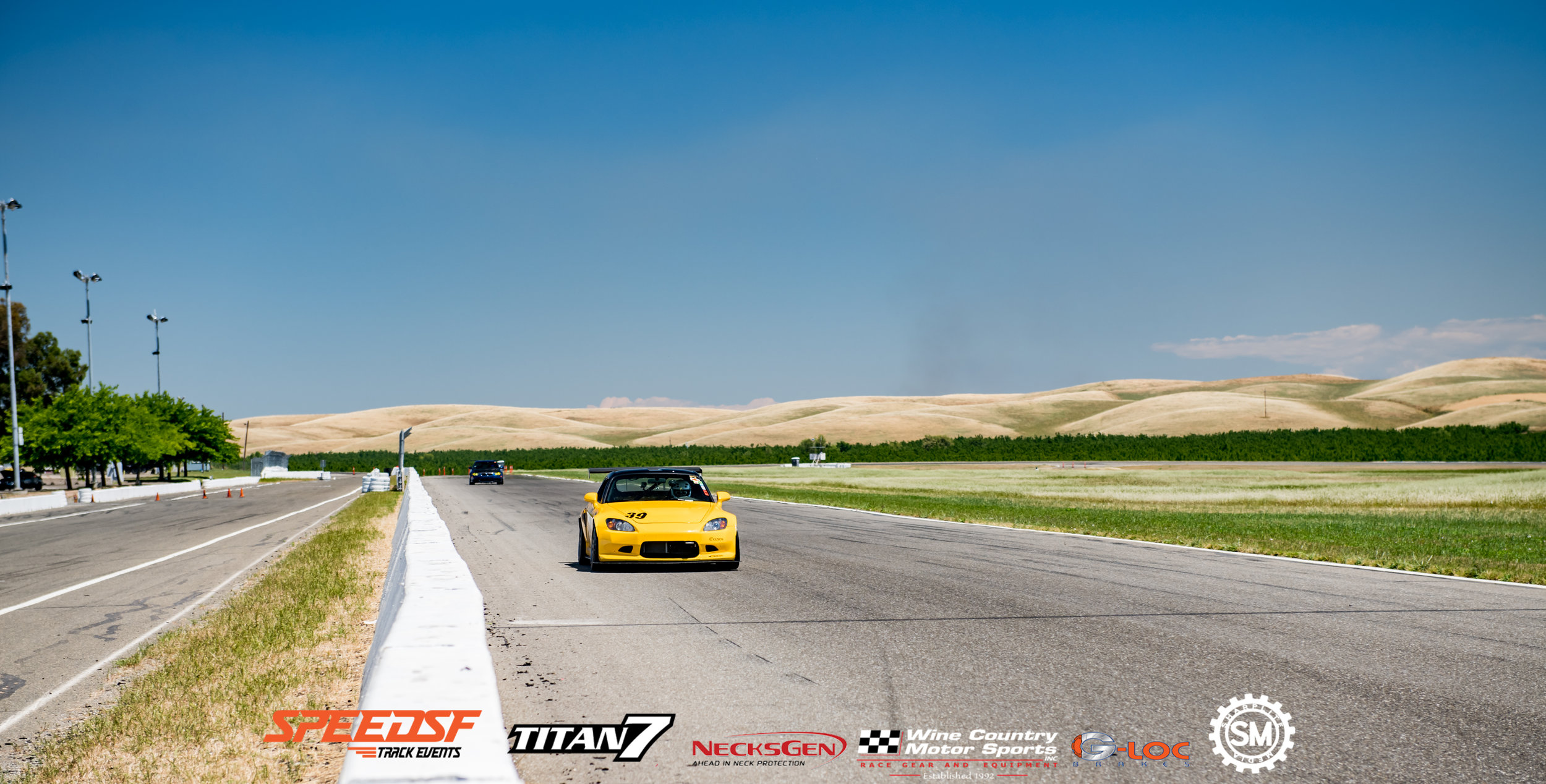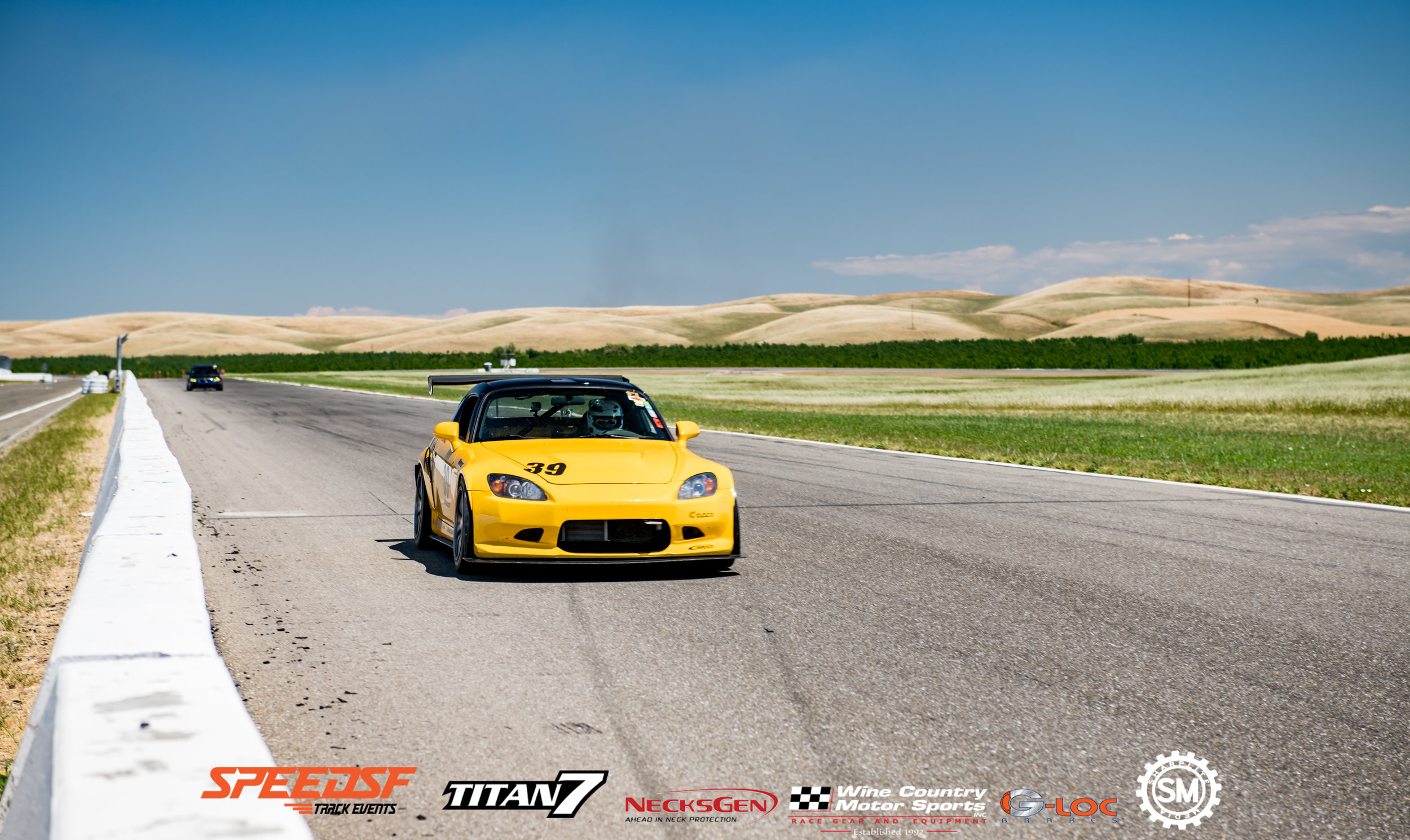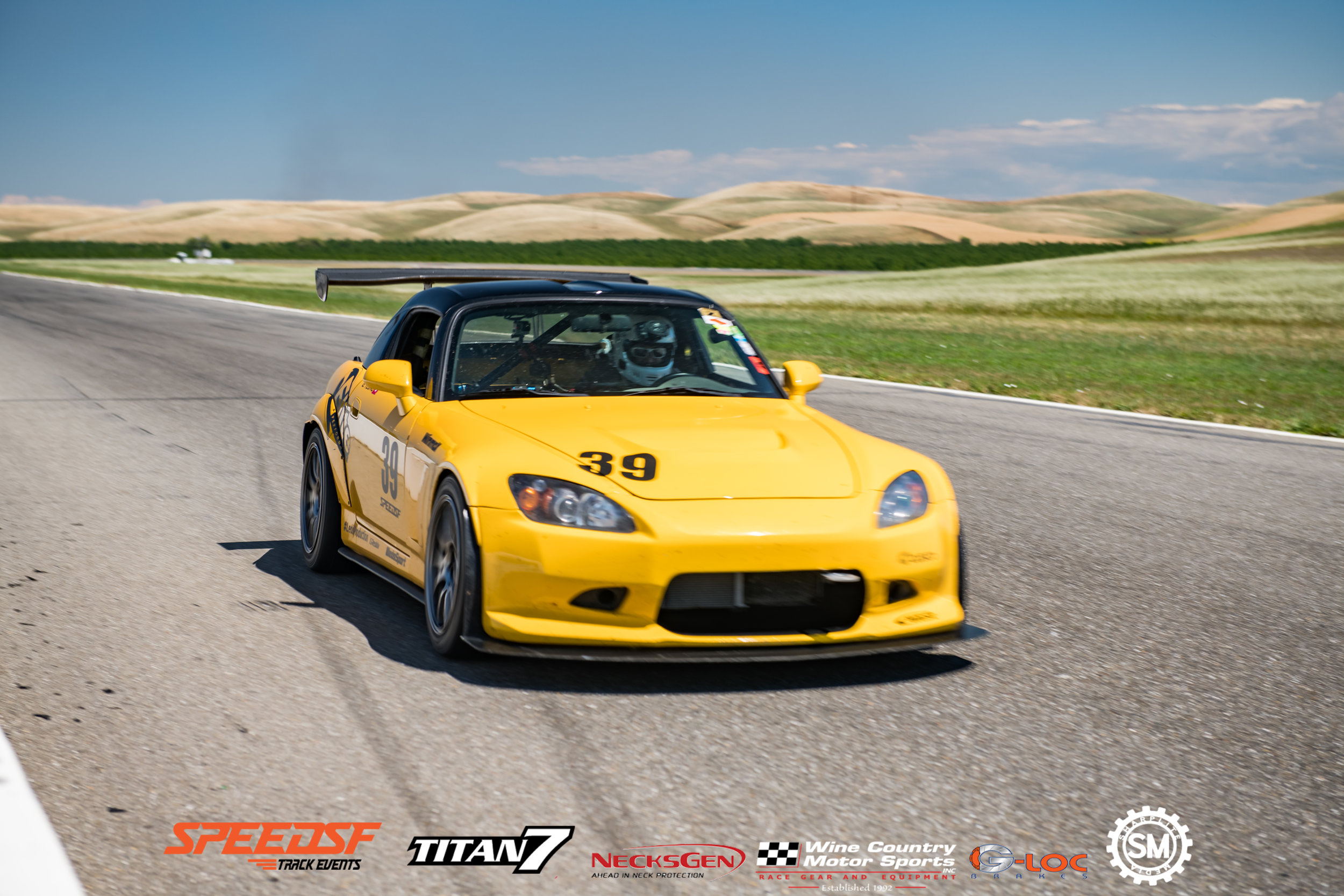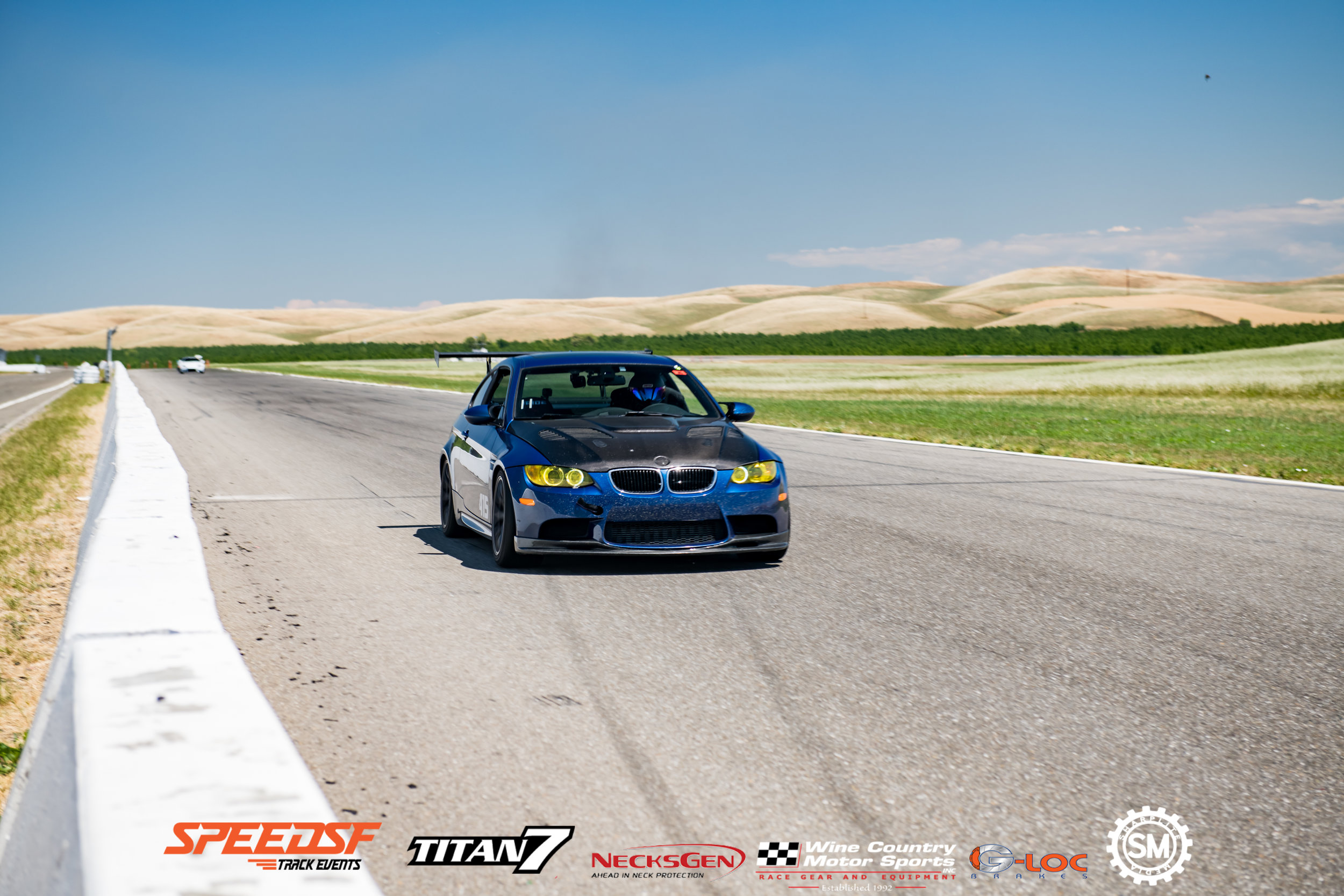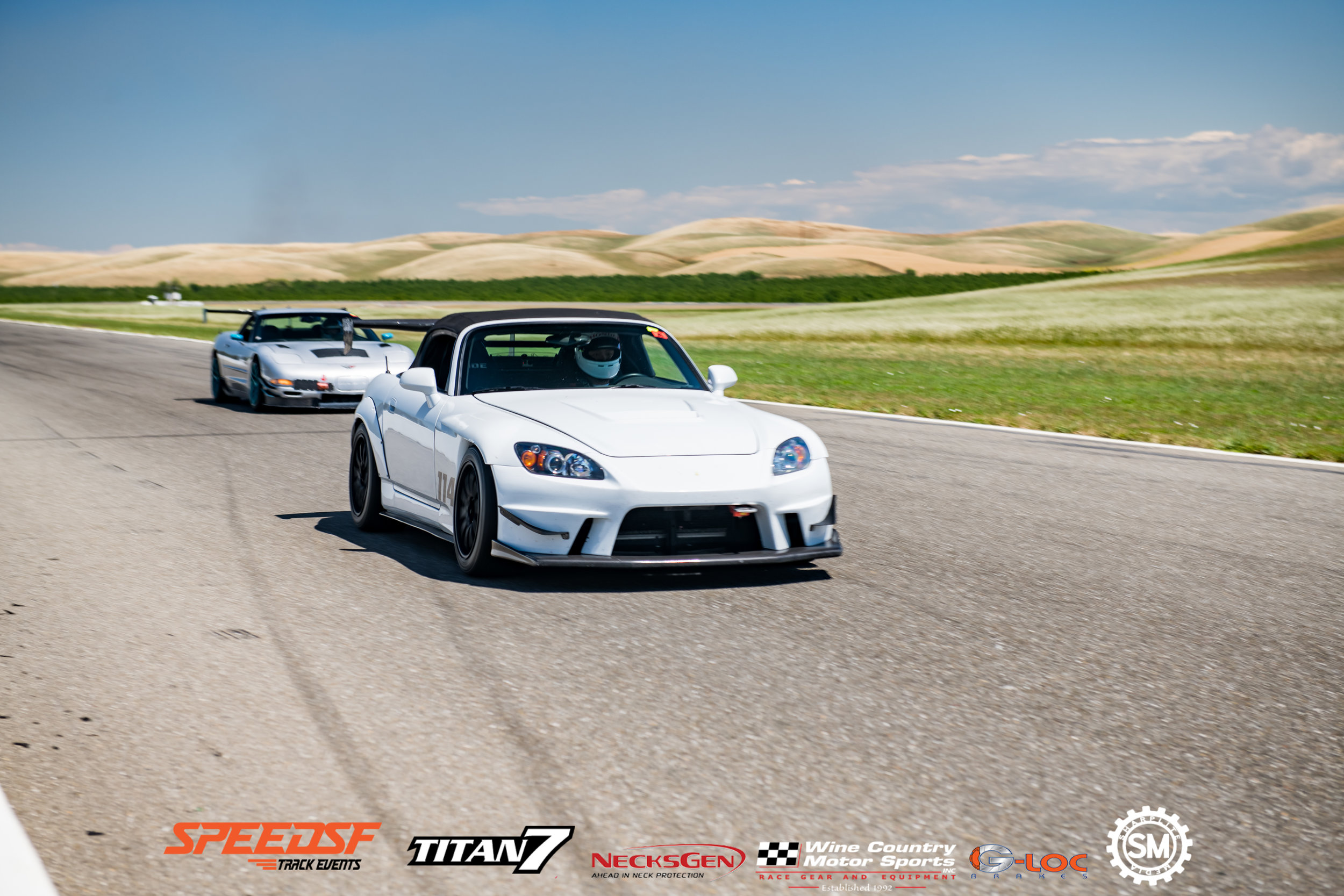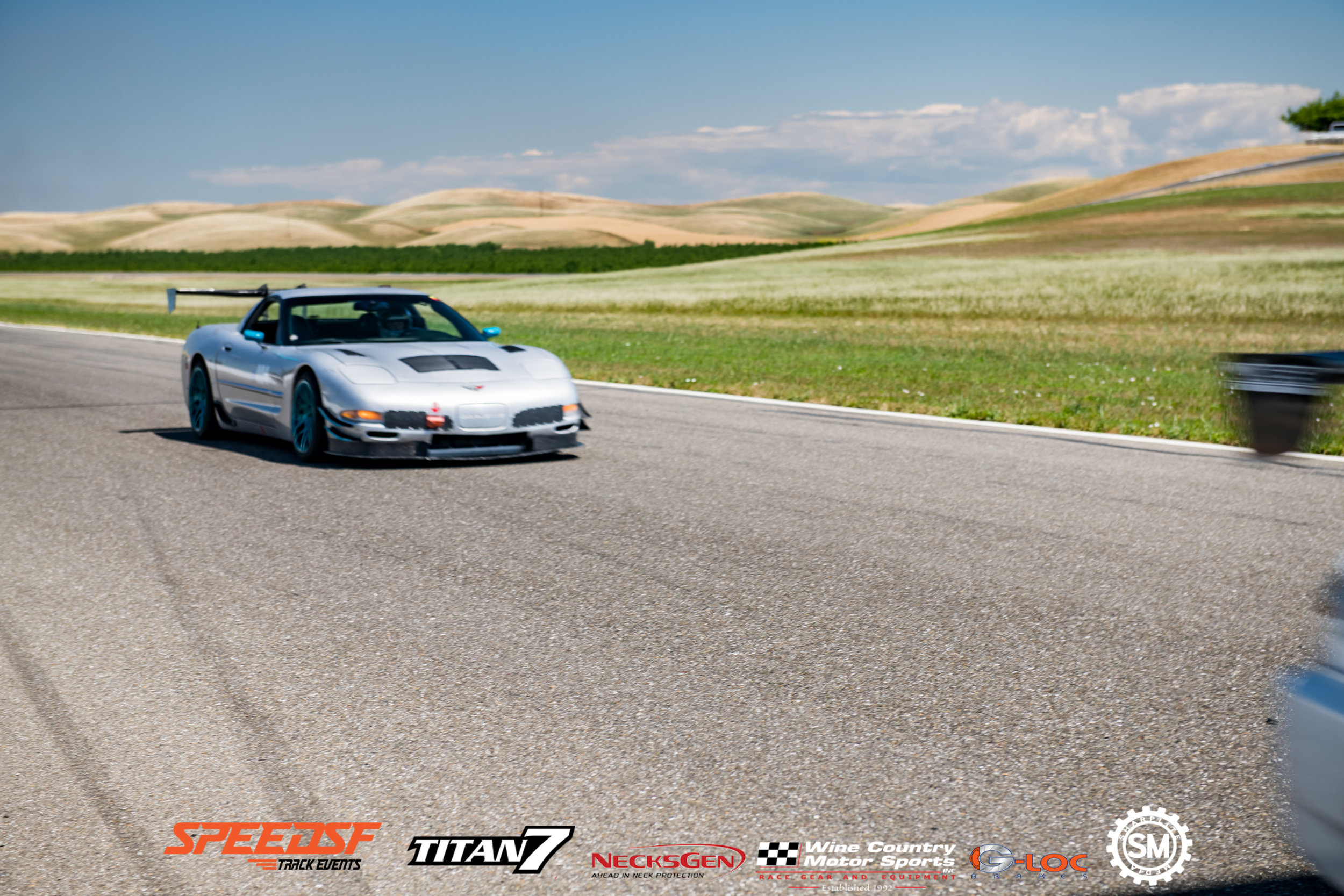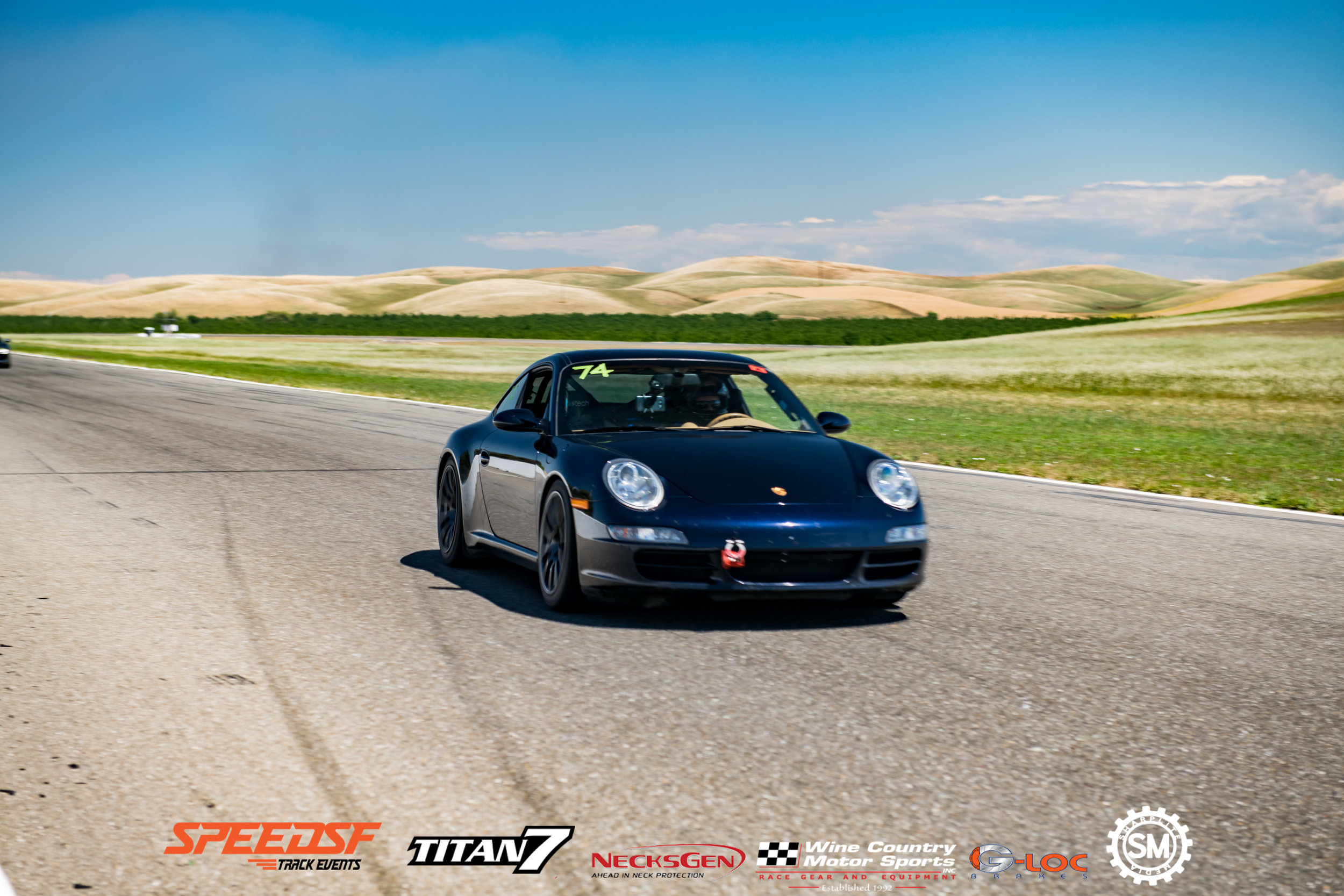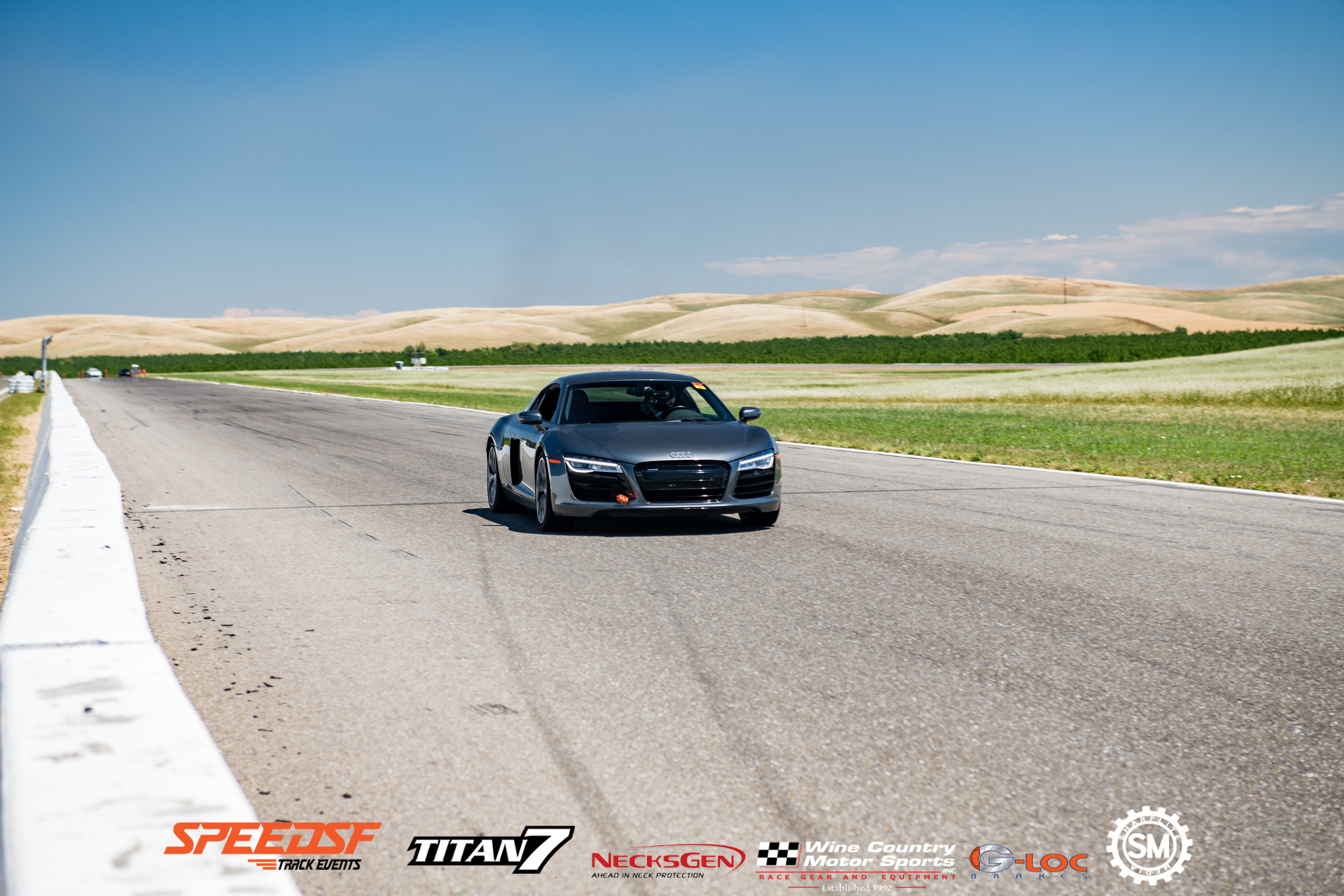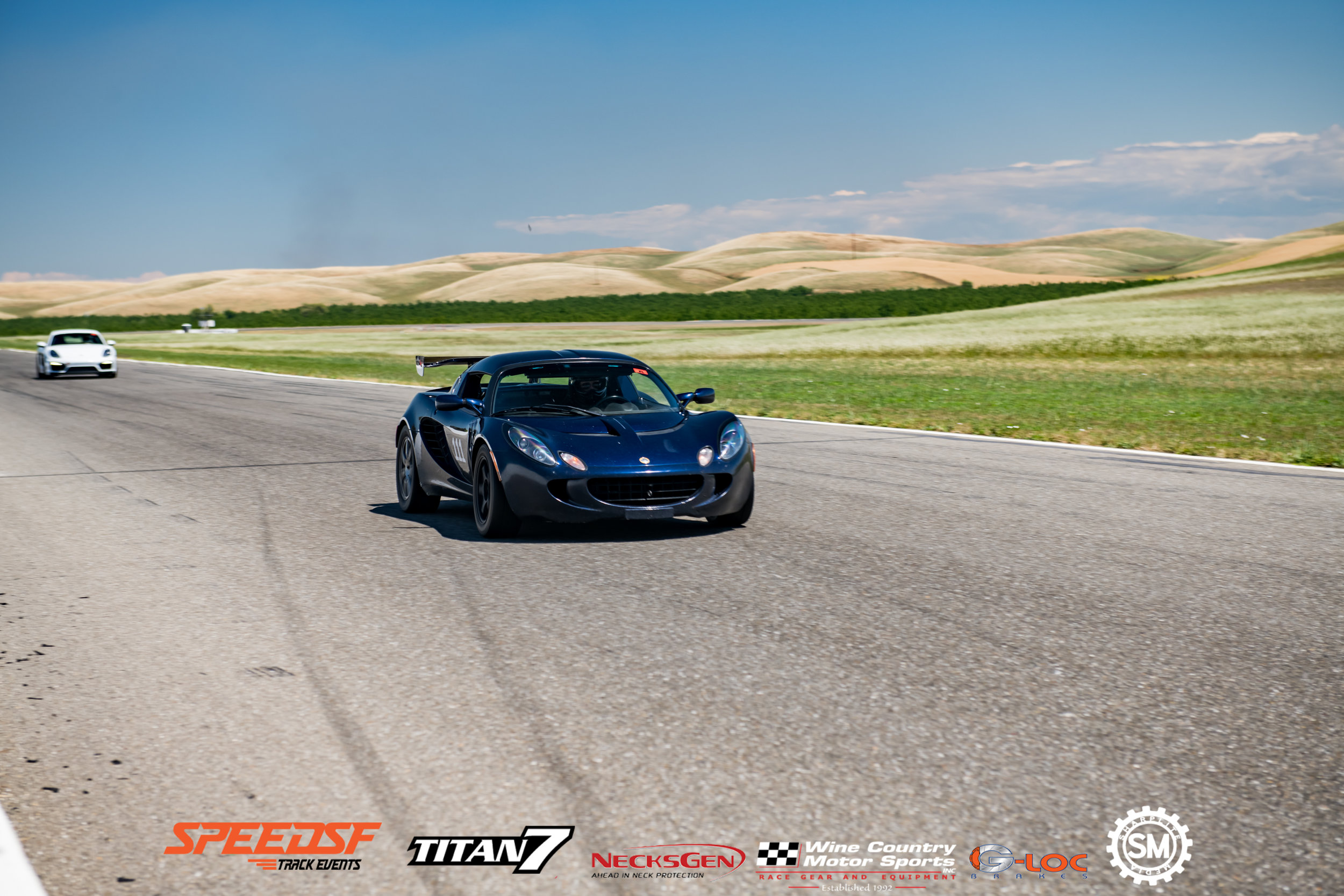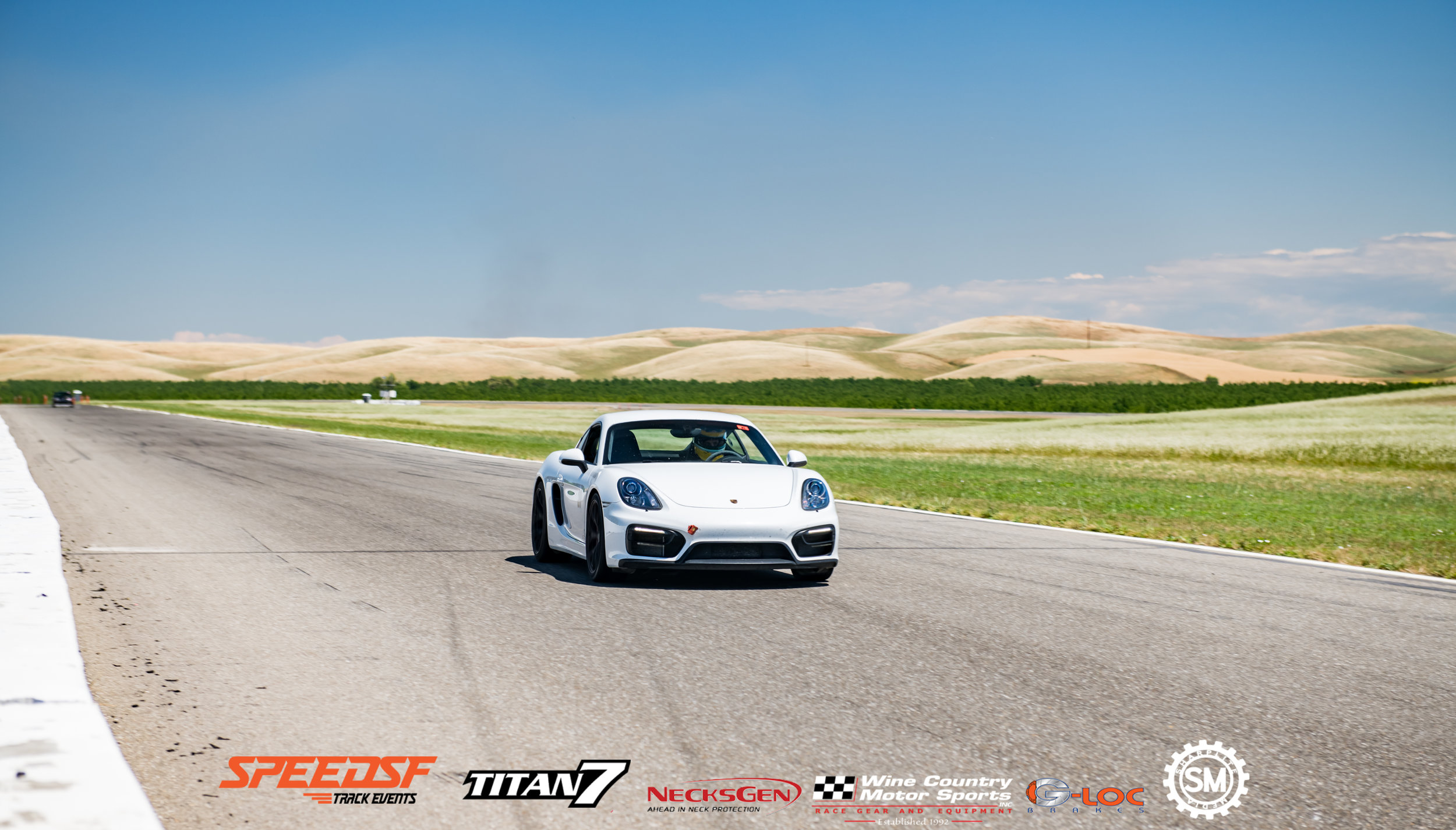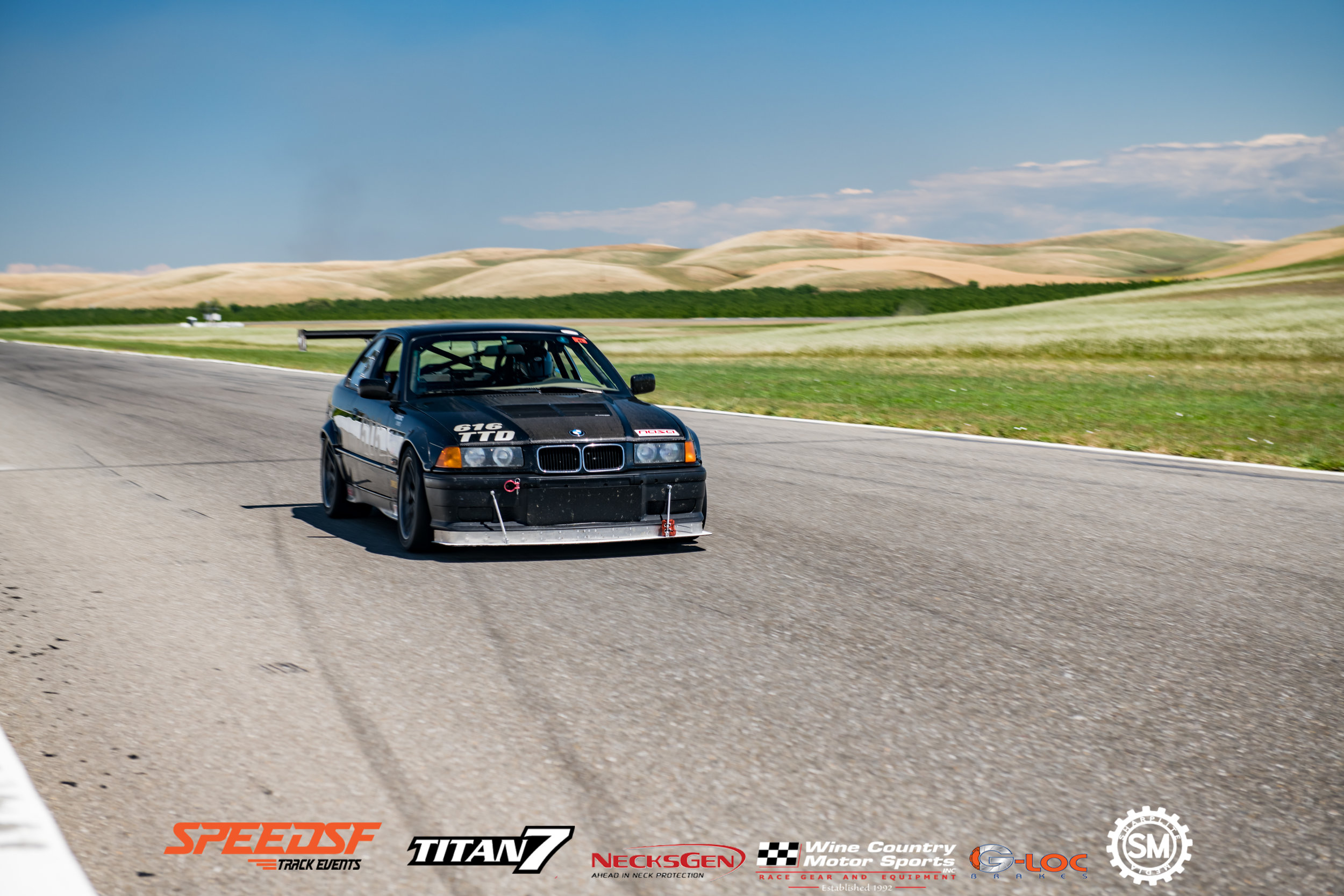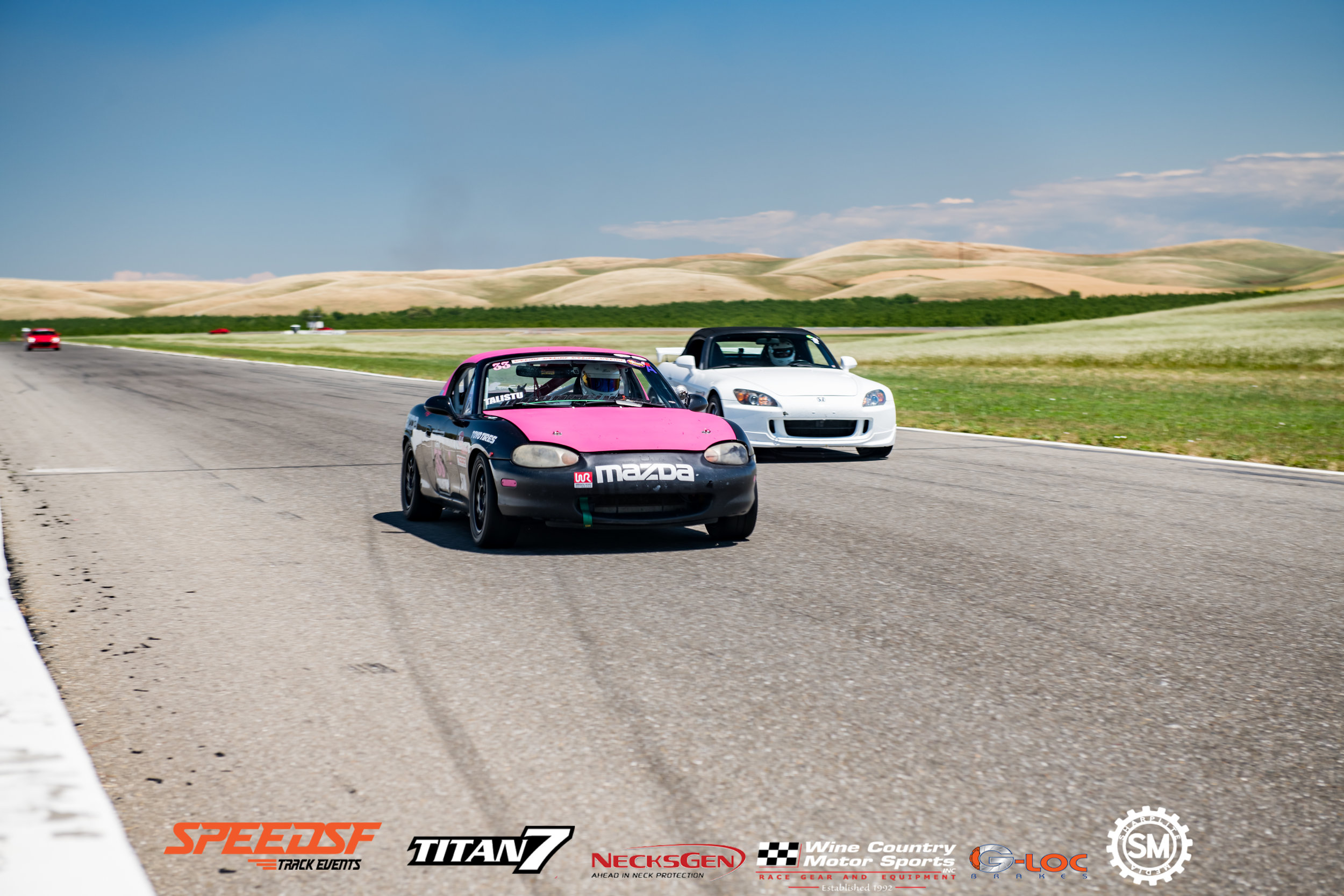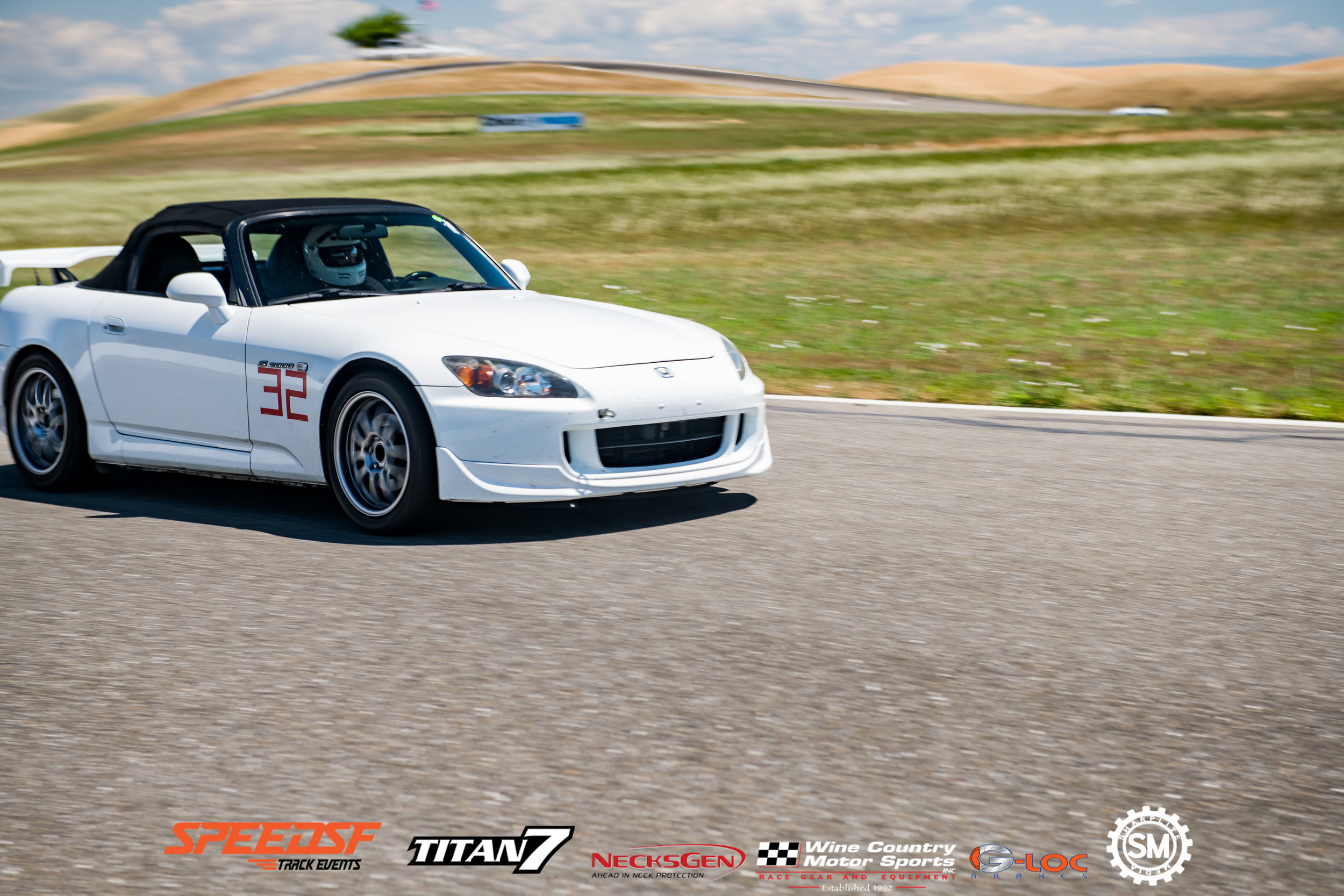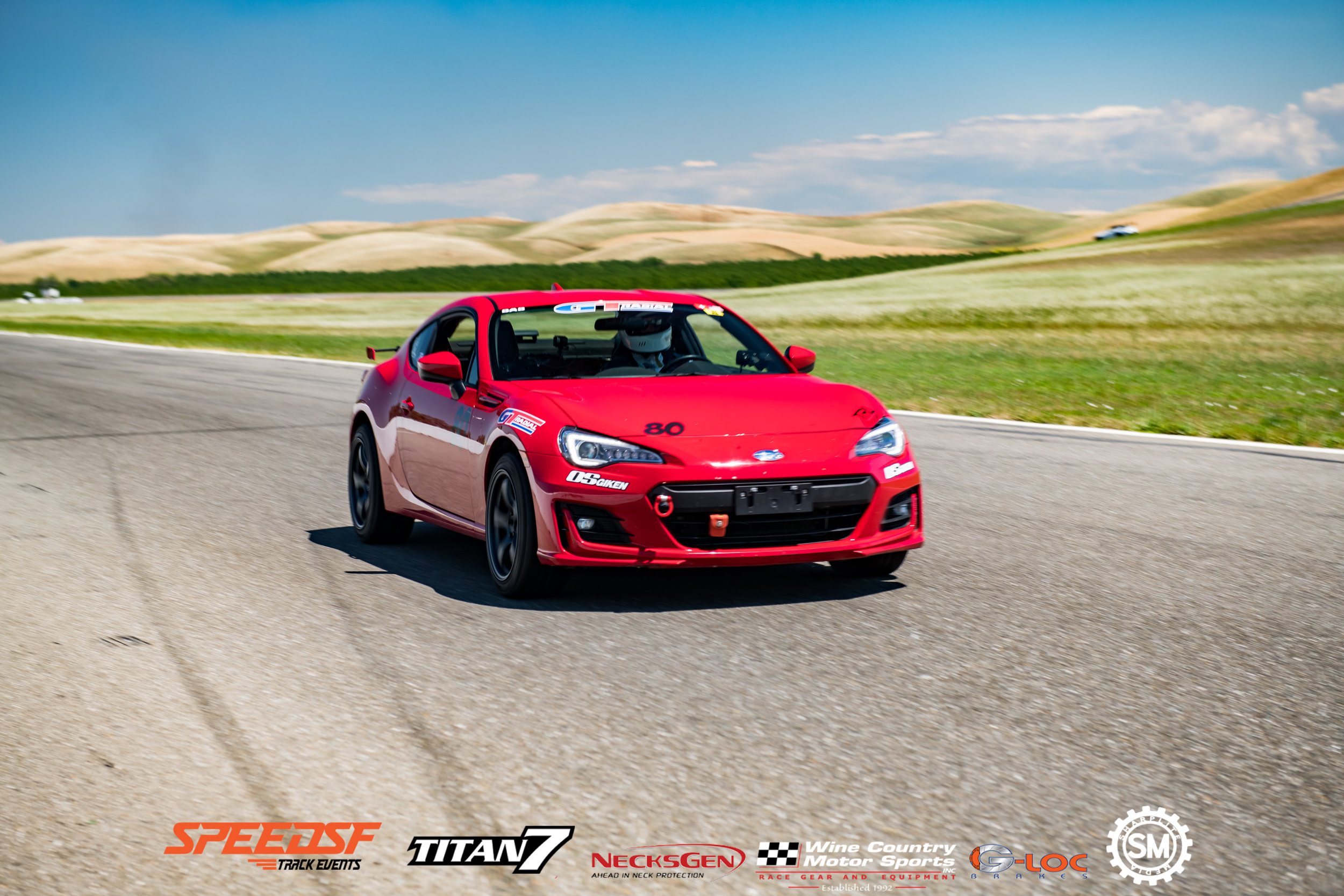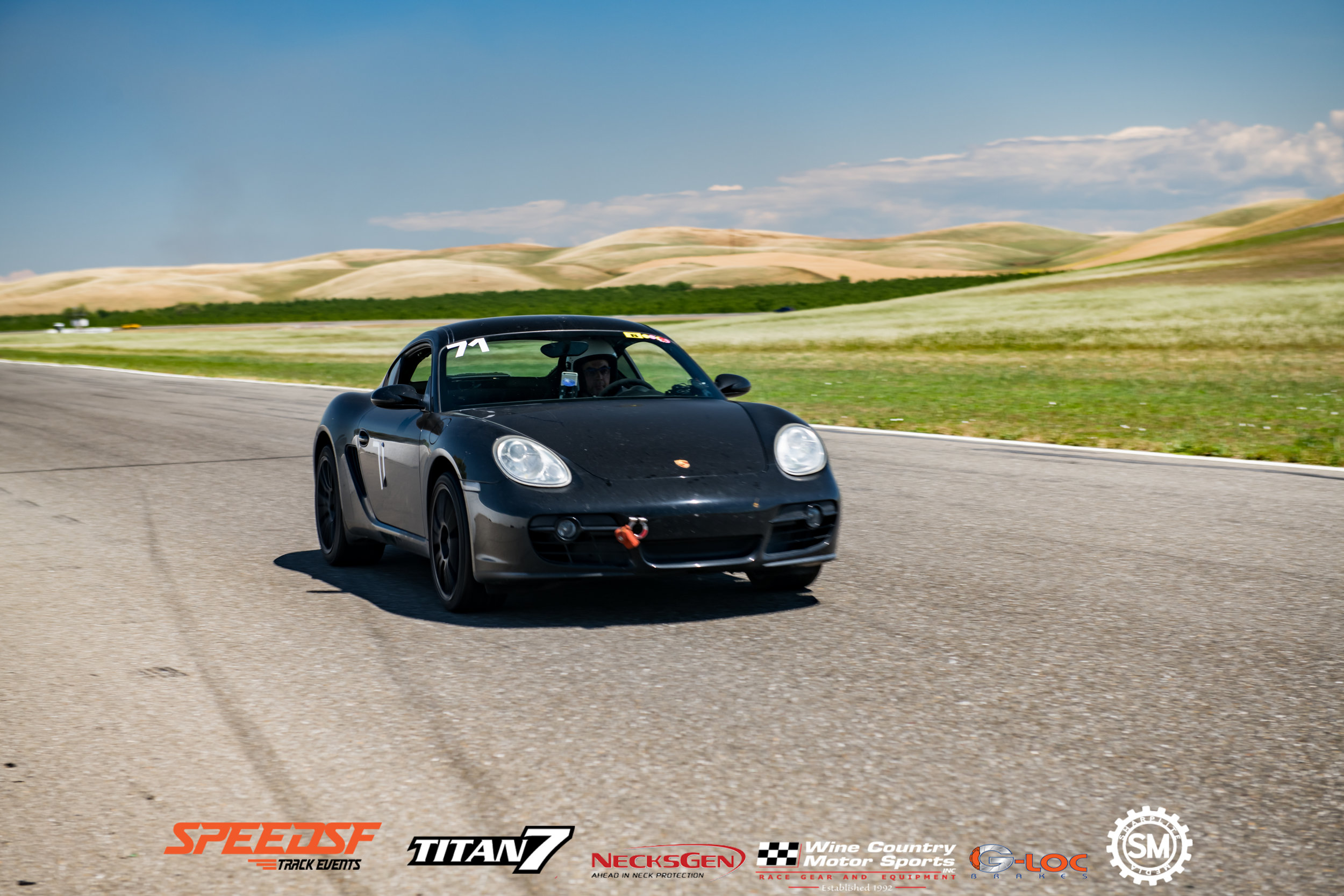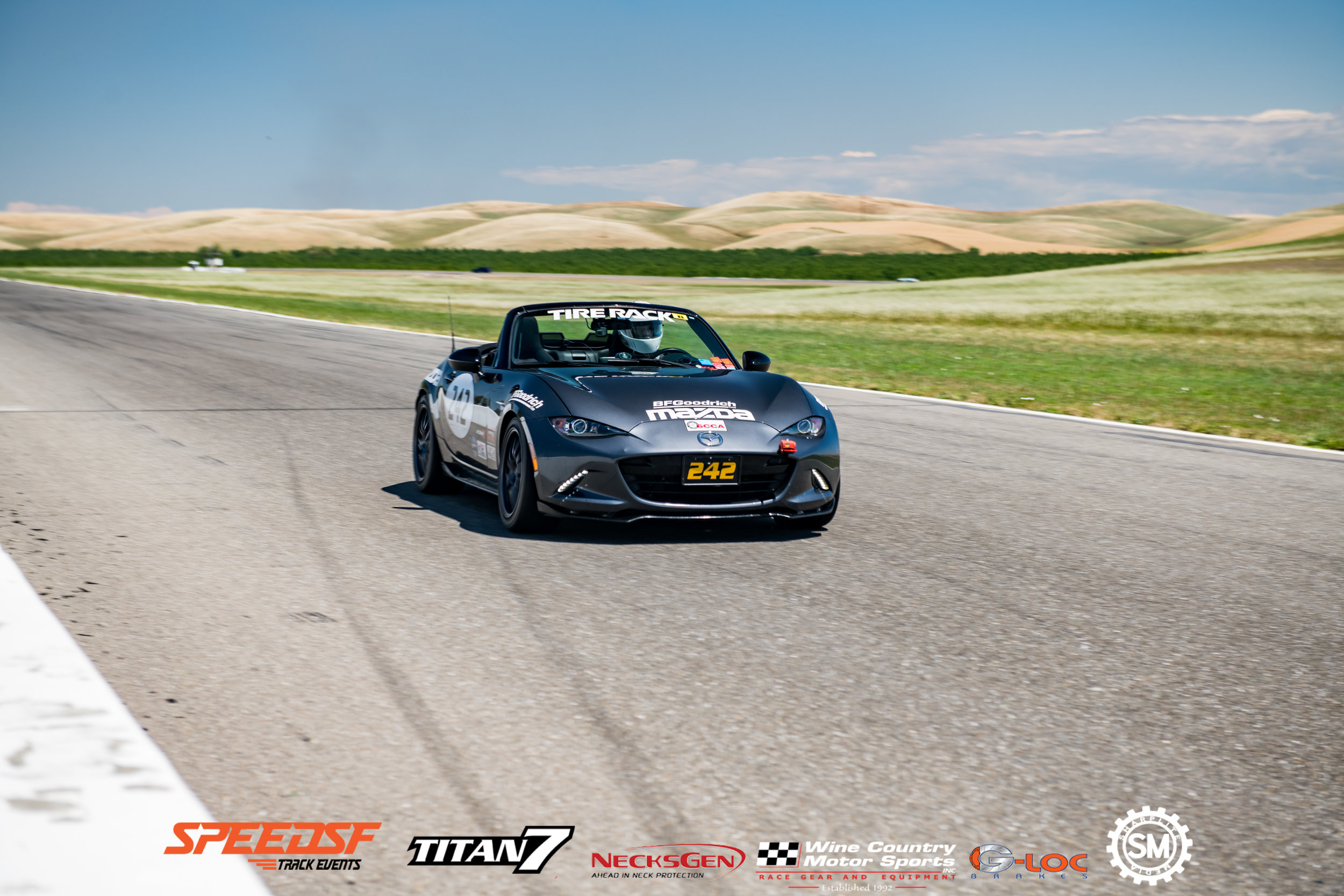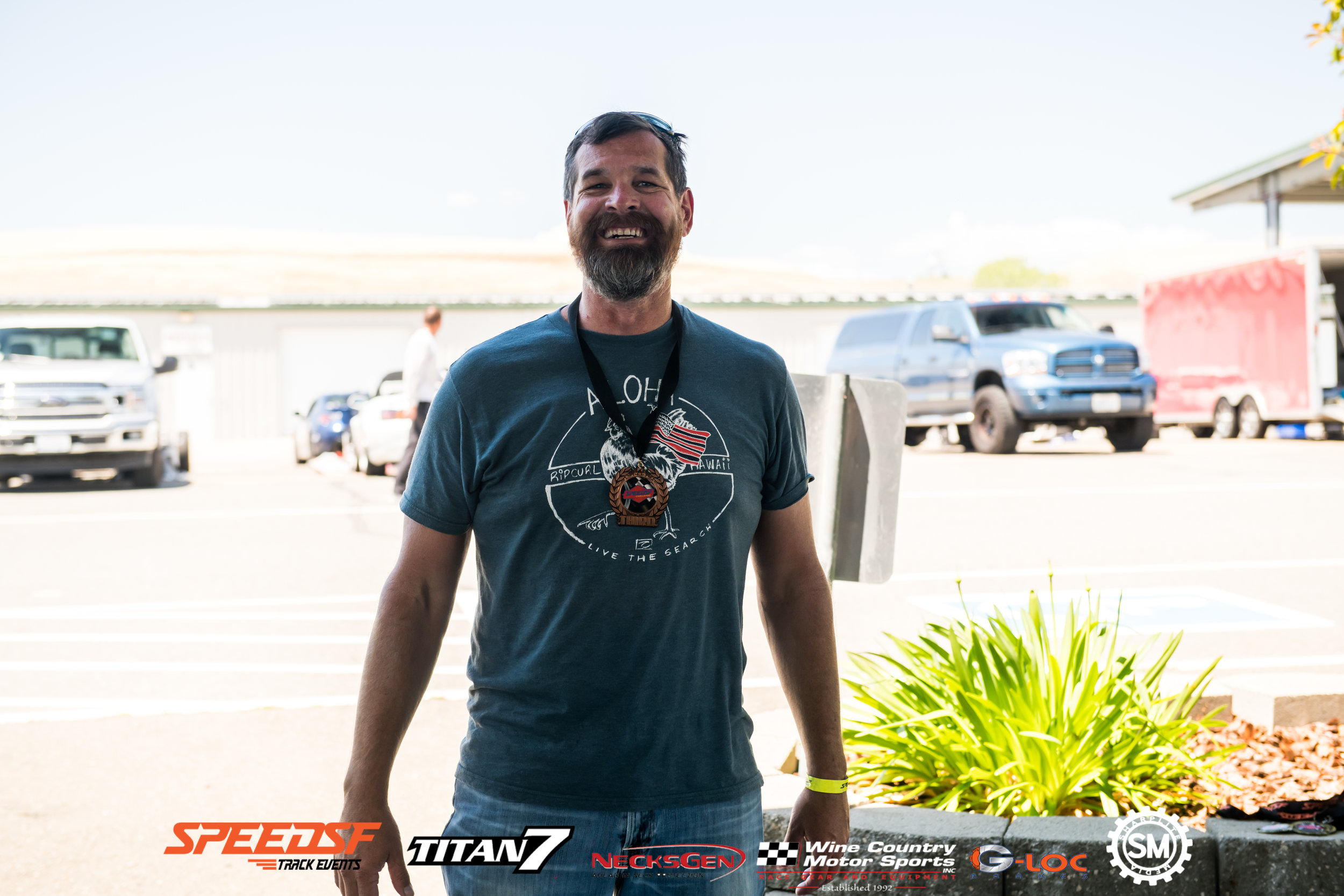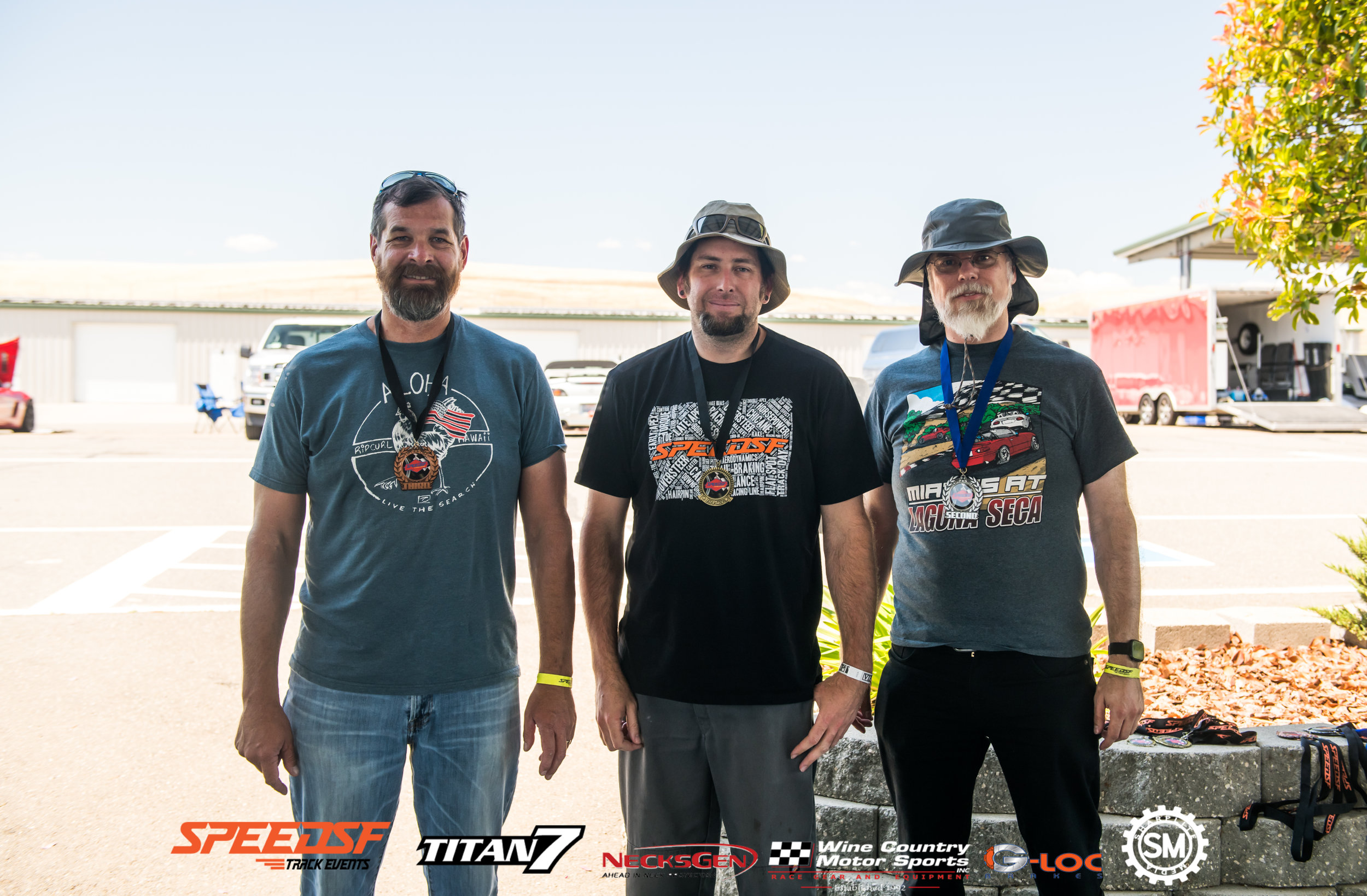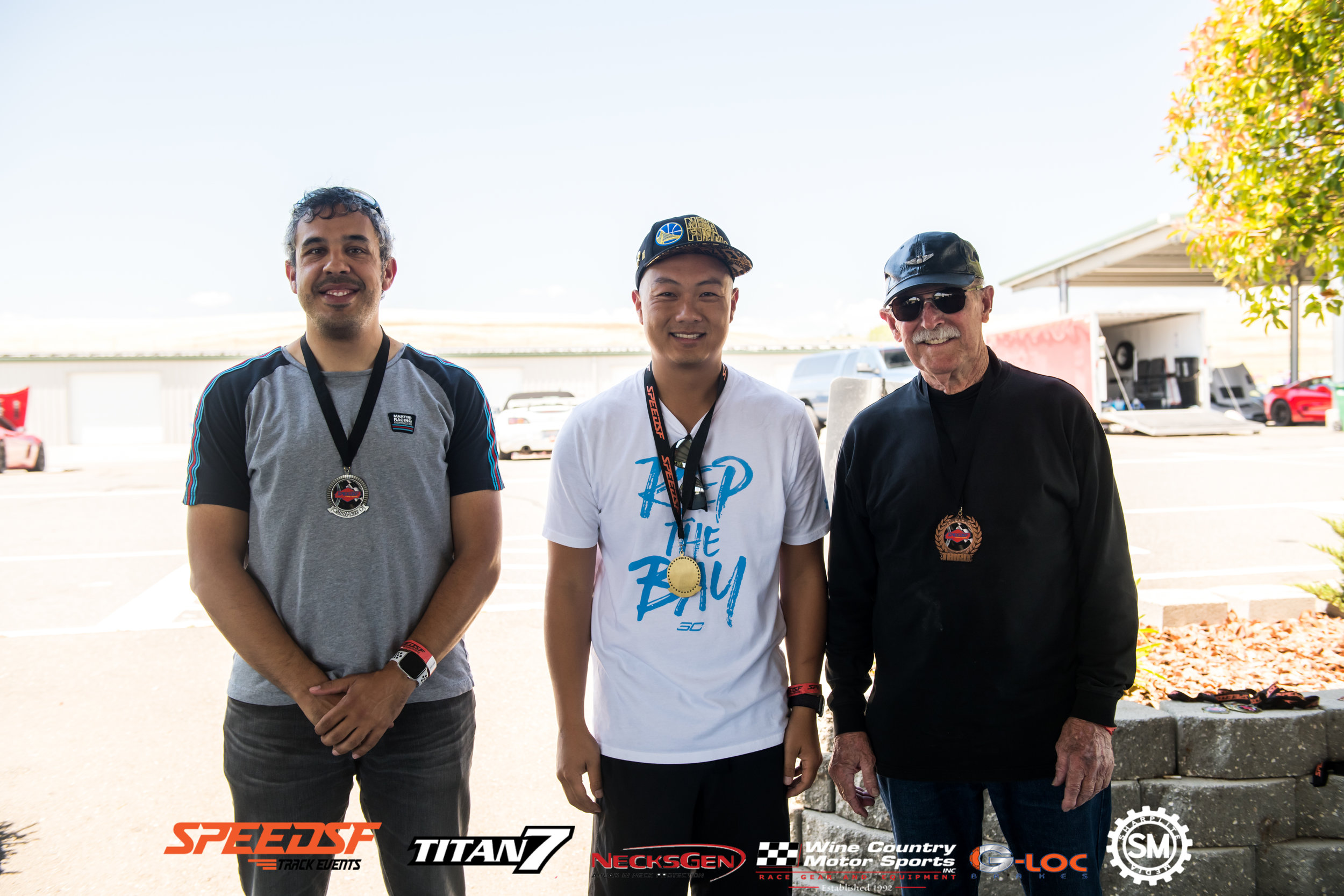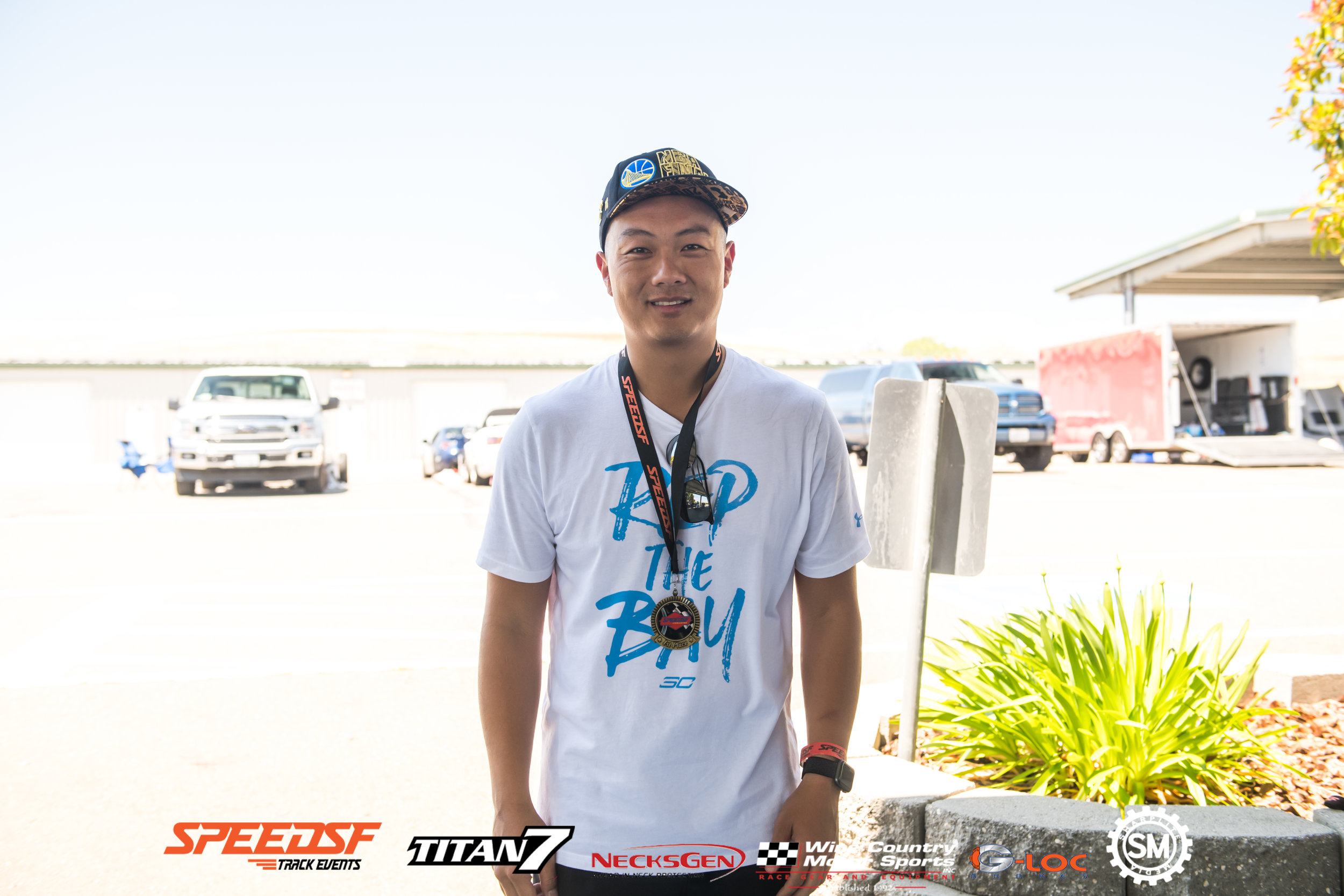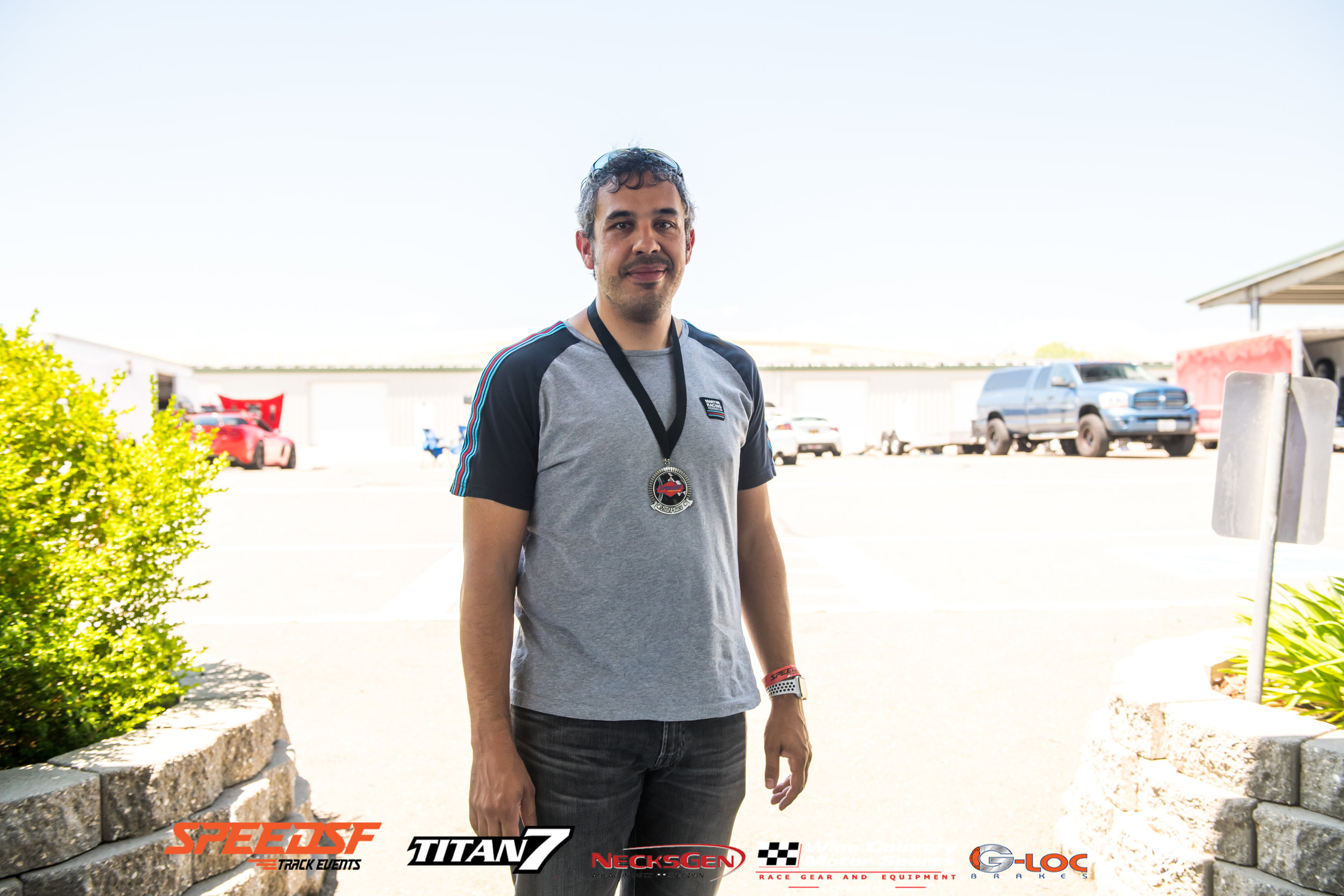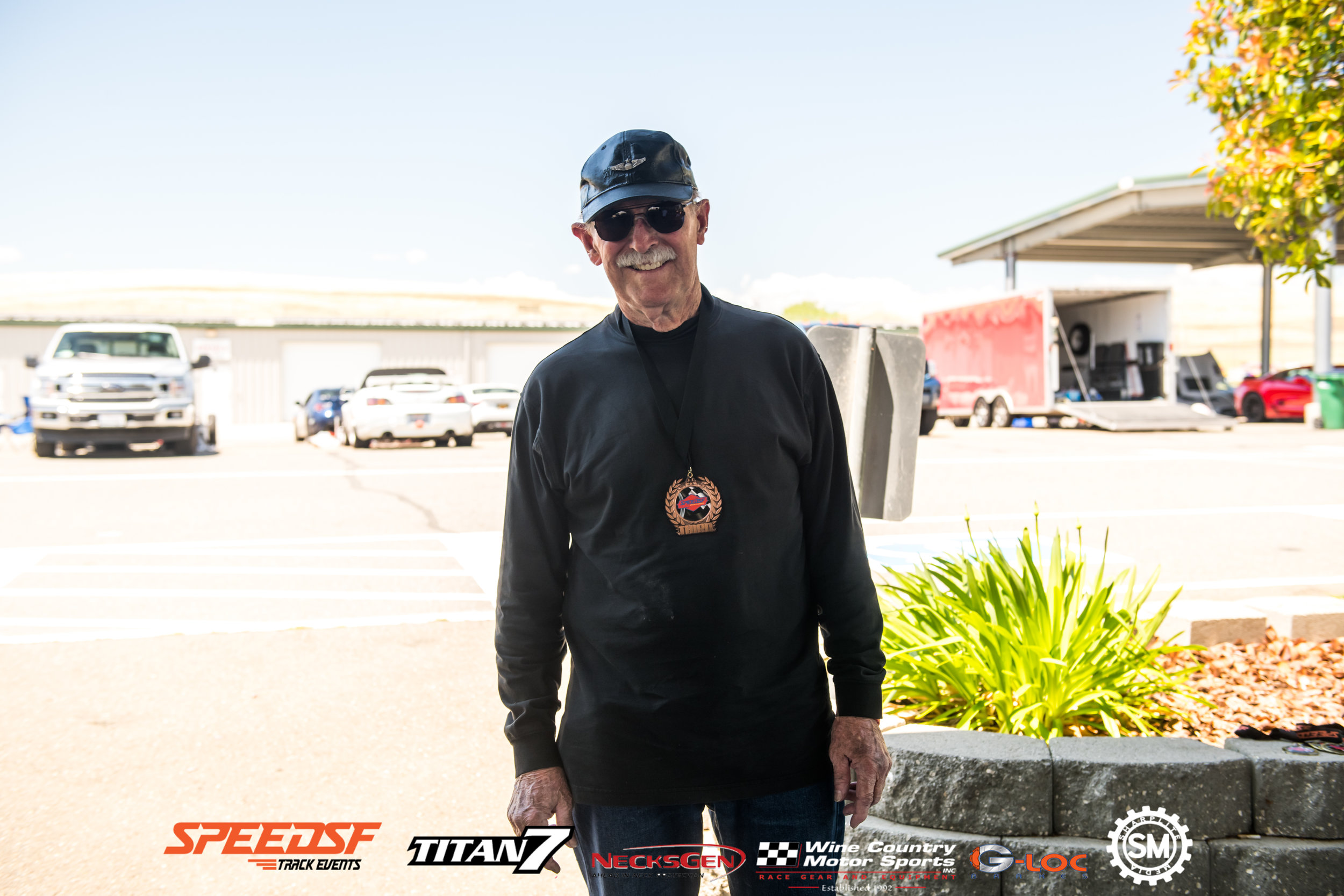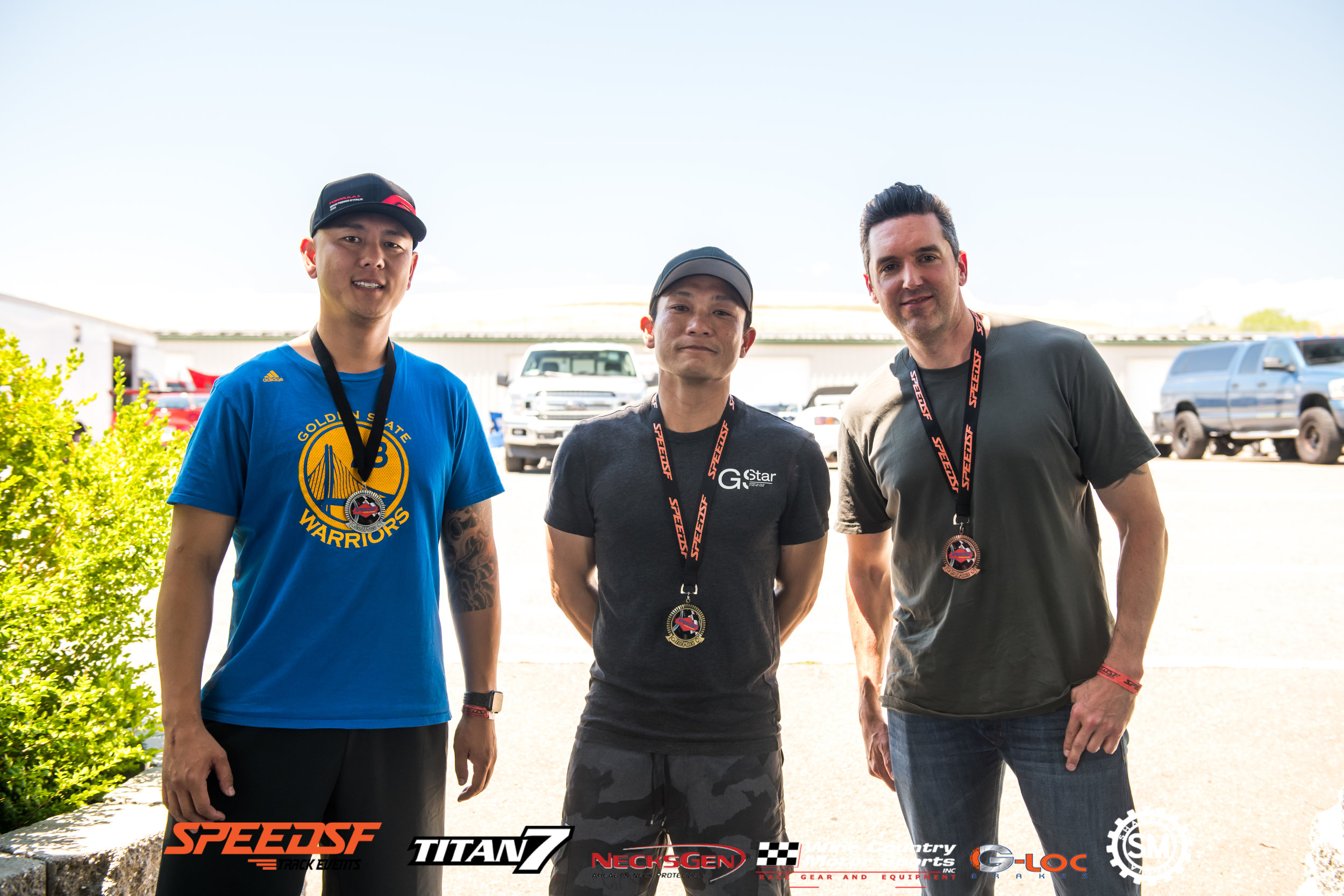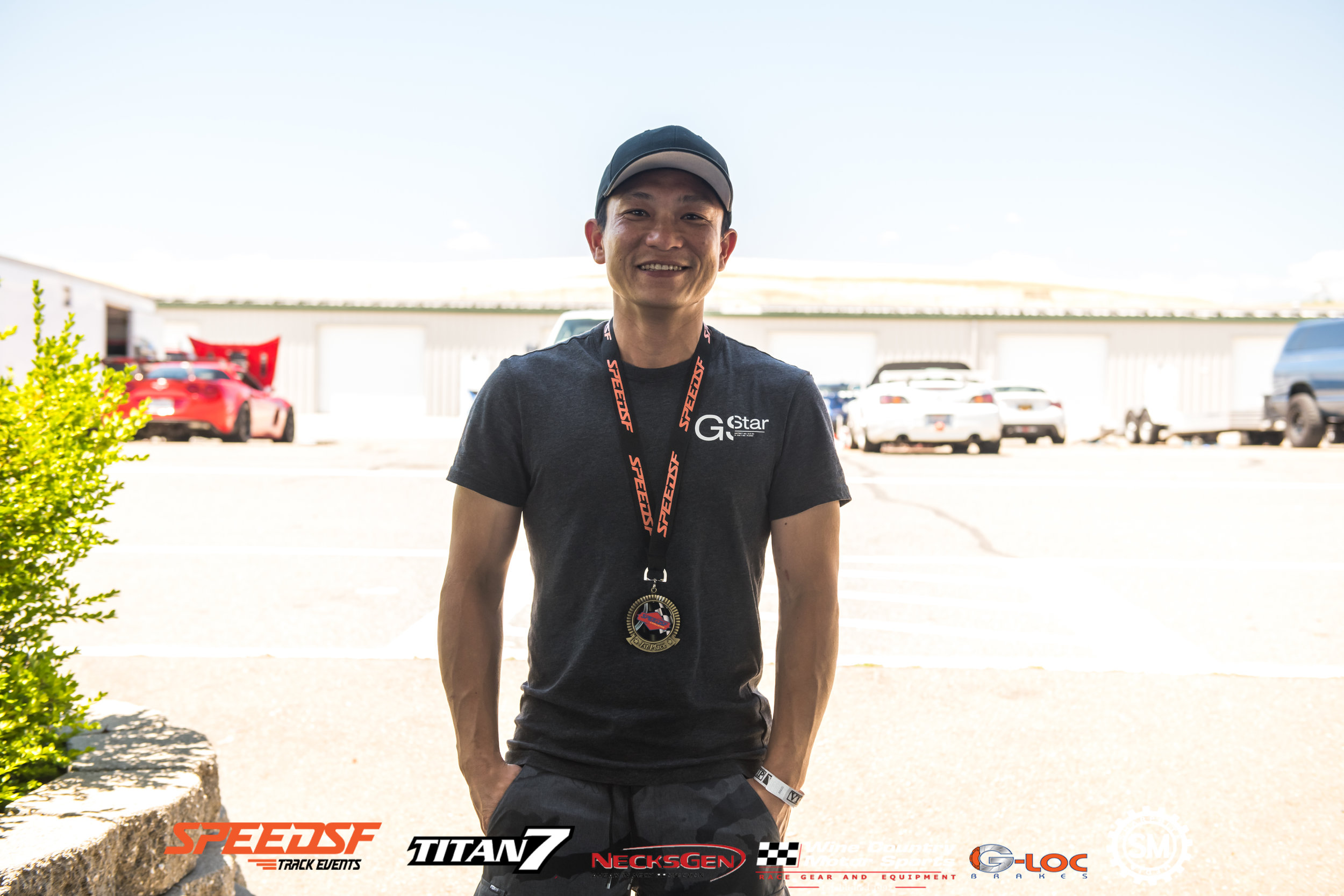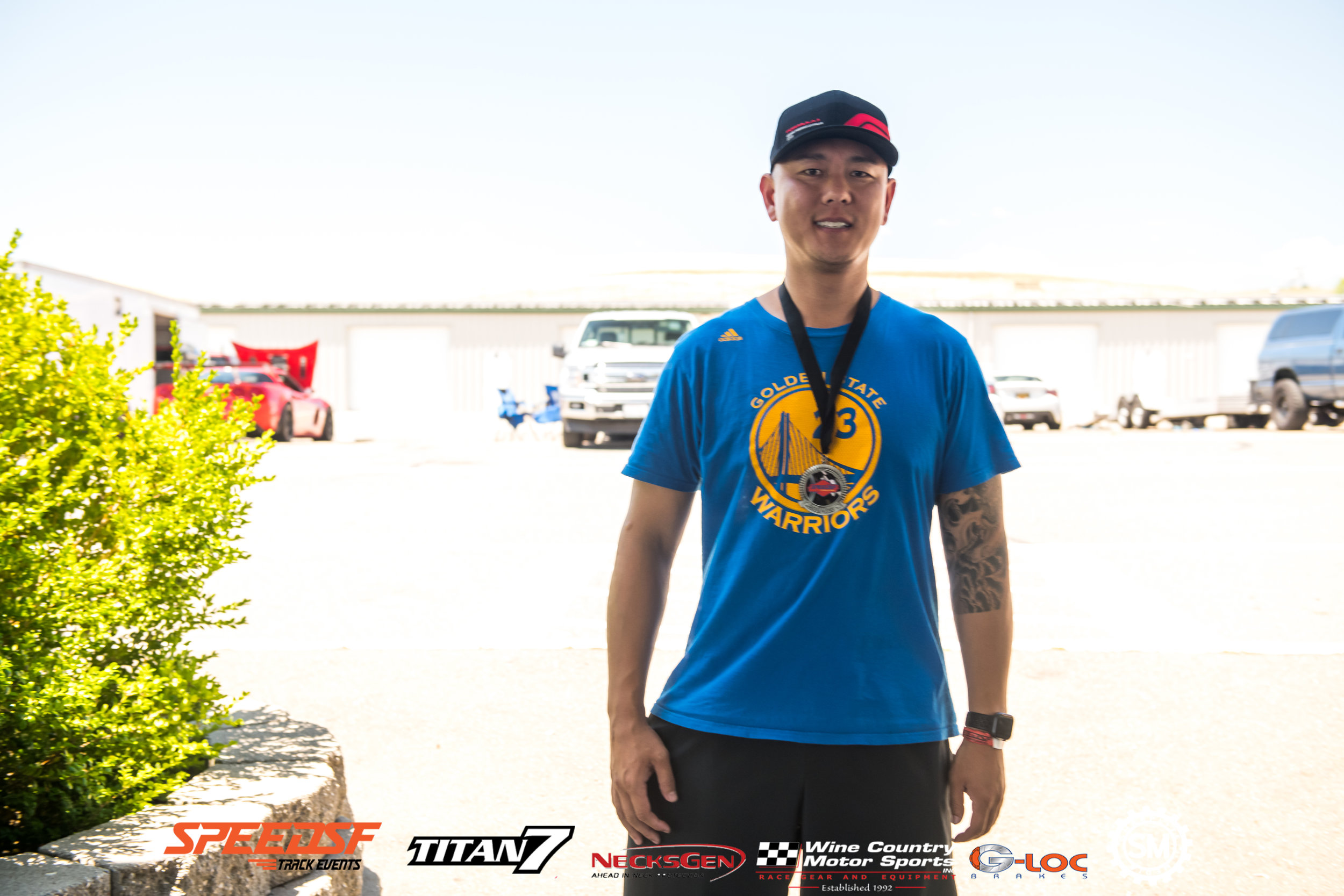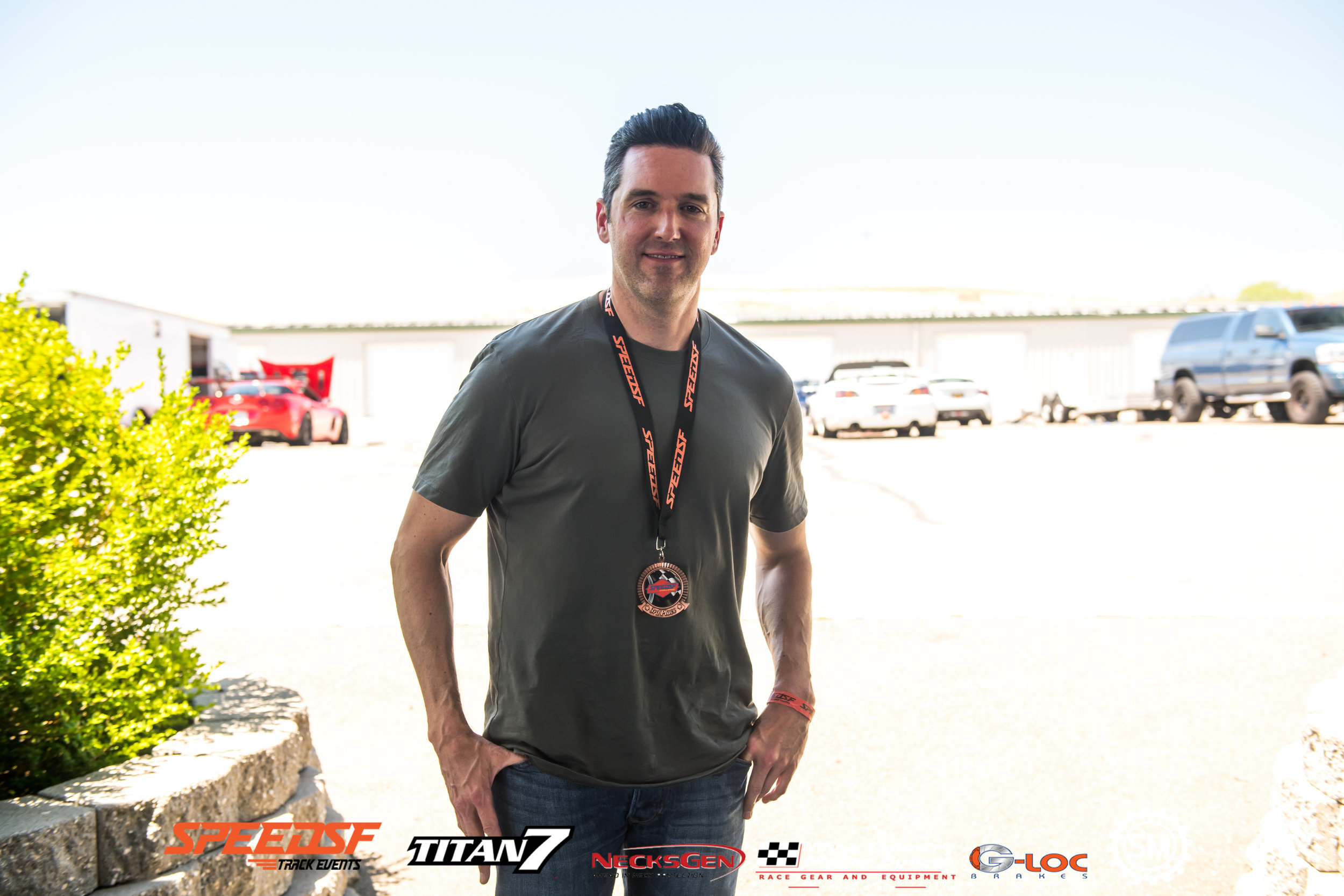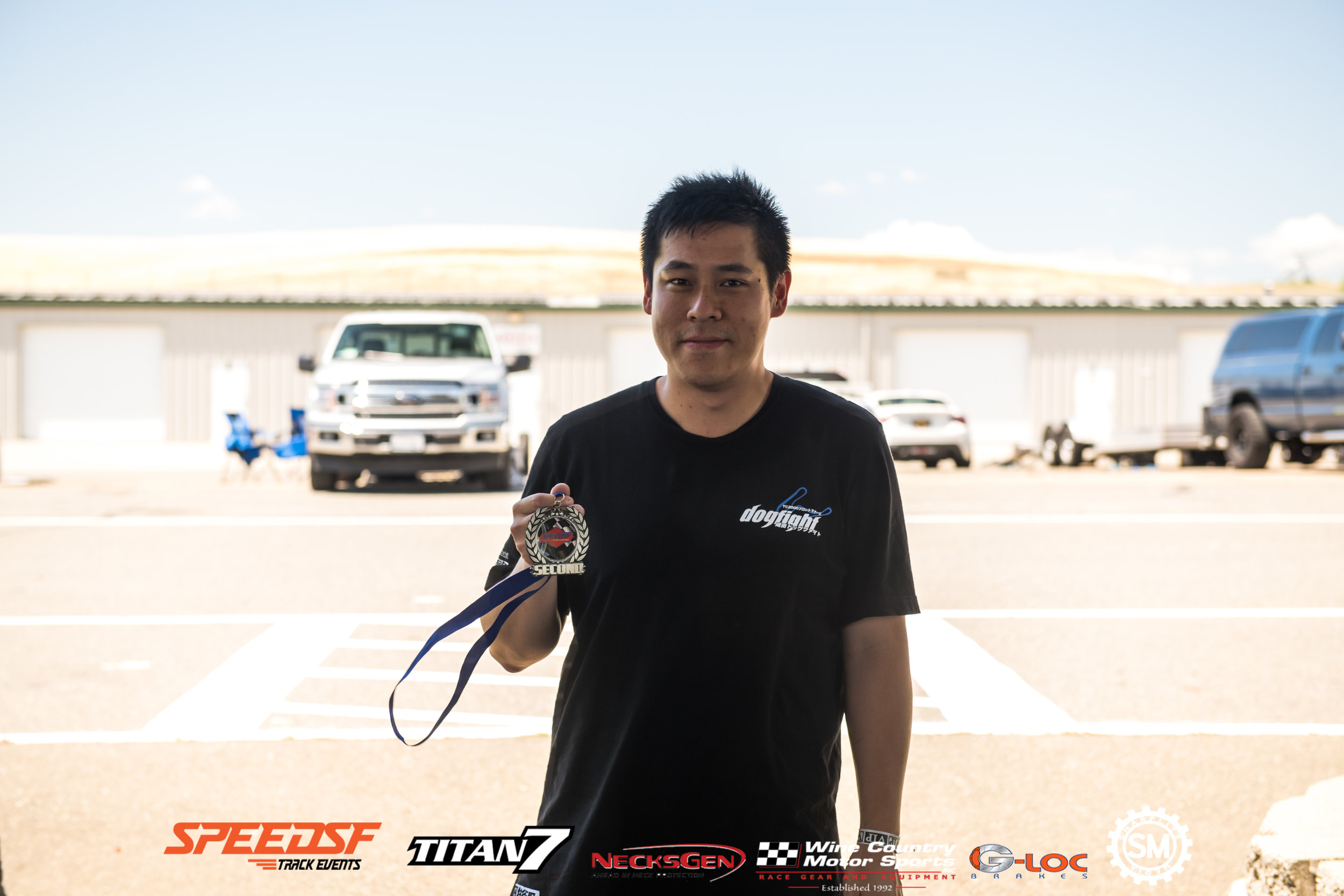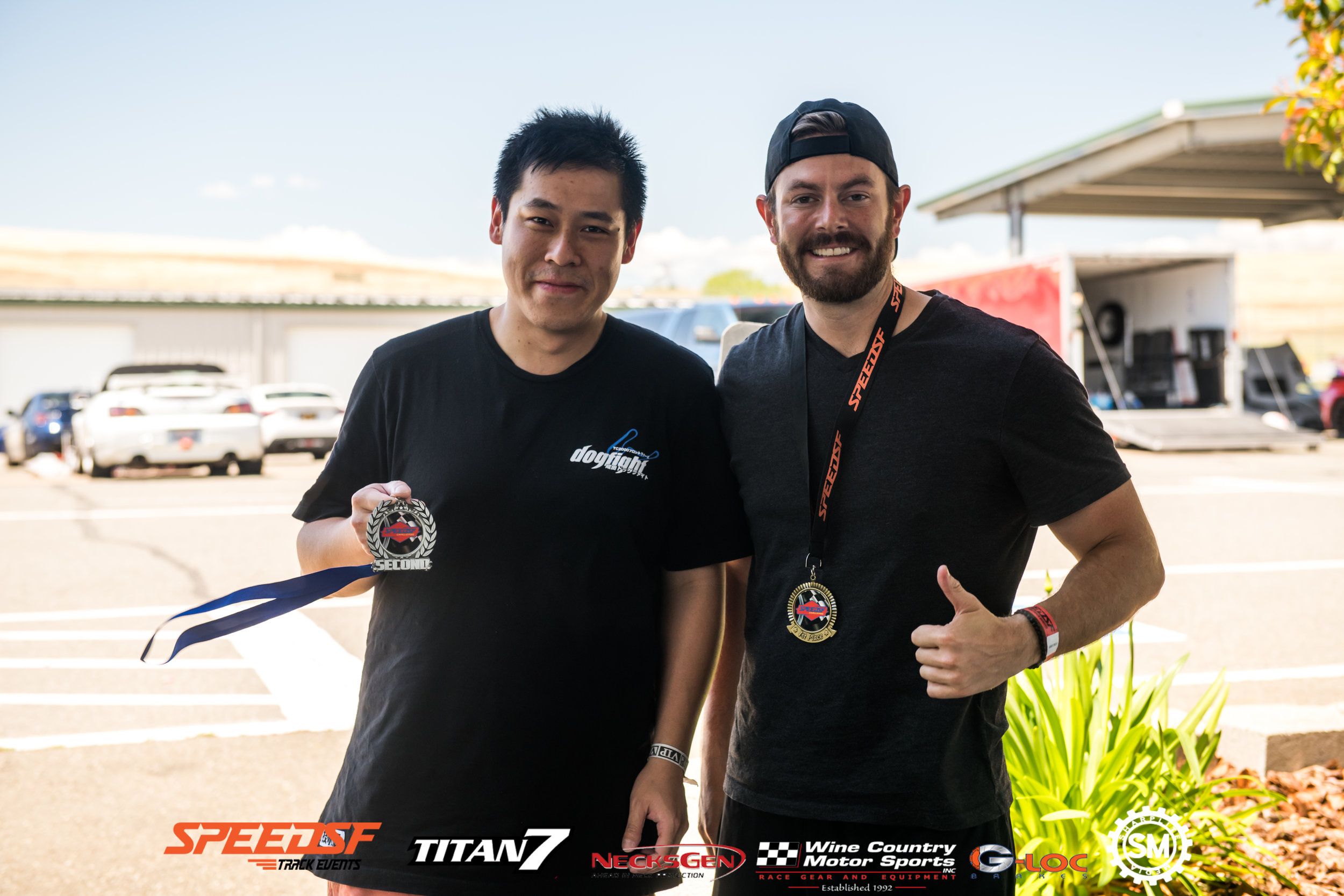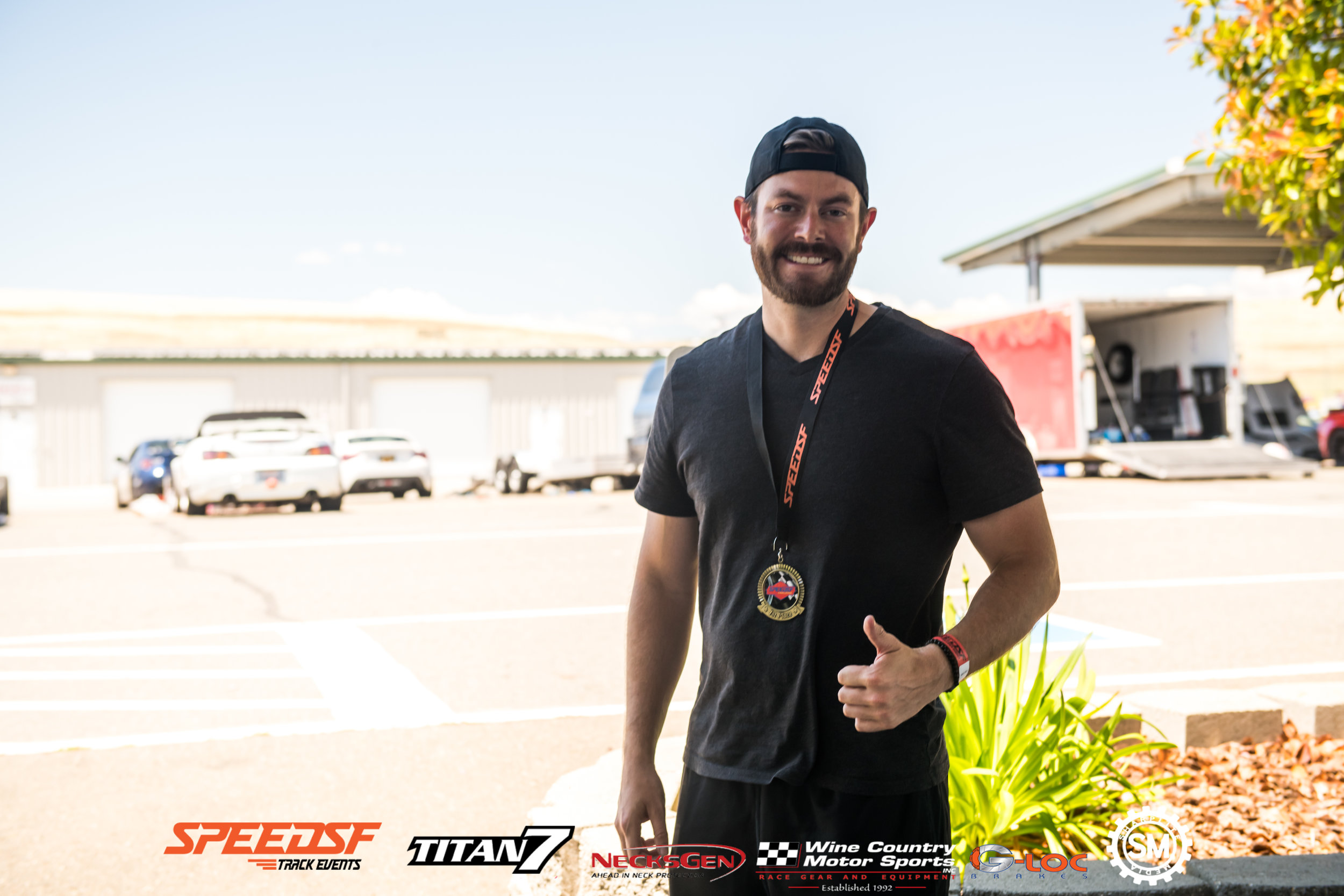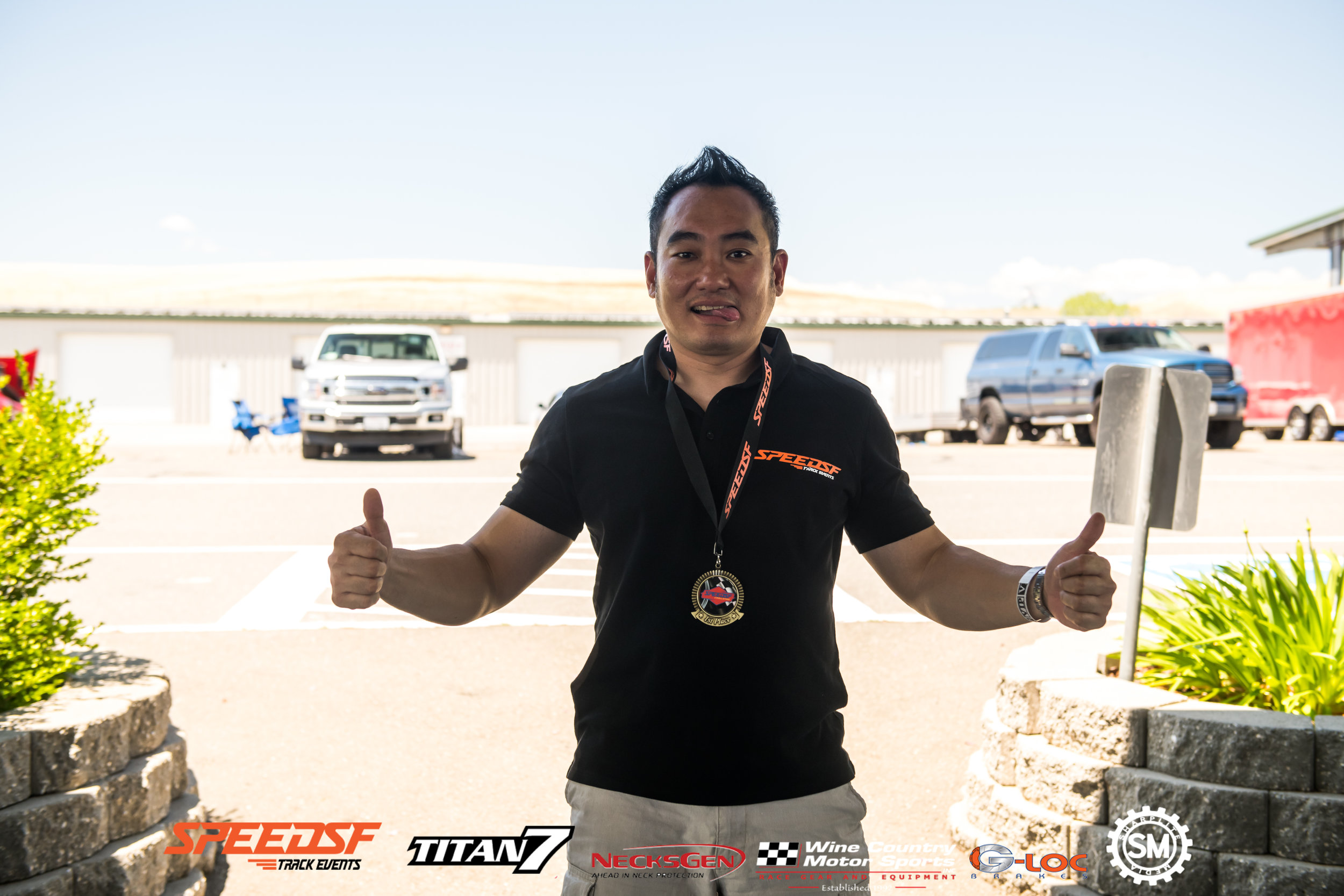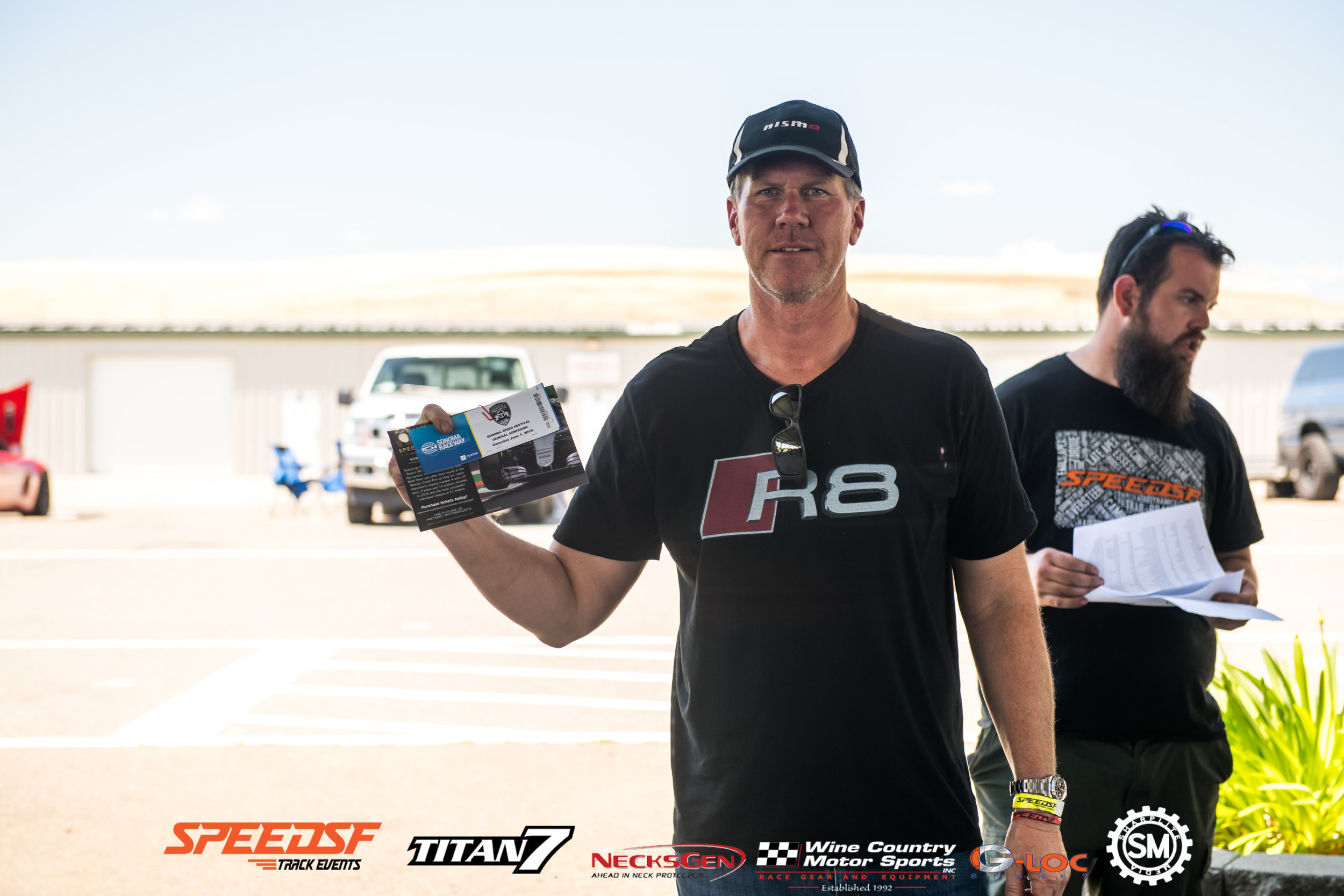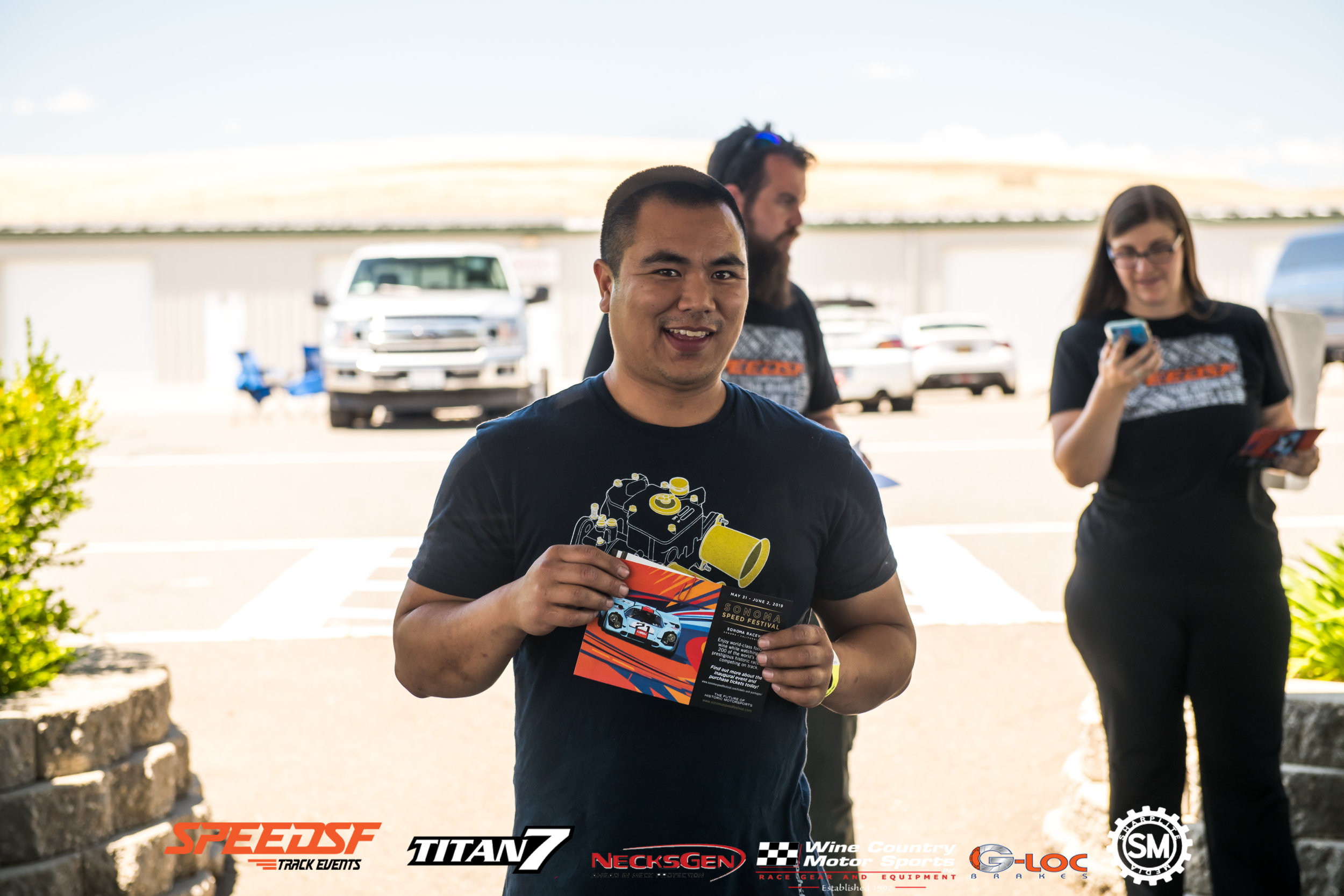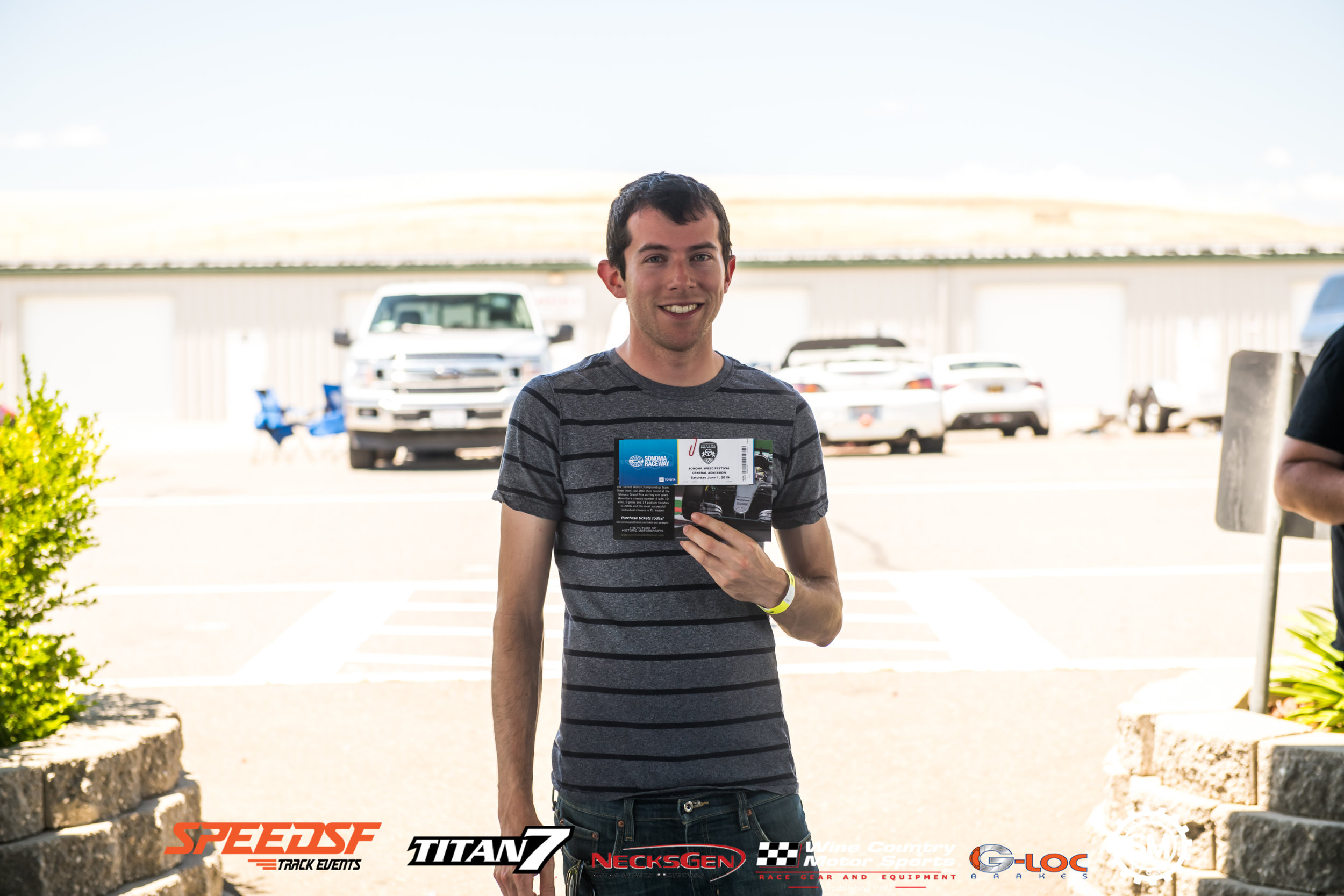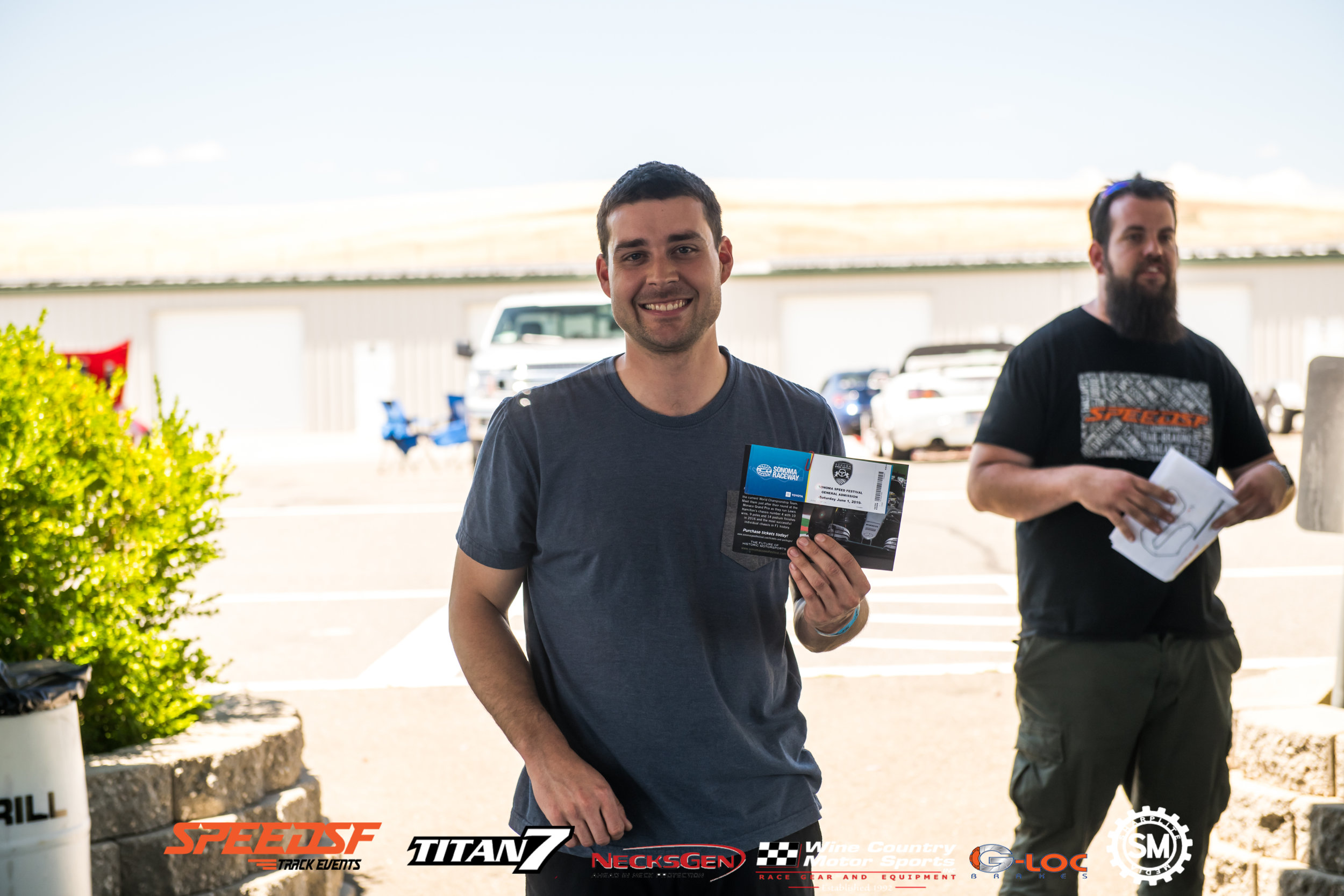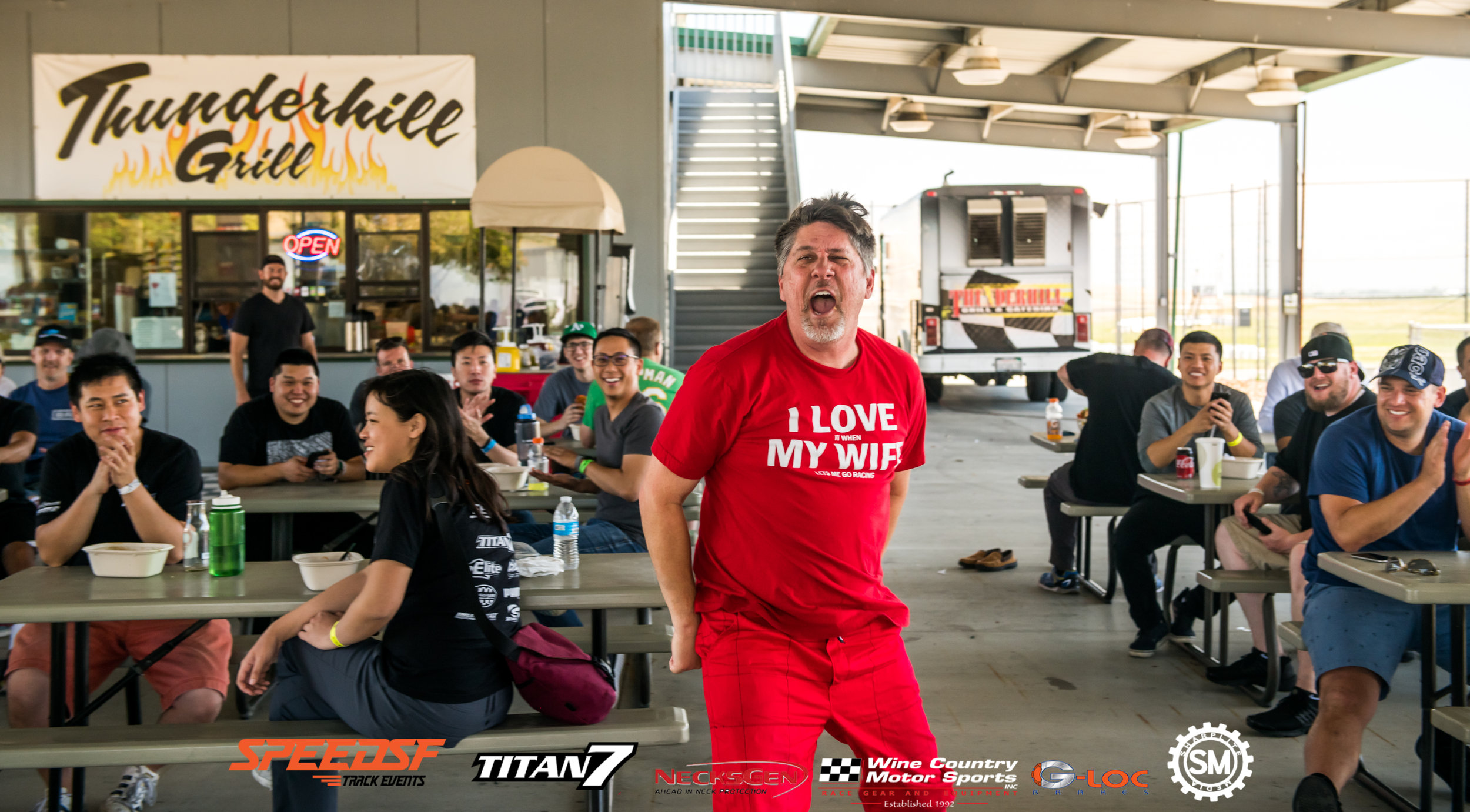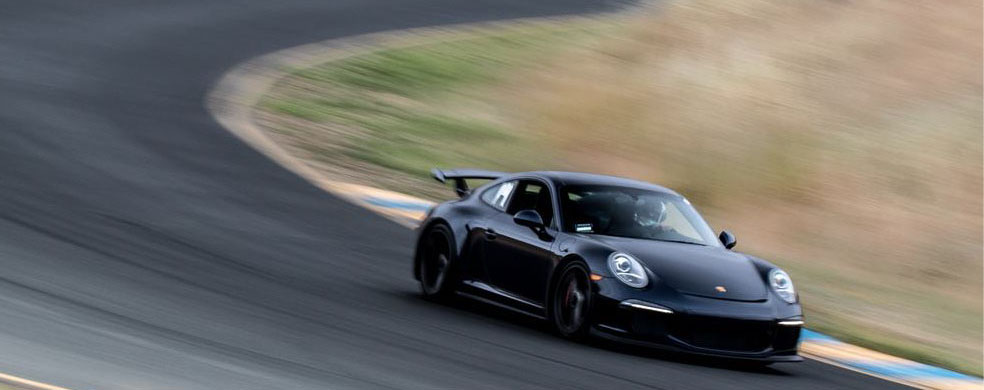
Speed SF Challenge 2023 RECAP
Close fields, dark horses, and lots of new talent made this year’s Challenge one for the record books.
Speed SF’s committed clan of drivers kept the Challenge season full of excitement this year. The competition was fierce throughout most of the classes, the fields were full, and the number of new course records — nearly a dozen — proved the rapid rate of evolution, both from car and driver.
In S1 and SX, Steve Melson was our standout. His more-is-better approach to track days; running his McLaren 765LT, his Audi R8, and his Mercedes GT S simultaneously, proved he knows how to make the most of his (seat) time.
Unfortunately, his busy schedule prevented him from attending the required number of events to qualify for a podium place, but his occasional appearances were filled with laps thanks to the triple-session approach he’s made his own. Still, even with relatively few appearances this year, Steven was able to set a new S1 record at Laguna as well as a new S2 record at Thunderhill West. We look forward to seeing him next year.
Steven’s McLaren is, without a doubt, the fastest stock car currently in our ranks.
In S2, George Brooks, a newcomer to our series, established himself as a front runner from the start. His potential was clear after winning the second event, and the combination of consistency and his C7 Corvette’s acceleration kept S2000-driving Champion Gary Yeung on his toes. George's early-season pace wasn’t a fluke, either – he proved himself quick at numerous circuits with front-running positions all throughout the season. In fact, George did not miss a single event this year.
His commitment paid off; culminating in a double-points victory at the season finale at Laguna. Though George’s effort could not beat Gary’s outright pace in 2023, we have no doubt George will give Gary and the rest of the S2 contenders hell this year.
A simple Corvette and good support helped Thomas find his potential quickly.
Newcomer Thomas DiGioacchino rounded out the podium. His C5 Corvette and his driving improved considerably over the course of the season, and his five podiums stand as testament to the fact that, even with relatively little experience, putting yourself in good hands can help you hone your craft quickly.
On top of the regulars, there were four reclusive geniuses making up the ranks this year — each of their one-off wins kept everyone guessing. Seigo Ma (S2000), Steve Melson (Mercedes GT S), Kai Anderson (Camaro ZL1), and Tailai Lihe (Supra) might not’ve been in attendance every weekend, but they didn’t need to be to stand at the top of the podium.
In S3, we saw the closest title battle among any of our classes. It was Spencer Kimball and his well developed E92 M3 who eventually took the crown, but Legend Brandenburg in his modestly tuned Supra kept most of us guessing. The title wasn’t decided until the season finale — where the difference between these two was a mere eight points. Legend took the win that day, but it wasn’t enough to offset Spencer’s dominant performance from February to December.
Spencer’s M3 has had all its issues addressed and now puts in remarkable times consistently.
Tailing closely behind, mainstay Joe McGuigan in his recently sorted IS-F made the last step of the podium, and, it should be said, kept Legend and Spencer honest throughout the season. Also worth a tip of the hat was Ken Cemo, who attended every event and drove his Camaro exceptionally well. His upbeat attitude and commitment slate him as a future podium finisher.
Sean’s tidy driving made him the dominant driver in S4.
The S4 field was by far the largest, with thirty-three competitors and a close battle between S2000s at the top three steps. Sean Win-Yepez followed the wise words of Aki at Blacktrax and kept his S2000 simple and the changes minimal. Additionally, Sean started running double sessions to maximize seat time. This allowed him to run most of his best laps in the Gold Open Passing group, which reduced the pressure and made it easier to set a hot lap. With seven wins and eight new lap records at the end of the season, Sean’s holistic approach had clearly paid off.
While Sean set the S4 standard this season, it was wildman Nate Hackman in his milder S2000 sliding close behind and providing the entertainment. His flamboyant driving style was not merely exhilarating to watch, it was seriously fast; his bests often just marginally behind Sean. Maybe Nate will max out his allotted points in 2024 and give Sean an even tougher time.
David Haro snuck in a solitary win — another gold for the S2000 clan. We anticipate the other S4 contenders — Scott Smith (987 Cayman) and Patrick Chio (E46 M3), winner of the S3 season finale — nipping at Sean and Nate’s heels throughout the coming season.
Patrick (M3) added a passenger seat in order to run in S4 for the final event and showed most of the class his heels.
In S5, the two heavy hitters in the lightest cars traded positions all season. In addition to setting a slew of records at Thunderhill, Tyler Packard took his RX-8 to the title, but that was not certain until the final few rounds. S5 is anyone’s game as long as they show up frequently, as Patryck Sworonski (NA Miata) proved with an equally impressive series of wins and seconds. In the end, Tyler attended one more event than Patryck, and that made all the difference.
We hope to see both new and familiar faces ready at Laguna Seca on February 18th, where this year’s Challenge will officially begin.
On a technical note, our Competition Director Scott Smith has made a few modifications to both base and modification points to further converge on competition parity.
To view our class calculator for the 2024 season, please follow this link.
Ken's 240SX: Twenty Years in the Making
Twenty years after picking it up, Ken brought a revitalized version of his old track car back to Laguna. It’d sat for a decade as Ken raised a family, but late those nights after the kids went to bed, he studied whatever he could and amassed a collection of track parts. When he finally got a chance to give it another lease on life, he didn’t cut any corners.
A student of motorcycles, Ken Yu spent his formative years tracking two-wheeled vehicles at Thunderhill, Laguna, and Sonoma. Eventually, he grew tired of taking spills and started looking for a four-wheeled way to get his fix. Specifically, he wanted something easily modified and cost-effective. Back in 2001, 240SXs could be found for nearly nothing — especially ones with blown motors.
A Zilvia.net posting led him to this 1989 hatch, which had been sitting for some time and needed a little love. Well, a lot of love. Aside from the blown motor, there were some serious issues contributing to the low cost of the car. “Someone left a burger in the back. There were maggots everywhere!” Still, $1,500 was a steal.
He started with a basic set of suspension upgrades. Whiteline sway bars, Megan Racing track coilovers, SPL lower arms and tension rods.
Out came the interior and in went the vinegar solutions. Then came a stock SR20, Z32 brakes, Tokico shocks, 5Zigen wheels, and Federal tires for plenty of fun in those halcyon post-college years. And this first round of modifications didn’t break the bank; many youngsters could swing these back then — no pun intended. When a full S13 front clip only cost $2,500, it was not too hard to put a quick 240SX together.
Rather than take the typical drifting route, he decided to make his 240SX corner. At 2,600 pounds with ~200 to the tires, the 240SX could graze 100 at the end of Thunderhill East’s front straight. It was nimble enough to get around many autocross courses, too.
By transplanting the motor without replacing the coolant hoses, Ken blew a pinhole leak in a coolant line at Thunderhill in the middle of July. Three of the ringlands broke, sending shrapnel into the head. He managed to limp the car all the way home to Hayward with regular coolant top-ups, but the SR was toast. He rolled it into the back of his garage with hopes to quickly replace the motor, but he didn’t bet on the next chapter of life taking him down a very different path than he’d pictured.
Ken got married, had two kids, a dog, and bought a house, so the track toy no longer took precedence. However, he kept the dream alive over the next five years by amassing a small stockpile of go-fast parts and tools.
Starting seven years ago, from ten to midnight — after the kids had gone to sleep, Ken would sift through his parts pile and make small steps towards rebuilding the car. Megan Racing coilovers with Swift springs, a pair of Sparco seats, an extensive cooling package, and a bolt-in cage set the tone: it was going to become a full-on track car built on years of forum trawling.
With his new CD009 on the floor, Ken spent a couple nights fitting Jun Flares and GarageMak overfenders.
Lots of research was needed to find out all the desired suspension settings for the 240SX — no darling of the track day community. With relatively scant information available for track-oriented S-chassis, he had to consult some of the video library he’d amassed over the years. “I’ve been watching Video Option since Volume 12.”
As this would be a fat-tired track car with a need to put power down better than what a stock S13 ever could, he had to identify the flaws of the suspension setup.
Up front, he added a set of Geomaster knuckles to lower the roll center for improved camber and toe curves. Along with that, he threw on most of the S13 parts in the SPL catalog, Techno Toy Tuning’s lower front arms, and even an S14 rear subframe for slightly better geometry and a wider track. Thankfully, retrofitting the older car with this S14 part only required a set of conversion bushings.
It would have to stop well, too. There were the two-piston rear Brembos sourced from a 2004 Subaru STI and mated to two-piece Girodisc rotors with Carbotech XP12s. Installing them was a cinch, too — almost a bolt-on affair.
At the front, the Core4 Motorsports Wilwood six-piston with Carbotech XP16s fulfilled the same need for easy modification, while offering far more reassurance than any hodgepodge of other car’s parts. Any track rat loves knowing that the kit on their car has been used by Core4 on their Silvia build for AER endurance races.
“Collecting all those parts was what kept the dream alive.”
When the ball was officially running, he called on two respected old school shops to help him rebuild the one piece he didn’t replace himself. Lonnie Jenson Co increased the SR’s bore to 86.5 mm and assembled the bottom end with Eagle rods and CP pistons. Performance Options rebuilt the head, while Ken added HKS Step 3 camshafts and dual shim rocker guides to keep the head from vibrating itself to bits at higher revs.
With a whole new fuel system and a Link G4X standalone ECU to decide on the right blend, Ken knew that he’d be stretching the stock gearbox to its limit. A Mazworx conversion kit, a CD009, and an ORC twin-clutch disk made up the the beefy new drivetrain — more than strong enough to handle 360 horsepower at 310 lb-ft at 5,500 rpm. That was sent back to an S15 helical differential with a 4.3 final drive. The combination of this gearbox and rear end resulted in explosive acceleration.
After bolting in and tuning the new powertrain, the car would hook when pointed directly ahead, but the lack of compliance over surface variations caused Ken a few spins. At first, Ken struggled to find much grip coming through Turn 3 and 3A at Sonoma. “The inside wheels kept losing contact due to the lack of droop and suspension compliance. The solution was to ensure 30% of the suspension travel was reserved for droop through the helper springs,” Ken noted.
With more toe-in at the rear and a TCS Sportline rear wing, the car’s stability improved at higher speeds and under heavy braking. Being heavier in the front than the rear, it still gets a little light over the crest of Laguna’s Turn 1, but it’s less than vicious. The wingless iteration felt like it might bite his head off.
To expect much more from the projet would be unfair. December 30th was the first time he had this car on track in over a decade. And, wisely, Ken wanted to study the ways to get a dependable car out on track first.
Clearly, Ken’s done his homework. The engine manages temperatures well for a turbo car — admittedly, only cold-weather testing has been done so far, but it’s likely cooling won’t be a problem except perhaps on the warmest days.
The geometry is improved, the drivetrain handles the horsepower well, and the maintenance it requires is relatively low for an old Nissan. There’s also little tweaks that show an attention to detail and an emphasis on presentation, like how the ISR exhaust extends far enough to avoid blackening the bumper. It’s pretty — and that’s not always a great descriptor for a 240SX with bolt-on over fenders.
The attention to detail and insistence on putting reliability first will make the car’s issues easier to diagnose. However, half the car’s ancillaries are OEM SR20, so time will tell how well they’ve weathered the elements.
It’s clear Ken’s laid the right sort of foundation. Coilover testing, adding a front splitter, and increasing body rigidity are the main items on the agenda. Seam welding around the hatch and the doors — two massive apertures for such a small body — should make another massive step forward in making this middleweight handle well. Buttoning it up will take time, but Ken’s already sunk two decades into this car and his enthusiasm for tuning the 240SX hasn’t diminished one iota since the start. In the grand scheme of things, what’s another year?
Thomas' Corvette: In Good Company
In only two years, Thomas has learned more than most will grasp in a decade of track days. Having a solid, dependable C5 has helped him put in his time, and having Elite Performance as a resource has made fine-tuning the car so much simpler.
Finishing out his senior year of high school, Thomas DiGioacchino listened to a friend’s suggestion and scrounged the money together for his first track day. Crap tires, decent weather, and a near-stock Mustang GT were all he needed to find that thing that’s been steering his life for the last five years.
Thomas decided to pursue the mechanical side of things and enrolled in Ranken Technical College’s High Performance Technology course with a focus on Chevrolet LS engine design.
That emphasis allowed Thomas to build a motor for a car he hadn’t yet bought. It began with an iron-block LQ motor and LS1 heads, and as the LQ block only displaced 5.3 liters, he bored and honed it out to 5.7 liters to fit the LS1 head. With forged pistons and rods, oil pan baffles, and the other pieces that made it a 500-horsepower workhorse, he unknowingly set the tone for the rest of this build.
The car itself came next. During his final year at Ranken, he found himself a base 2002 Corvette within his price range and tucked it away in his side yard until graduation, when he loaded up his truck with his furniture, his motor, and began his drive from Missouri to his hometown.
Back in San Mateo, he reached out to his then-limited network for car parts and, with some luck, gainful employment as well. As he’d relied on Elite Performance to direct him towards a few bolt-ons for his Mustang, they were the natural resource to consult. One day, while speaking to Elite’s Melody Cannizzaro about getting his Corvette aligned, she provided up with a job opportunity. He didn’t have to think twice.
Working with Elite gave him access to one longtime customer who happened to be offloading some go-fast bits from their recent Corvette build. Thomas was able to grab a set of Titan 7 T-S5 wheels for peanuts, and then came big brakes, bushings, and a bucket seat. Soon, the plans for keeping the Corvette tame and civilized went out the window.
Wisely, he went for safety equipment next, and decided that this car would only help him become a truly quick driver if it was reliable first and fast second. “I knew that seat time would be the priority if I was going to run with guys like Gary Yeung,” he said.
That said, it would be silly not to make use of the big motor sitting in his parent’s backyard. Soon, it found a new home in the Corvette’s engine bay, and Thomas took the half-built C5 to its first track day, where it ran without a hiccup. It ran well the second day, too, as well as the third. Clearly, he’d paid attention in class.
Aside from the minor repairs any twenty-year-old car needs, it was the epitome of dependable. His focus was on learning to drive the car better, but, to his credit, a C5 on stock suspension does leave a lot to be desired. It would lean excessively, and under trail braking, it had a habit of snap-oversteering.
After several months of saving, Thomas bought a used set of JRZ two-ways. While he was at it, he pulled and refreshed the entire drivetrain, then upgraded the springs and clutch packs in the OE LSD. Those modifications made the Corvette much more progressive at the limit, regardless of whatever cheap tires he happened to be running.
When he found the time to fine-tune the suspension, he increased the rake to increase rotation at corner entry. A square 295-35/18 setup was the cost-conscious tire option, and he stretched every set until the cords showed. Still, the car was mostly neutral with a hint of understeer in the faster stuff thanks in part to his APR GTC-300 wing.
As his confidence grew, he started to recognize that driving around on worn rubber was no longer the training tool it had been, so he sprung for a set of AR-1s and turned his first sub-two-minute lap at Buttonwillow 13CW. “I had to fight it the whole way around, but I got 1:58. A sloppy 1:58, but still,” he said.
Good tires helped, as did having a hare to chase. With Gary Wong driving his S2000 off into the distance, Thomas was able to see where he could push harder than he believed was possible. It’s a huge help having an experienced driver luring your outside your comfort zone.
Logging that first milestone lap gave him the confidence to try the Speed SF Challenge the next weekend at Thunderhill’s five-mile configuration. He did his homework and studied several record laps, focusing on curb usage. With Gary Yeung giving him some basic feedback the day of, Thomas saw his lap times fall by as much as four seconds. In the end, he was able to clinch third place in S2 — just half a second behind Kevin Schweigert in his BMW M2.
That success turned Thomas into a sponge. His subsequent lapping days have been spent studying data and having the experienced drivers like Joe McGuigan critiquing his onboard videos. “Joe’s been a huge help; giving me pointers on which gears to use so I can put the power down more easily.” The result of this traction-conscious approach to driving is evident in the footage below:
He’s also benefited from picking a short list of prime parts. In fact, he’s never bent his Titan 7 wheels or broken any suspension parts, despite hammering curbs and dropping wheels regularly. Maybe it has something to do with emphasizing robustness with this build—a tip he picked up from his mentor, Gary Yeung.
‘I’ve learned a decade’s worth of motorsports knowledge in the last two years. Everyone’s been so supportive, and I owe my progress to all of them. They’ve pushed me to improve as a driver and a builder—especially Gary. Watching him work inspired me to raise my game, and I think it shows. My Corvette’s overbuilt, so I can push it all day. Like Mango, my Corvette is a workhorse that’s made it possible to attend almost every Speed SF event in the last two years. All I do now is change the fluids and try to find out where I can go faster.”
Parts
JRZ motorsport coilover conversion
Titan 7 T-S5 wheels 18x10.5”
Trackspec hood vents
Dewitts radiator
Spal fans
Improved Racing oil cooler
Improved Racing oil pan baffles
Prothane polyurethane bushings
APR GTC-300 wing
APR splitter
Fenton's Integra Type S: A Change of Heart
While he was on the fence for a while with Acura’s bigger, boatier Integra, the Type S had enough of the right stuff to convince him to try this front-wheel drive super sedan.
“I used to be the biggest hater of FWDs,” he started. Despite his introduction to cars coming in the form of a Civic, he rapidly transitioned into rear-drive platforms when he took up track driving. After a pair of S2000s, he moved onto Porsche Caymans, 911s, and, most recently, a Subaru BRZ. What they all had in common was their rear-drive layout, which cemented in Fenton the belief that all other drivetrain configurations were beneath consideration.
Lately, he’s had a change of heart.
It was an unexpected decision to sell his BRZ. Oil starvation issues concerned him, but he had also owned the car for eighteen months and was starting to wonder what decent replacement was out there—something new, fun, and practical between fifty and sixty grand.
Actually, he was a little more particular than that:
1) It had to be track-capable.
2) It had to have been endorsed by Throttle House, savagegeese, or TheTopher.
3) It had to be at least as practical as the BRZ.
4) It couldn’t break the bank in the event of an incident.
Not much in that price range met his requests, but the faster Hondas, despite driving the wrong axle, were fairly close. But it was more than the drivetrain that deterred him at first.
“I remember when the base Integra was first announced, I thought Acura was disrespecting the Integra name. It looked like a boat; it had no resemblance to the DC2 or the DC5 and, I believed, was probably an overpriced Civic.”
A few months later, the Integra Type S was announced, and Fenton found himself torn. “I started to love the way it looked. Even though the general shape was the same, they tweaked the right areas to make it look like a driver’s car. This had proper flares, an aggressive rear diffuser, a vented hood, gaping intakes—it was unique and purposeful.”
“The Integra wasn’t really on my radar until, one day, I was bored at work and decided to configure a car on the Acura website. I specced out my ideal Type S, and figured I’d add my email to their list—why not?
The next day, Acura of Pleasanton, just seven miles from my house, contacted me and offered that exact car at MSRP plus $1,000 of non-negotiable dealer add-ons. One prospective buyer had backed out and my name came up on their list.”
At the time, he’d been considering the FL5 Civic Type R, though the markup was significant. Plus, the car has a number of creature comforts and tuning differences over the Civic that makes it a better daily. An Integra-specific re-tune of the K20C1 engine, shared between the two, provides much more mid-range torque. Additionally, the Integra’s electronic dampers benefit from new tuning to make it a more supple road car.
The case in favor of FWD was growing, but he still had his bias to overcome. “I used to believe that, if you cannot powerslide it out of a corner, it’s not a sports car.
However, he couldn’t find anything else under $60,000 that is spacious, has a backseat, has a manual transmission, is track-capable, and is rear-wheel drive. I realized that, in order to hit my price point, I’d have to make one or two concessions.
I figured I’d at least give the Integra a try. In person, it looked fantastic, and it felt like a $50,000 car inside. It was something I could live with on a daily basis. The shifter is nearly as good as a Honda S2000’s, the ride quality is phenomenal; with the dampers in comfort mode, it rides almost as well as a luxury car. It has minimal torque steer and phenomenal brakes. After driving it around the block, I was sold.”
He bought it that day.
Since then, he’s beaten nearly all of his previous bests. At Laguna Seca, Thunderhill East, and Thunderhill West, he’s beaten his bests in the BRZ by 2 to 3 seconds. Some of that has to be down to Integra having twice the torque, but, as Fenton’s learned, a FWD car might be easier to come to terms with.
“I can lean on the car more confidently, whereas the BRZ would break away more abruptly. I know that, on turn-in, it’s going to understeer, and while that might sound boring, it means I can get up to speed a little bit faster, especially on cold mornings.”
At Laguna Seca, he drove the tires off his car—literally. Underinflating the PS4S tires to try and keep them in their ideal range seemed sensible, but during turn-in to Turn 6, the front-right tire debeaded. “I only stopped a few feet from the wall. It taught me not to track 30-profile tires with soft sidewalls any longer.”
If there was one issue beyond that, it was the lack of support from the stock seats. “The OEM seats are inadequate for track driving; they are the same design as the base Integra with very little bolstering. The OEM FL5 seats are supportive and soft enough for daily driving and track duty. I’d happily exchange the Integra seats’ heating and electronic adjustability for the FL5’s greater versatility.”
And so he started adding the first round of modifications, beginning with a set of 18 x 9.5” + 45 Apex VS-5RS wheels wrapped in Kumho 265-35 V730s (the same as he had on his BRZ for fair comparison), as well as a set of Ohlins Road & Track coilovers.
The Road & Tracks have a reputation for being more road than track, but the Integra-spec 6kg front and 10kg rear springs are much stiffer than what’s normally offered. “The spring rates have helped a lot with tucking the nose. You can get consistent mid-corner rotation with a lift-off the throttle.”
Along with those mods, he added some Castrol SRF fluid and a set of Endless ME20 pads from RHD Japan since the yen is weak now. Their torque rating is much higher than the standard pads, which were at least resilient enough to run sessions at Laguna without fade.
With the first round of modifications in place, he took it to Thunderhill West and ran a 1:24 in his second session—some 2.5 seconds faster than he ever went in his hardcore S2000 on Federal tires. “It felt adjustable; it wasn’t a battle against understeer in every corner. You can transfer weight with the inputs and rotate the car in small, measurable increments. That’s something I find a modern GTI just won’t do.”
Most recently, Fenton ran Thunderhill East Bypass for a day that he found encouraging, if not a little frustrating. After spinning in the first session and getting the black flag, he found himself without traffic in the second session and logged a 2:01. “I believed I could find another one to two seconds in the third session, but one of the flaws of the car held me back.”
In order to completely avoid fuel starvation, the tank needs to remain above half-full. After dipping below the middle hash five minutes into his third session, he spent the remainder dealing with fuel cut. He couldn’t leave too miffed; he’d only had one real session to push the car, and with that 2:01 indicated on his Garmin, he’d already gone three seconds faster than he ever had in the BRZ.
Considering he’s only done three modifications and is already three seconds faster than the BRZ, he has no regrets. “I might not be powersliding it everywhere, but it’s taught me that there are other, subtler ways of manipulation.”
Beyond all this, I can drive to and from the track in complete comfort. With radar cruise control, lane-keep assist, blind spot monitoring, heated seats, a premium ELS sound system, and even a sunglasses holder—I’ve never been so comfortable on my way to and from the track before. Going from a partially gutted S2000, to my mostly-practical BRZ, to this, I’ve experienced three distinct improvements in comfort. Plus, I can ferry people around. There is plenty of space for four adults—roughly the interior space of an Accord from fifteen years ago.”
It’s still a little too quiet to hear with his helmet on, so he’s planning on upgrading to a modest exhaust that should make it easier to gauge where he is in the rev range, reduce backpressure, and find a little more grunt. That said, it’s not lacking in that department; it has more than enough torque to run third gear through most of Thunderhill West. Oh—it could use more front camber.
In Fenton’s eyes, it deserves to be seen as Acura’s flagship sports sedan—it’s a deserving successor to the DC2 Integra Type R. “It’s a compromised car at the end of the day, and yet they have kept all those compromises from adversely affecting driving enjoyment. To me, it’s the perfect compromise.”
Matt Paige's C6 Z06: The Track Rat’s Idea of a Hybrid
Rather than chase big power, Matt Paige made the necessary adjustments to this cost-no-object Corvette track car to make it reliable, approachable, and sexy.
Photo credit: APEX Staff Photographer @victorgiang
There’s something refreshing about watching the onboards Matt Paige posts all too infrequently to his YouTube page. It only takes a couple corners to see evidence of a well-sorted car in action. Soft turn-in, great traction, and a real sort of stability that gives him the reassurance to push hard are traits we can appreciate from the start of his lap linked below.
By addressing every performance-related department in more or less equal measure, the car has a wide array of strengths which make it a versatile machine most speed freaks can appreciate. It’s a car that’s civil enough for short drives on the street, despite being tuned and tweaked to drive full lapping sessions without worry.
The track-street mix doesn’t place much emphasis on comfort, but it does make sure the factory bodywork is retained while using the airflow over it more effectively. For instance, the rear brake ducts are repurposed to direct air towards the gearbox and differential.
The vented hood isn’t stock bodywork, but it does fit the whole scheme as it’s painted the same shade of yellow.
Up front, the LG Motorsports splitter removes the front airdam and, in conjunction with a vented hood, helps the hot air inside the engine bay evacuate. Downforce and cooling addressed in one fell swoop—all without disrupting the soft, curvaceous shape of the C6.
That two-birds-one-stone approach could be seen in the greater build objectives with this particular Corvette. First, Matt wanted to show what his company is capable of. Few cars really fill the dual-purposer role, but Laptimz Motorsports used all their knowhow and a considerable budget to make it a track guy’s idea of the ideal hybrid.
The second objective was to demonstrate the value of a track car that doesn’t prioritize outright speed. Even with the lap times it’s capable of, the build emphasis was on stress-free track work; the company aim is getting enthusiasts onto the track with minimal fretting and frustration.
For that reason, reliability came first. Matt strove to keep the temperatures low through a set of Setrab oil coolers and a G-Speed laydown radiator. To ensure steady lubrication at high lateral and longitudinal loads, he picked a dry sump system from Dailey Engineering. For a milder balance with a hint of push, he chose a staggered set of Apex VS-5RS wheels wrapped in wide rubber—315s up front and 345s in the rear.
That wide footprint easily harnesses the engine’s output, as this LS7 isn’t crazy-powerful by LS standards. With the help of American Heritage heads, a Katech Torquer cam, Katech valves, and a pretty mild exhaust, it makes 525 horsepower and 520 lb-ft of torque—more than enough shove for Sonoma and Thunderhill.
Unfortunately, the retention of the interior pieces and most all the factory bodywork makes this 3,000-pound middleweight a little heftier than most track cars of this caliber. Still, those lightweight wheels, SKF hubs, aluminum hubs, lighter AP Racing brakes, and LG Motorsports drop spindles trim some unsprung weight. It all contributes to a feeling of uninterrupted adhesion with the road beneath. After all, it’s not only about the total weight, but where it’s located.
Photo credit: Trevor Ryan
The result is a car that’s sure on its feet, urgent, stable, and somewhat progressive when it does break loose. Now, the use of a delicate right foot helps Matt stay out of trouble, but he has to tread carefully on cold tires—big 315s have a habit of letting go abruptly if they’re not brought up to temperature before getting abused.
A little Lexan, lightened footwork, and a carbon roof help this Corvette belie its weight.
Even when the car does slide, the fresher suspension and direct feeling through the wheel give Matt enough information to correct snaps and shimmies without breaking a sweat. Not even a slide through the middle of Sonoma’s Turn 10 seems daunting, as seen at 1:28 in the footage above. This surefootnedness helps Matt push hard without trepidation—and feel like a superhero in the process.
Without a doubt, we’d certainly have fuller fields if this is how all track toys were built.
SPEEDSF CHALLENGE - JUNE 7, 2020 - ROUND 4 @ THUNDERHILL RACEWAY (5-MILE)
Introduction
Back again at Thunderhill for the 5-mile configuration! 23 drivers showed up for this fan-favorite track configuration in the land of Willows, CA. With a grid loaded with big-engine boys paired with pleasurable track conditions, it was sure to be an exciting result for all drivers involved. The result? 5 broken class lap records for Class X and Classes S2 through S5!
Class S1
Ah, the story of the German vs. the American, a tale as old as time. This time, however, brute American force won. Justin Moore, in a 2019 Chevrolet Corvette ZR1, took home 1st place with a speedy 03:02.547 lap time while Challenge veteran Jeff Han took 2nd place with his 03:09.349 lap time. Great driving from these fast drivers!
CLASS S2
3 drivers, 3 podium places! Math is fun!
Steve Chi dominated this class with his 2010 BMW M3! His 03:06.045 lap time not only put him in 1st place for this Challenge, but beat out the previous S2 lap record for this configuration by over 2 seconds! A record previously held by Gary Yeung in the Dirty Mango S2000, the 03:08.298 lap time set on May 31, 2019 fell and boy did it fall hard. Great job by Steve Chi here.
Joining Steve on the 2nd step of the podium was Thomas Huber who took his 2017 Porsche 911 through the land of Thunder and put down a 03:19.365 lap time for his effort, while racer boi Chris Lee took home 3rd place with his 03:24.749 lap time in his 2007 BMW Z4M race car
Class S3
8 drivers showed up for this packed class, but of course, only the 3 fastest drivers can take home the bragging rights.
Kevin Schweigert and his monstrous 2015 Subaru BRZ took 1st place on this day thanks to a blistering 03:03.169 lap time - absolutely CRUSHING Gary Wong’s previous fastest lap time of a 03:10.515 lap time set back on May 31, 2019, in his 2004 Honda S2000.
Gary Wong did manage, a year later, to take home 2nd place and also smash his old lap record, so not a bad outing as well. His 03:07.304 during this Challenge put him over 3 seconds faster than his previous best, which we always applaud, so good job here!
In 3rd place, we have Seigo Ma, the e-racing fast boi who threw down a 03:11.317 lap time in his mean green machine Honda S2000, placing him firmly 1 second ahead of Ken Yip who has graced the podium in the past. S3 is the class to watch!
Class S4
What a way to take it home! Sohan Kota became the new owner of the S4 class lap record for the Thunderhill 5-mile configuration thanks to excellent driving in his 2000 Honda S2000, putting in a 03:14.105 lap time, which actually topples Joe McGuigan’s previous 03:17.002 lap record set in a Scion FR-S back on August 30, 2019!
Matt “Track Dad” Belter took home 2nd place with excellent driving of his own. A 03:16.931 lap time in his 2017 Subaru BRZ helped secure his podium place, barely edging out Jason Parraga who put down a 03:17.137 lap time in his 2008 Honda S2000 CR to take home 3rd place!
Class S5
A sorta-crowded class for with 5 drivers, new kid on the block Tony Rodriguez immediately raised eyebrows and broke Miata owners’ hearts with his 03:17.948 lap time, thanks to excellent driving in his quick 2003 Toyota MR2 Spyder! His lap time obliterated King Tang’s previous lap record of a 03:22.884, set back on August 30, 2019, in his NA Mazda Miata.
2nd place driver Daniel Doerr pushed this 2015 Mazda Miata Club Edition over the line with a 03:28.108 lap time while 3rd place dad-to-be Joe McGuigan drove his Toyota MR-S to a fast lap of 03:30.000.
Are the MR2s/MRSs going to overtake the Miatas in this class?! We shall soon find out…
Class X
In a class of his own (literally), this Corvette C6 Z06 hauled ass. A 02:55.548 lap time was the result of some crafty driving by Rich Willhoff. When your engine sticks out of your hood, you’ve already let all the bois and girls know you’re not messing around!
CONCLUSION
Excellent work by our drivers who won their places and set new class lap records! THANK YOU to everyone who participated in the SpeedSF Challenge! For those who are still chasing podium finishes, more seat time, coaching, and watching videos of how to attack the track will certainly get you there!
Round 5 will be here soon! Our next SpeedSF Challenge will be hosted at WeatherTech Raceway Laguna Seca on July 5, 2020. We truly appreciate our sponsors and participants as it would not be possible without them!
Thank you to our sponsors Wine Country Motorsports, Titan7 Wheels, Necksgen, and Charles Schwab for their continued and valued support. Please visit their respective websites to show your support and let them know SpeedSF sent you!
SPEEDSF CHALLENGE - MAY 31, 2019 - ROUND 5 @ THUNDERHILL RACEWAY 5-MILE!
With class-setting lap times thrown down for Groups S1-S4 + Group X, it’ll be interesting to see what August 30th’s 5-mile Challenge will result in. S5 is certainly ripe for the pickings, as the 2014 class record set by Eric Lin in July 2014 stands at a 03:55.190. Someone PLEASE break that record!
A special SpeedSF Challenge for 15 entrants was held on 5 miles of hot asphalt at Thunderhill Raceway. This was sure to be a great day despite the heat, as 90° F was the highest temperature for the day, which meant the asphalt was baking! New and familiar faces alike joined and enjoyed the event regardless of the crazy heat, showing that Fridays were meant for Challenges just as much as Sundays do.
The best part of the day? Multiple records were broken in all but 1 class, setting the stage for a fantastic showing for the 2nd Thunderhill Raceway 5-mile Challenge of the season which will be hosted on August 30. The benchmarks have been set, and with that said, let’s go to the results!
Class S1
Two drivers, two Chevy-branded vehicles. Jeff Cook’s Camaro ZL1 took the S1 first place medal home with his blistering 03:01.828 lap time (which also set the class record for the 5-mile with Bypass!) while Gordon Peng took 2nd place with his trusty 2002 Corvette Z06, putting in a lap time of 03:08.950.
The heat may have been intense, but these drivers didn’t care! Hats off to Jeff and Gordon (hah “Jeff Gordon”) for displaying a good show with their V8 monsters!
Class S2
With 4 entrants for this class, obviously only 1 driver wouldn’t make it onto the podium. The Dirty Mango, which is was as bright as the sun on this particular day, made it onto the 1st place podium… barely. While a hard-earned 03:08.298 S2 class record-setting lap time in the S2000 was in the books, those important 0.240 seconds separated him from 2nd place winner Steve Chi who took his 2010 BMW M3 around the hot course with a 03:10.043 lap time.
3rd plan winner was Geoff Richards in his Porsche 997 C2S, who put in a 03:16.981 lap time - certainly nothing to scoff at! Great driving by all in this class. Steve Melson and his 2015 Audi R8 did their best to match the Porsche but managed to get a 03:17.044 for their efforts.
Class S3
Hot damn, this was a good podium! The Dirty Coconut S2000 of Gary Wong blew away the field with a 03:10.515 lap time, roughly 9 seconds ahead of both 2nd and 3rd place. 3rd place winner Bob Blackwood rung out his Lotus Elise for a 3:19.311 lap time, but ultimately fell .016 seconds short of 2nd Place , as Marcelo Maia’s great drive displayed behind the wheel of this 2015 Porsche Cayman GTS, earned him a 03:19.327 lap time. Round of applause for the drivers in this group - it doesn’t seem like the pressure will be letting up any time soon!
Class S4
An S2000, a BRZ, and an ND Miata go on track… any guesses as to who finished in what place?
Well, it was close, but on paper, the finishing order was expected! Chris Smith took home 1st place with his clean 03:30.705 lap time thanks to all that VTAK, while David Peterson took 2nd place with his 2016 Miata doing a 3:32.290 lap time. E-famous track dad did his first 5-mile event at his home track and did exceptionally well with a 3:33.958 lap time, which is great for an almost-stock BRZ! I heard he’s putting in a couple of mods for the next Challenge! Very good driving from all three podium finishers in this group!
Class X
It’s easy to win if you’re the only one in this class for the day, isn’t that right, Kamui Kobayashi? Regardless, the red rocket of a C6 Z06 Corvette was pushed to the limit, earning a 03:00.882 and fastest time of the day.
Conclusion
With class-setting lap times thrown down for Groups S1-S4 + Group X, it’ll be interesting to see what August 30th’s 5-mile Challenge will result in. S5 is certainly ripe for the pickings, as the 2014 class record set by Eric Lin on July 2014 stands at a 03:55.190. Someone PLEASE break that record!
Another fine job from the drivers who won their places and THANK YOU to everyone who participated in the SpeedSF Challenge!
As we look forward to Round 6 of the SpeedSF Challenge at WeatherTech Raceway Laguna Seca on June 16th, we want to say that we truly appreciate our sponsors and participants as it would not be possible without them!
We thank our sponsors Wine Country Motorsports, G-Loc brakes, Titan7 Wheels, Necksgen, and Charles Schwab for their continued and valued support. Please visit their respective websites to show your support and let them know SpeedSF sent you!
Our next SpeedSF Challenge will be held at WeatherTech Raceway Laguna Seca in Salinas, CA. Again, please check out the event website by clicking here. We will see you at our next event!



